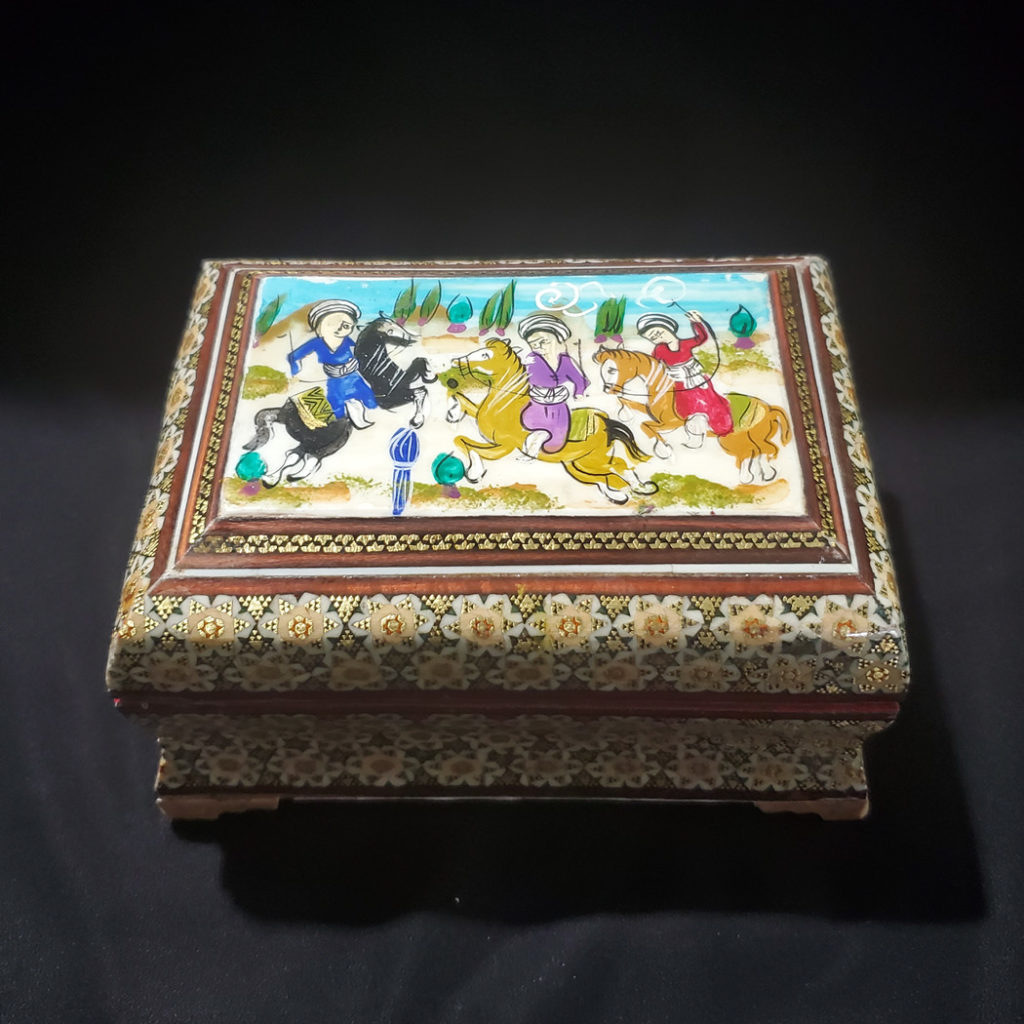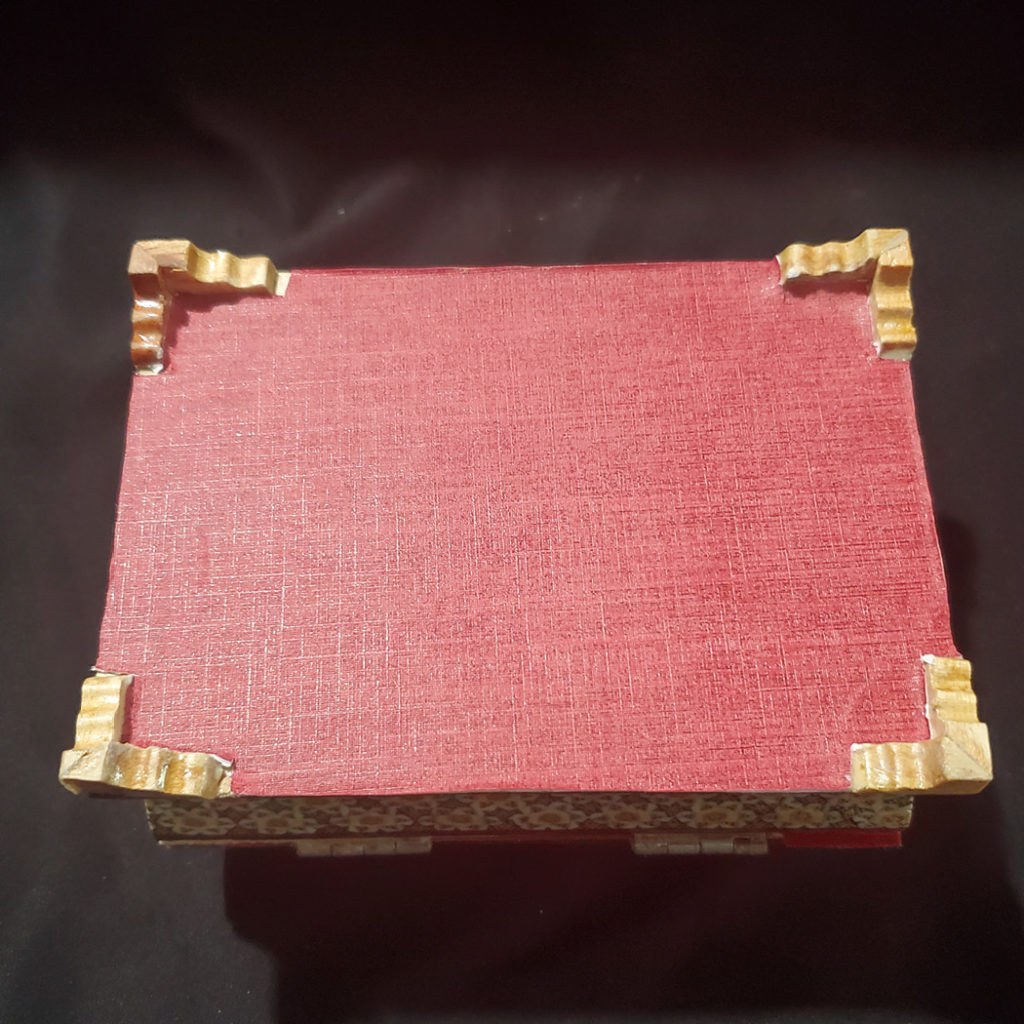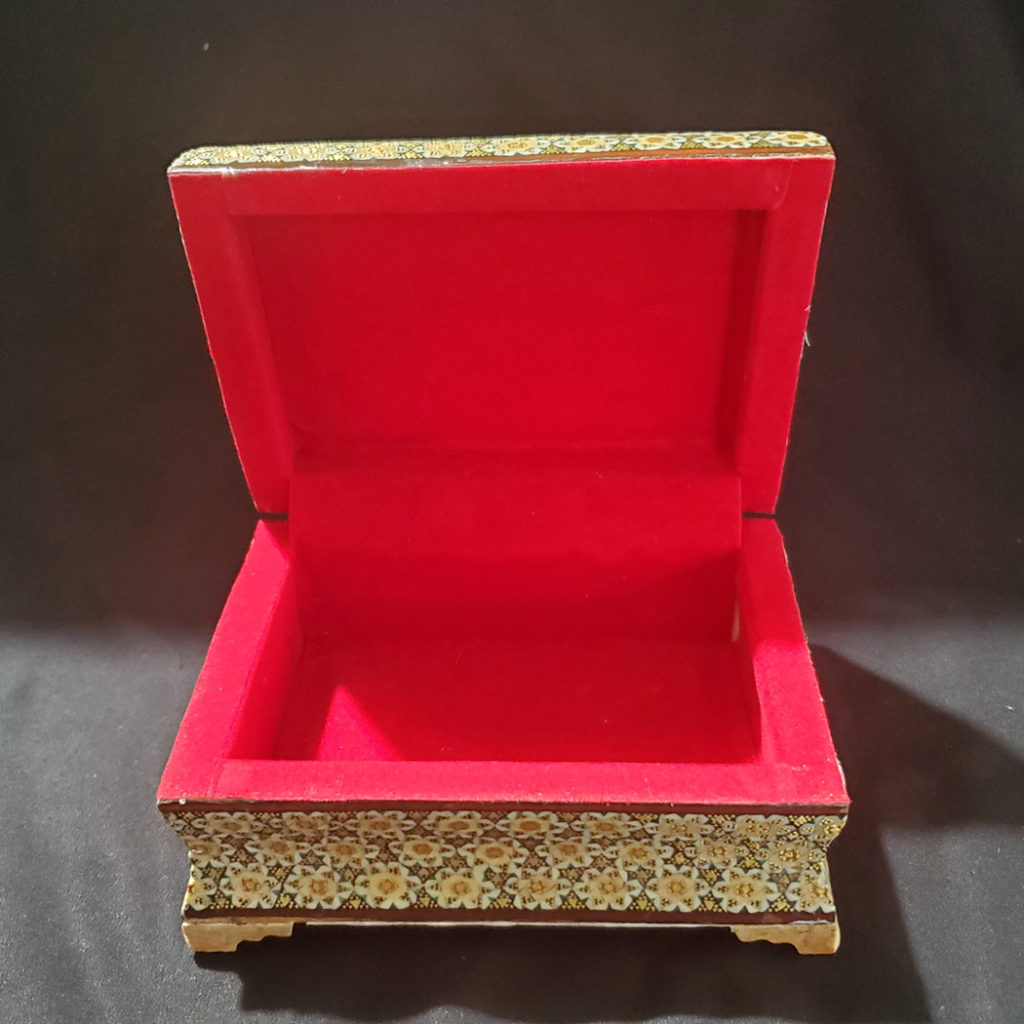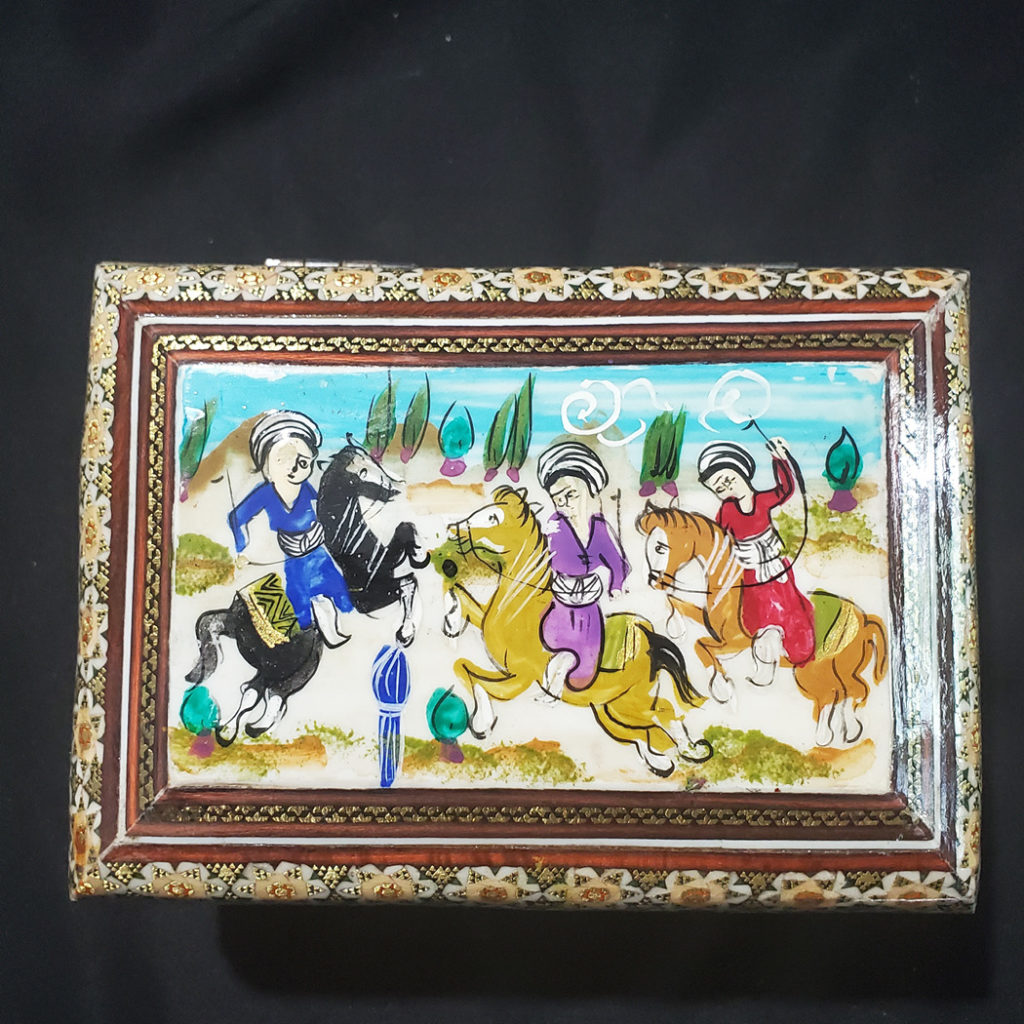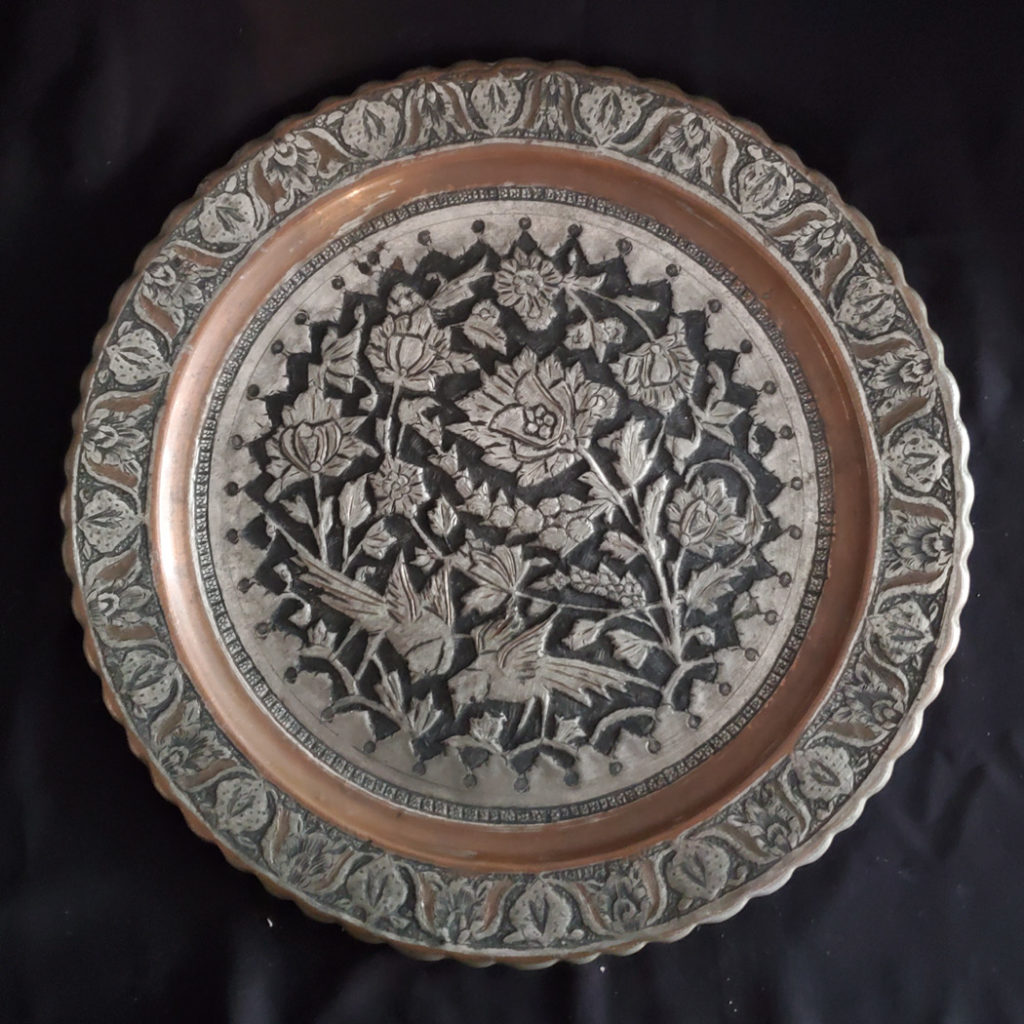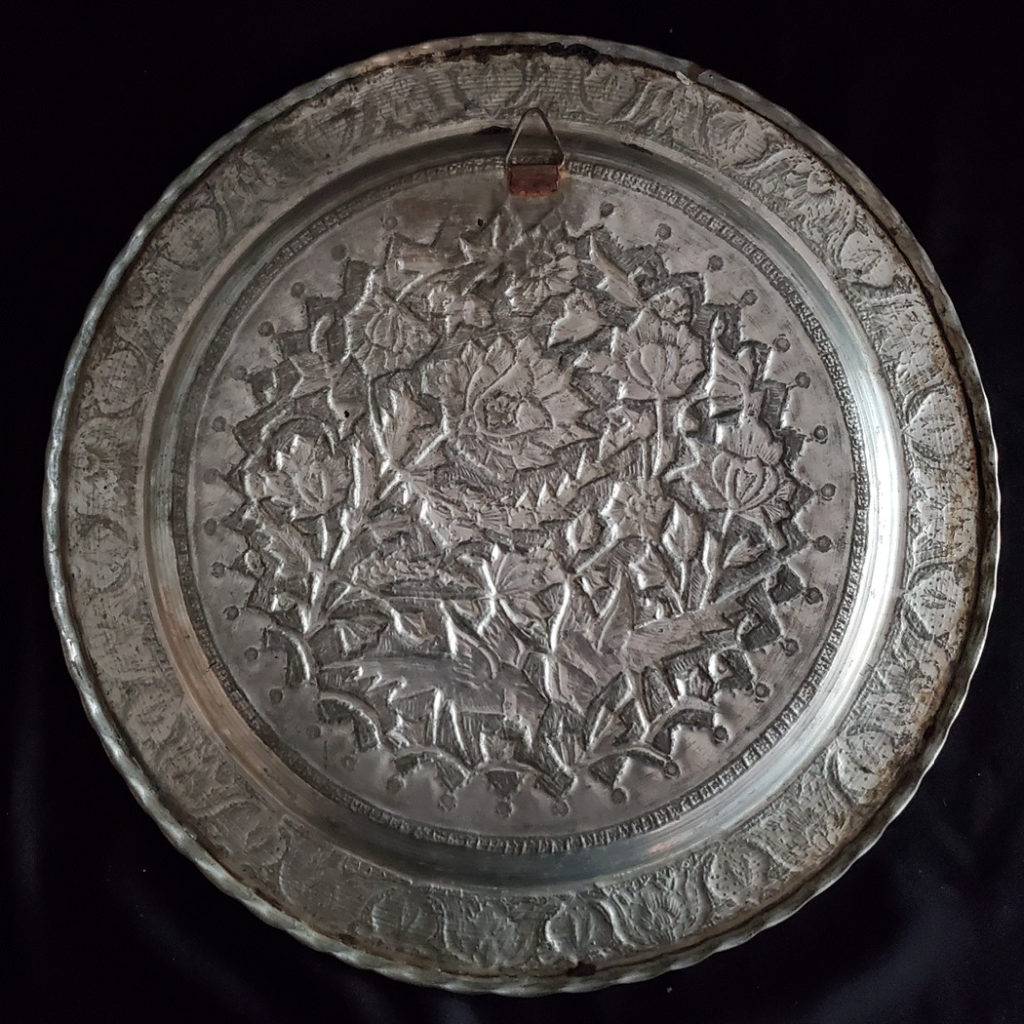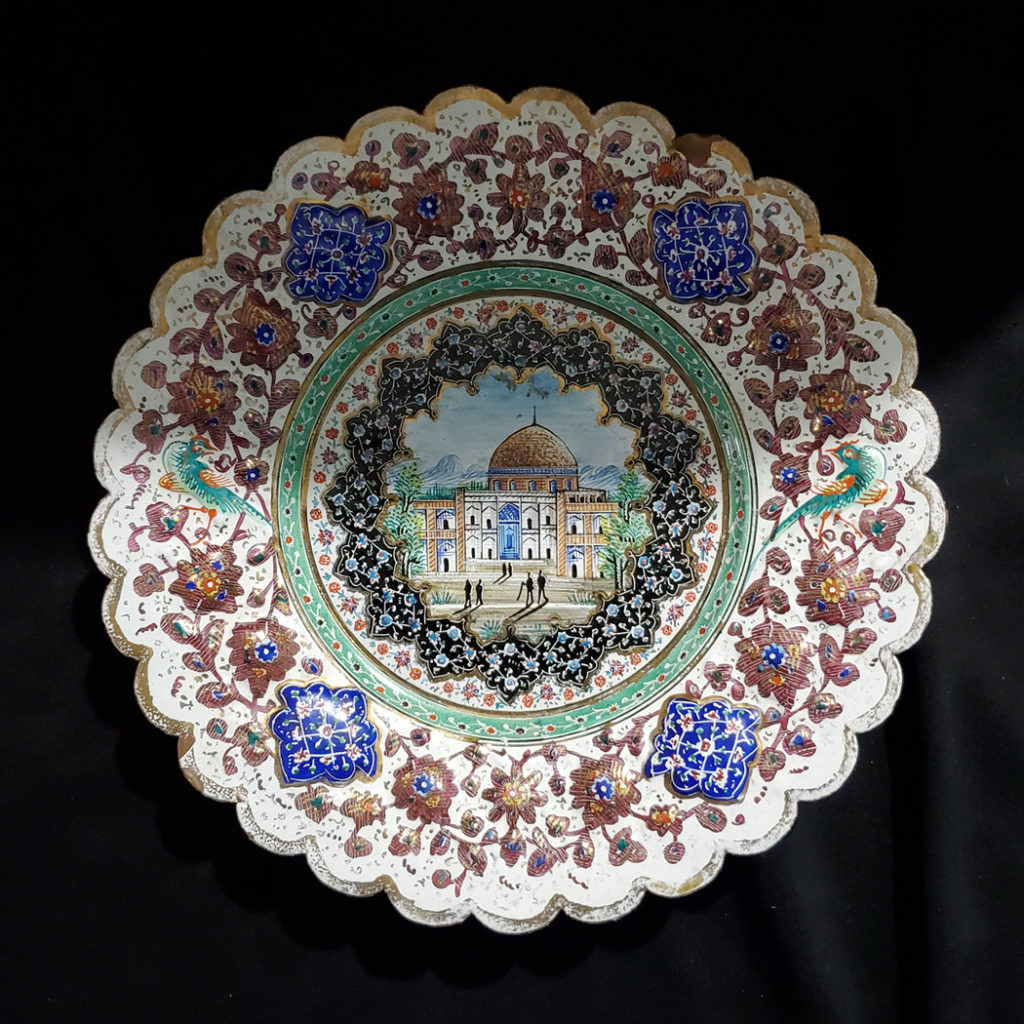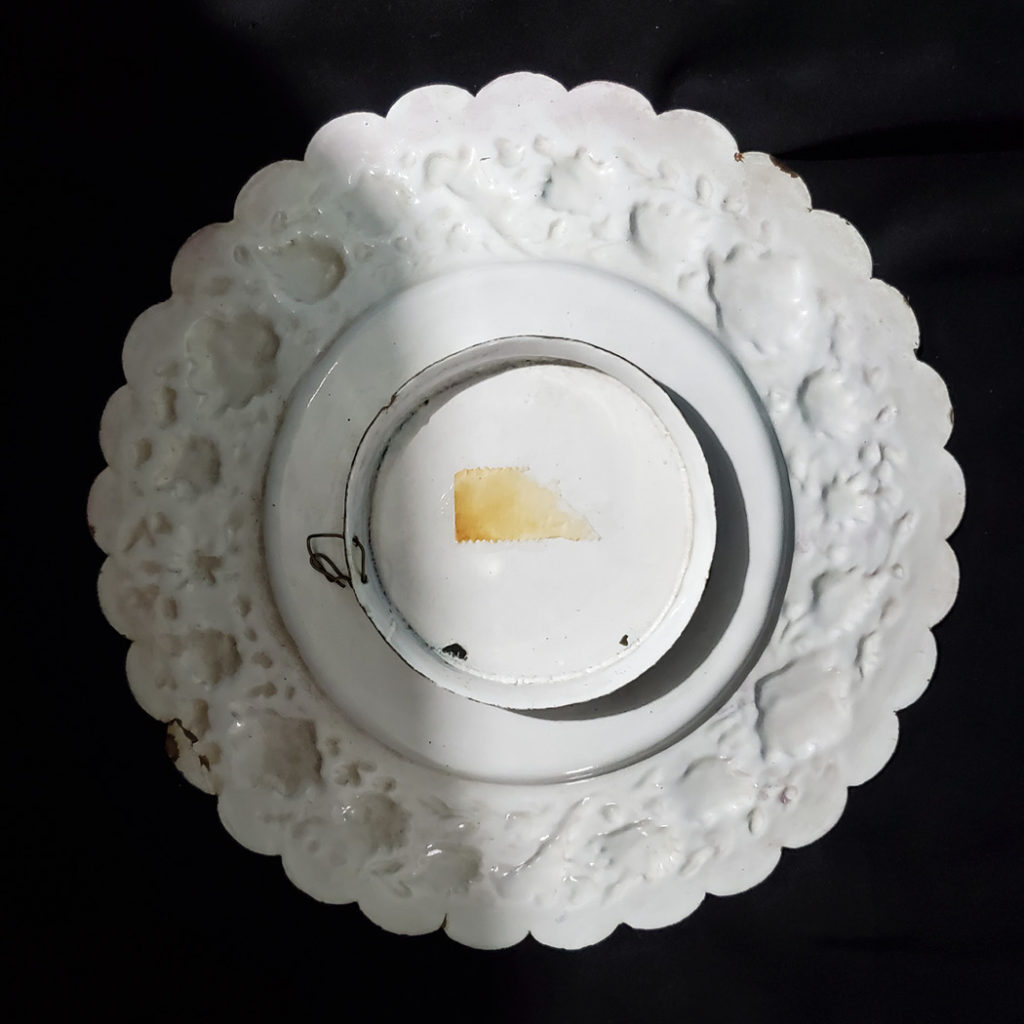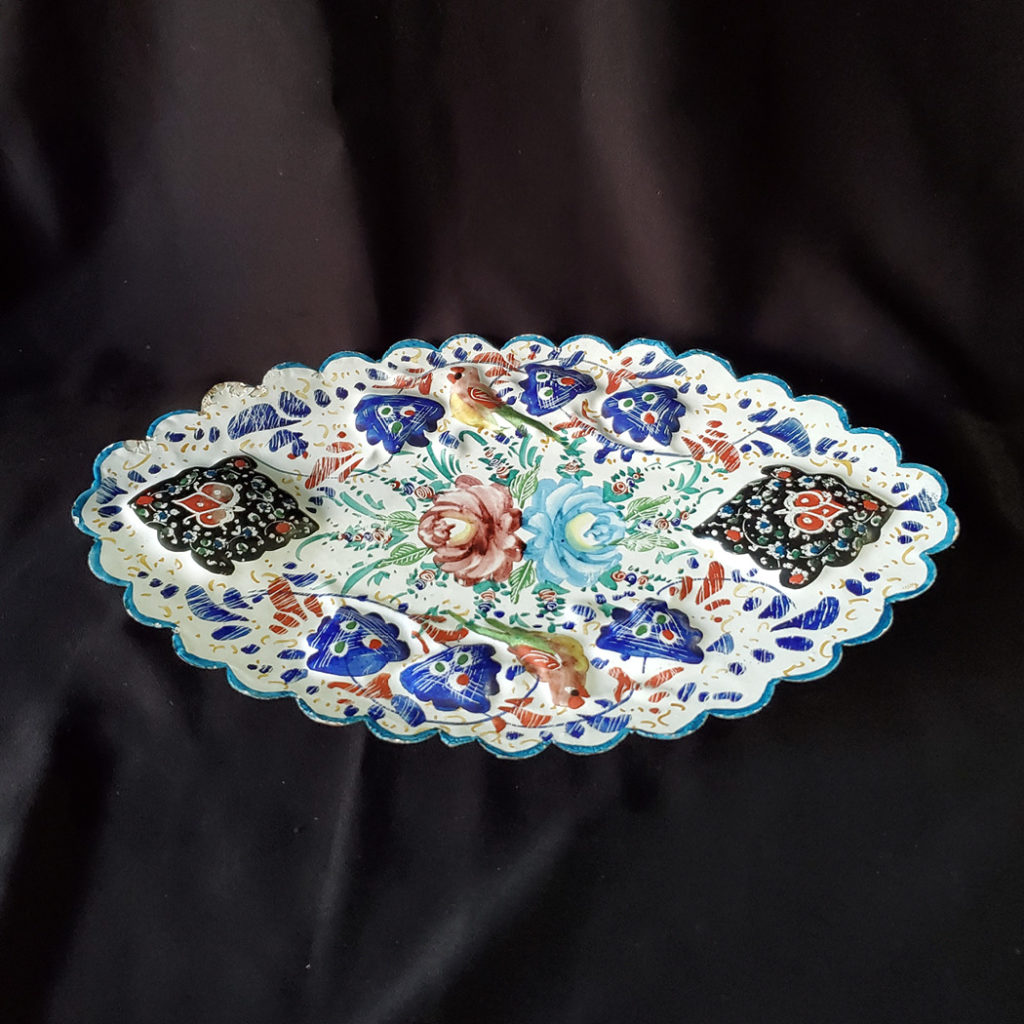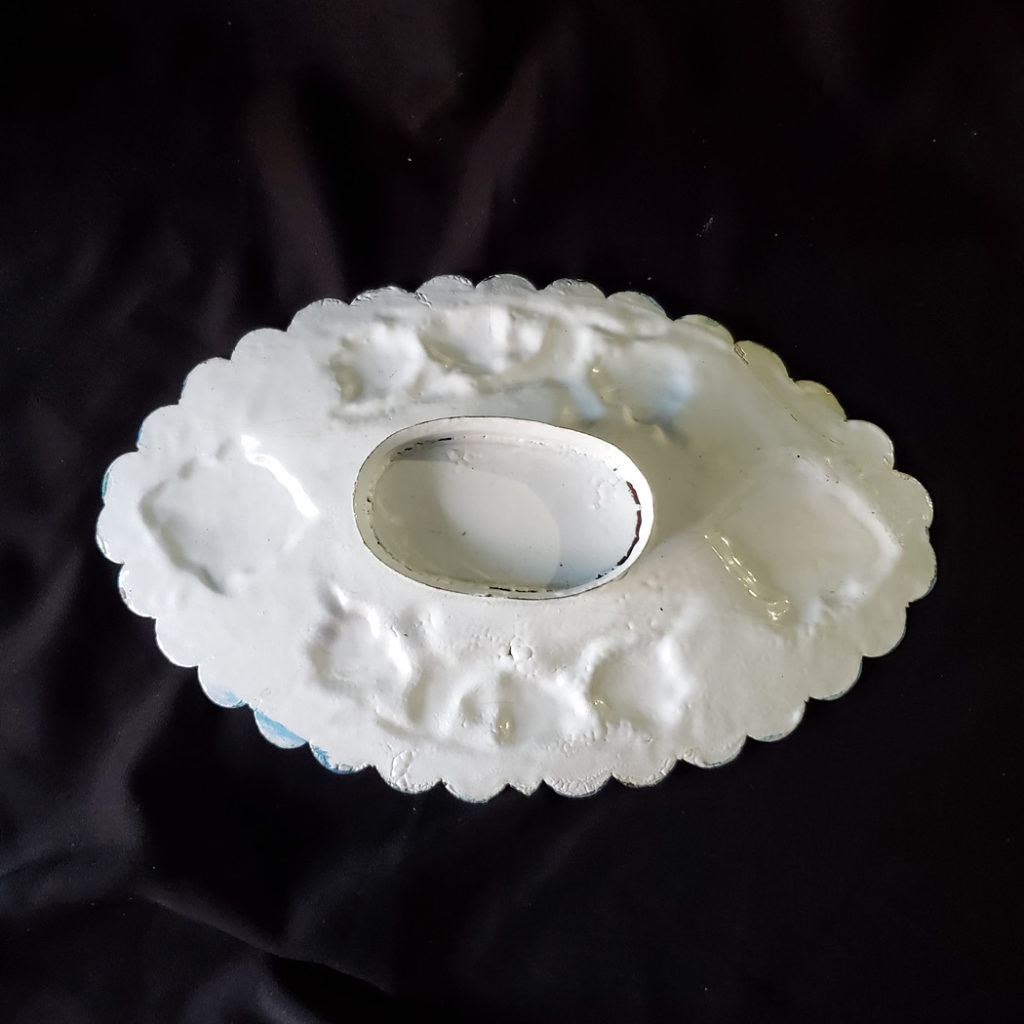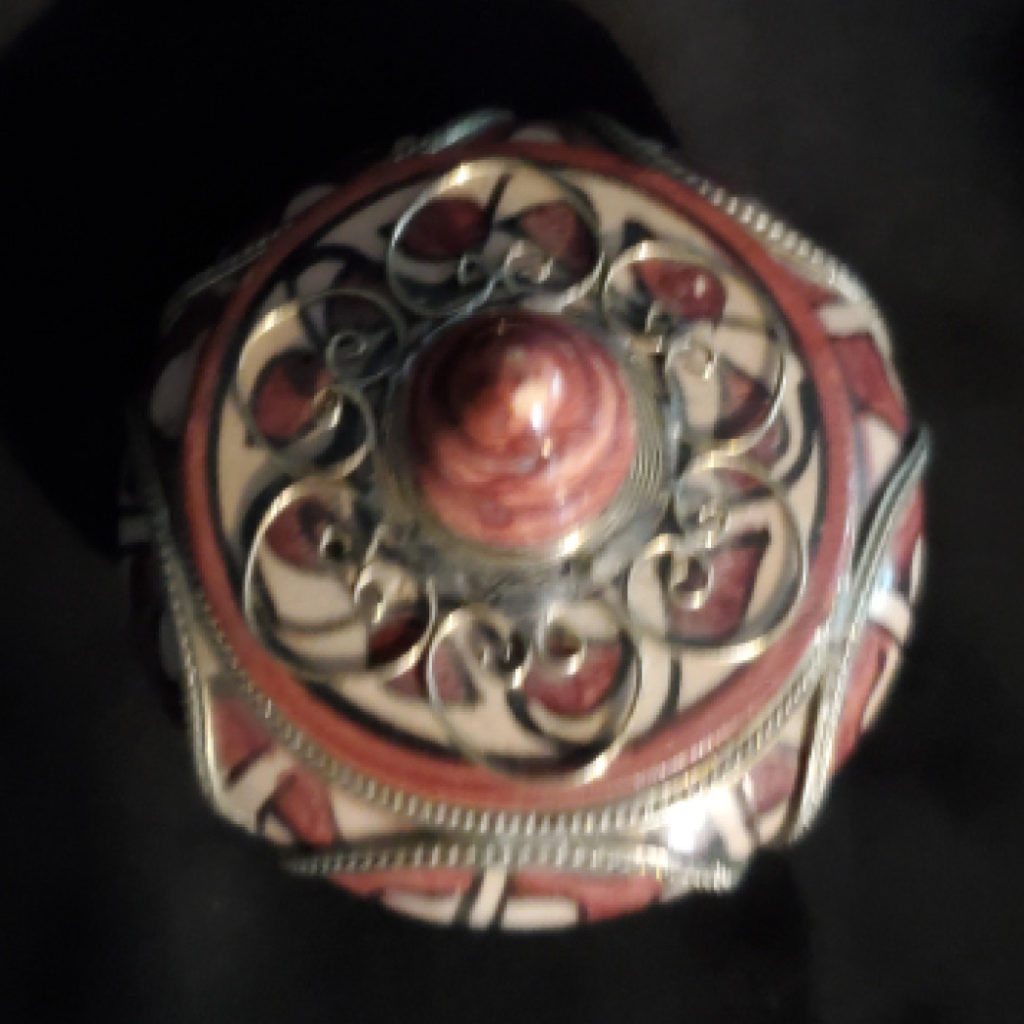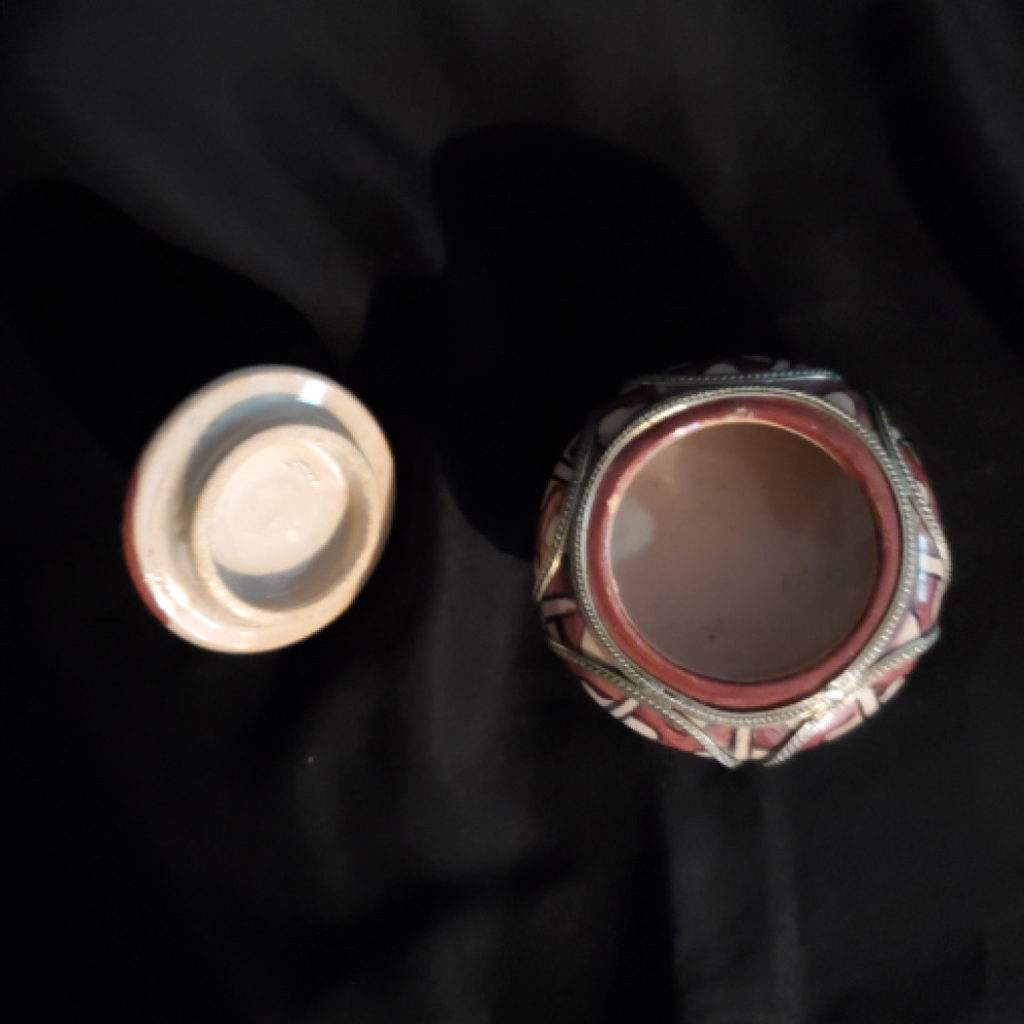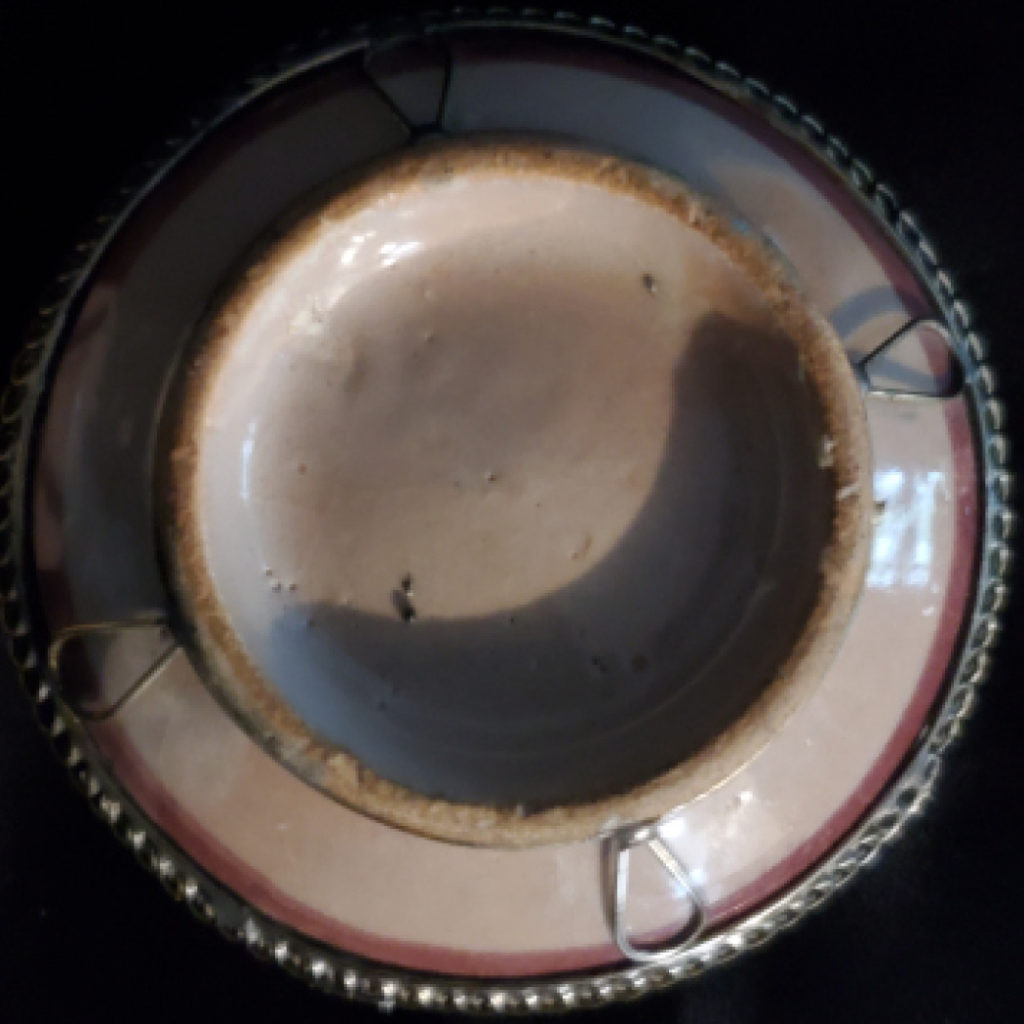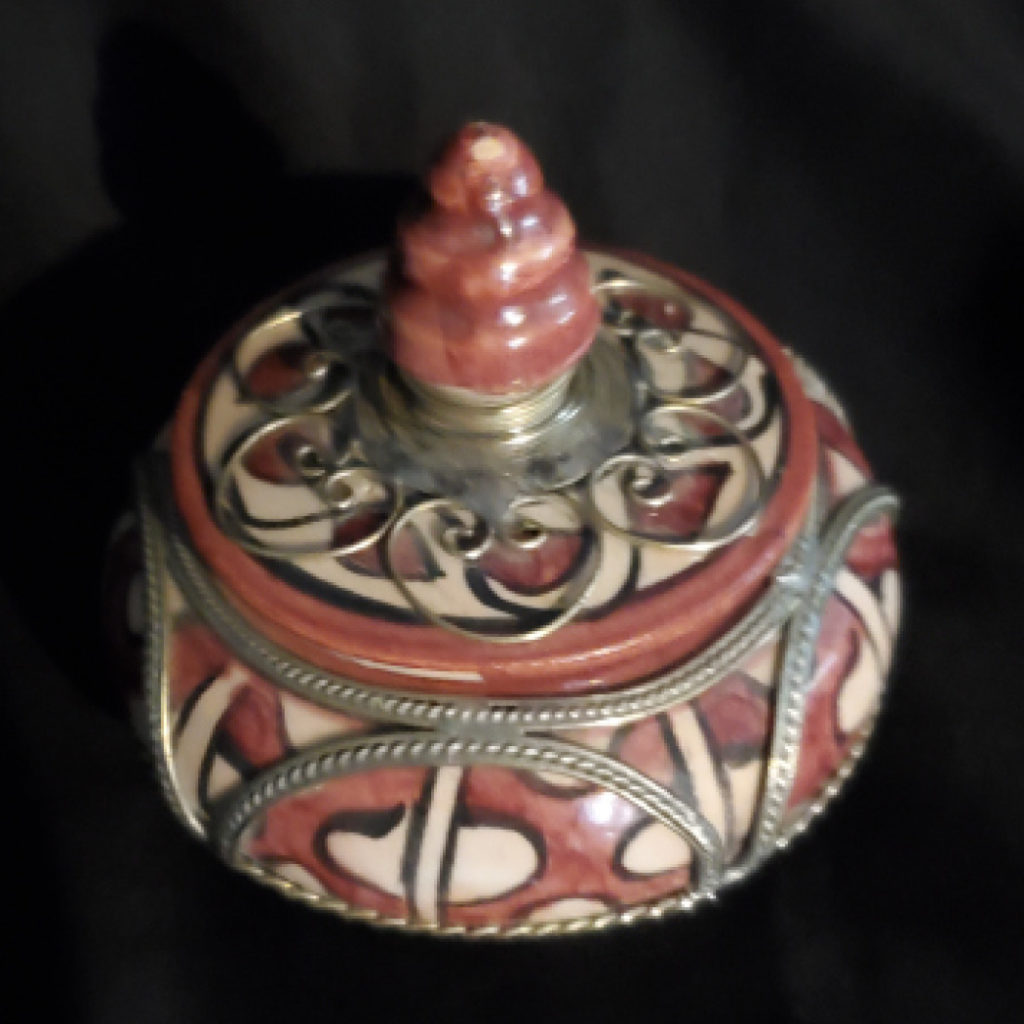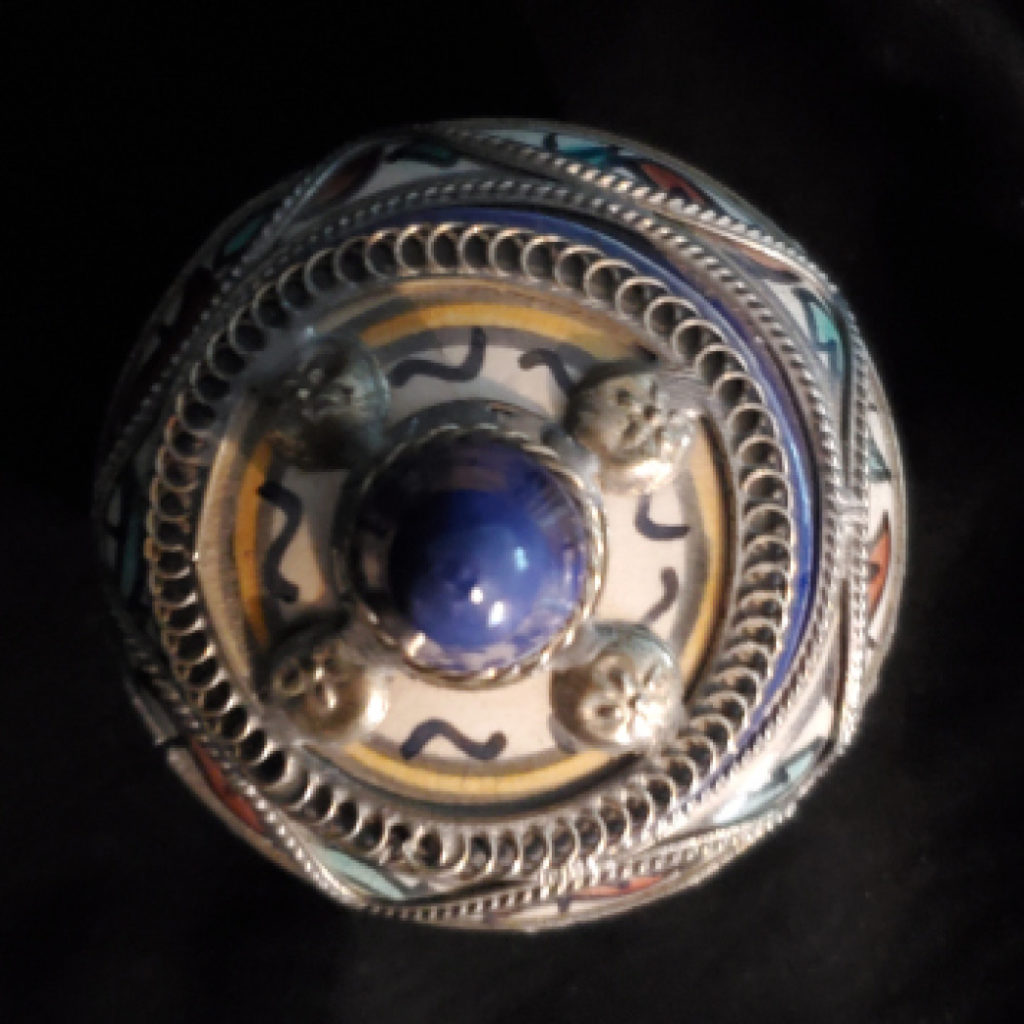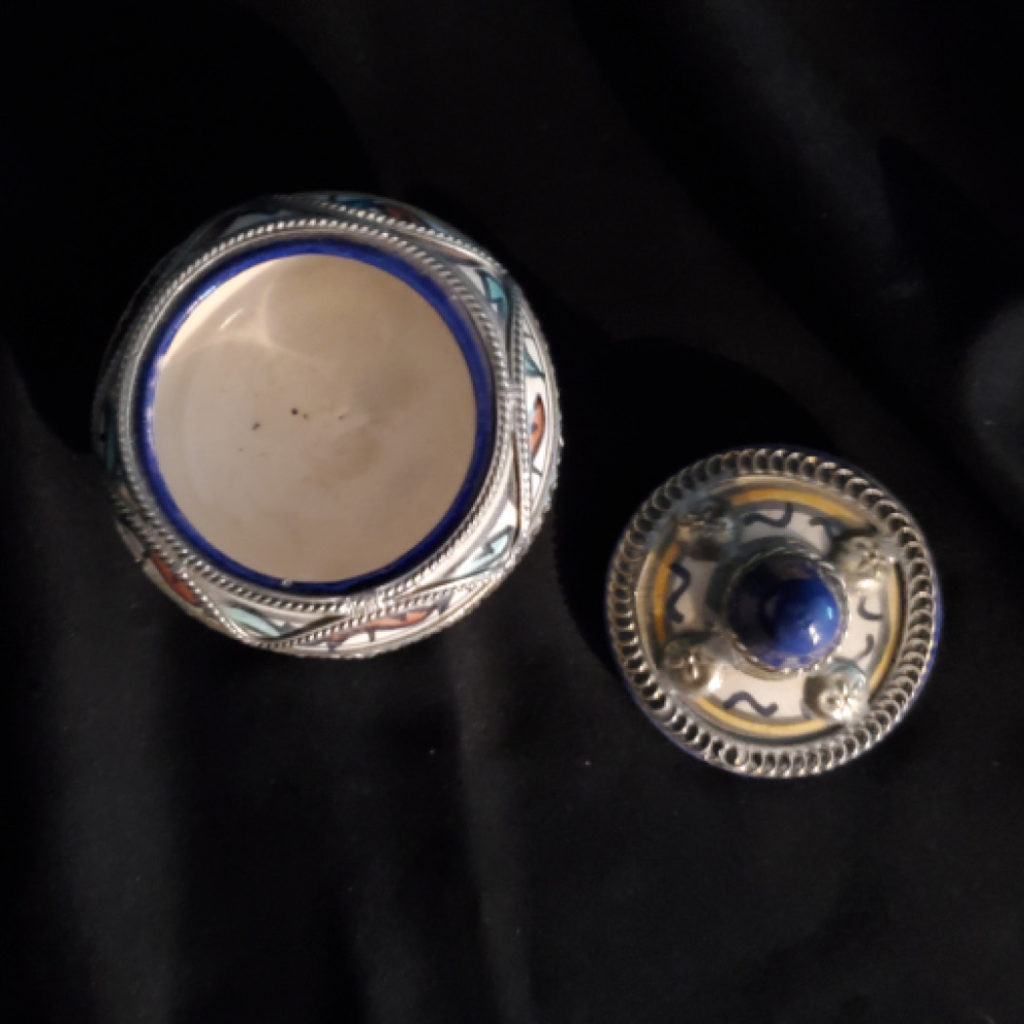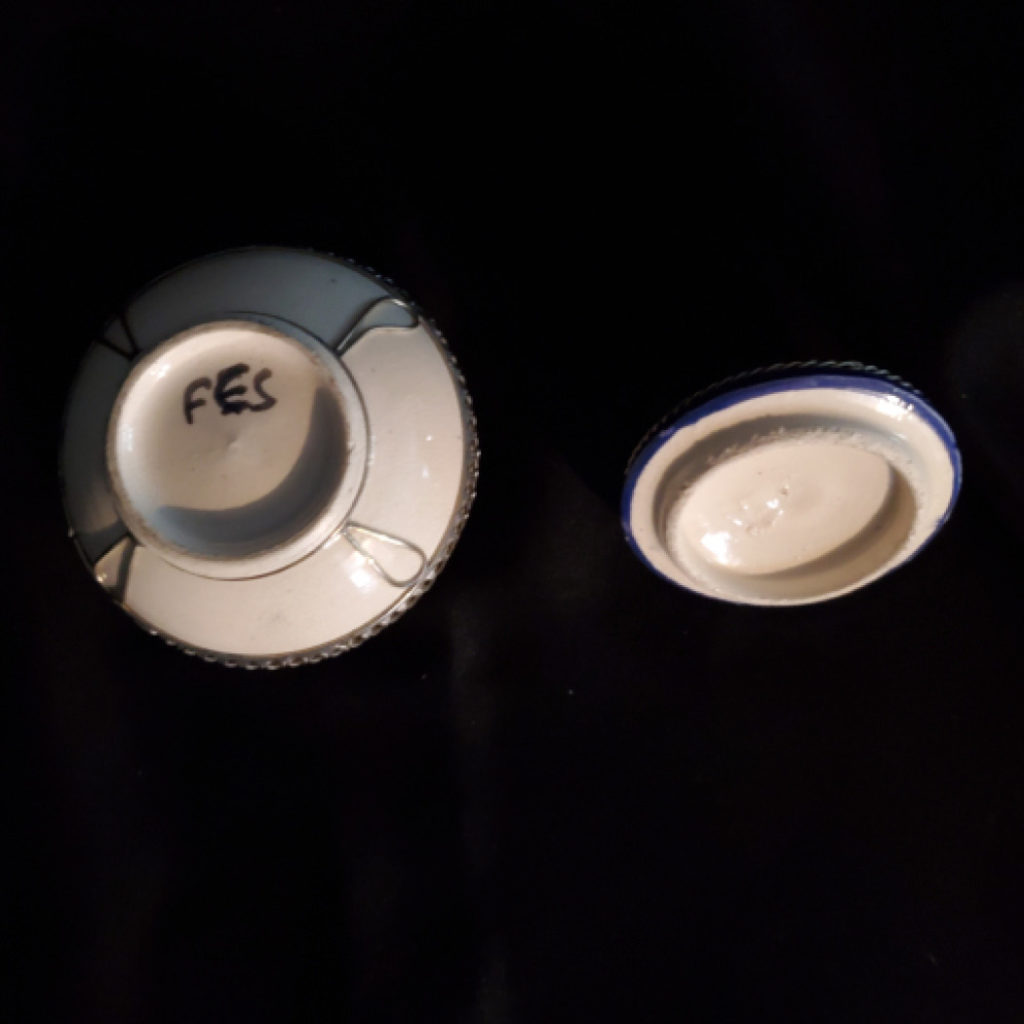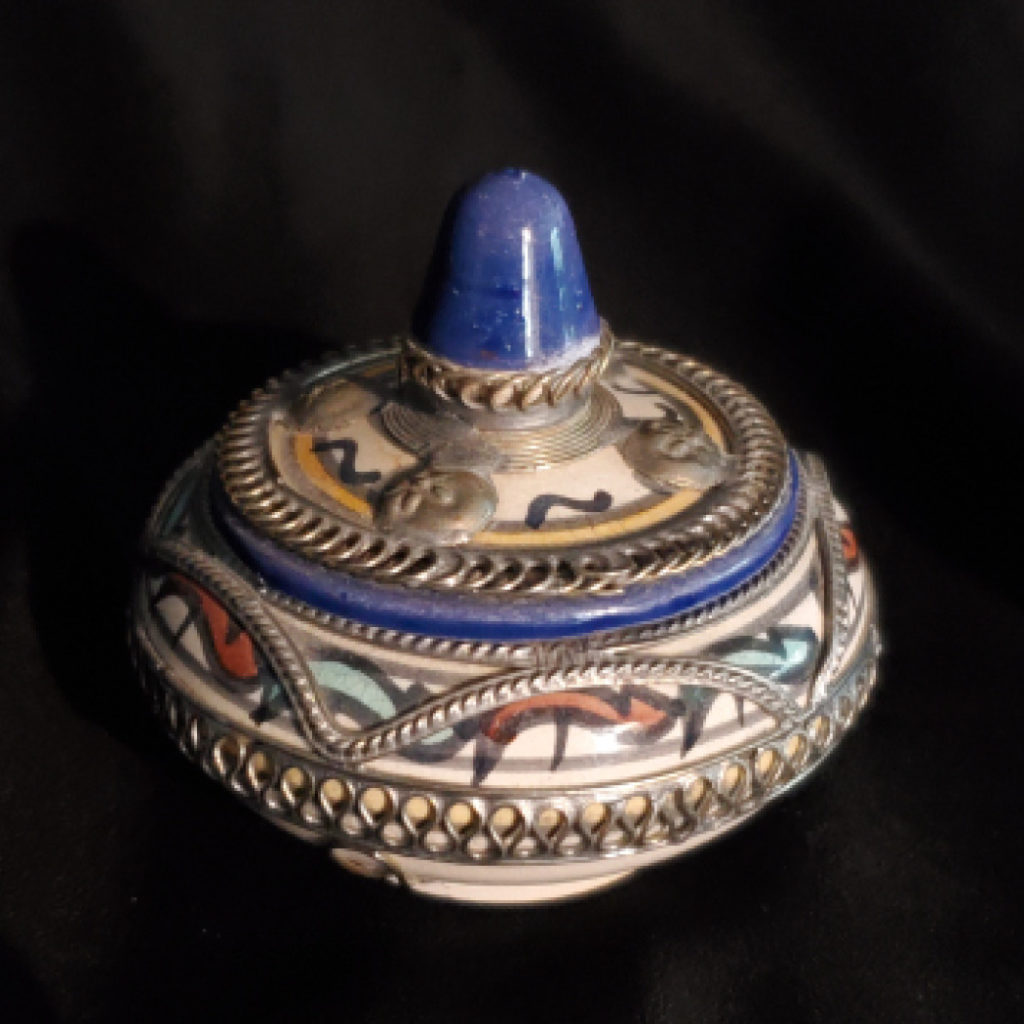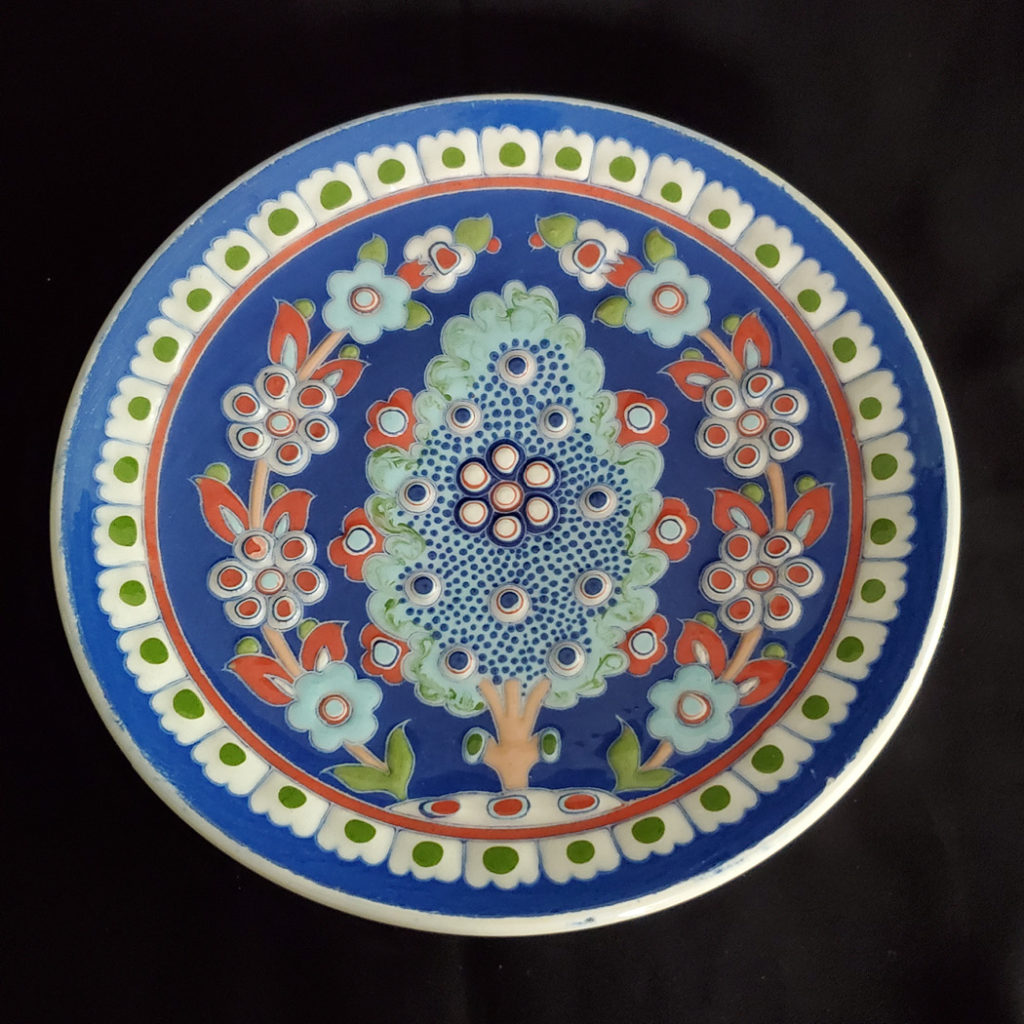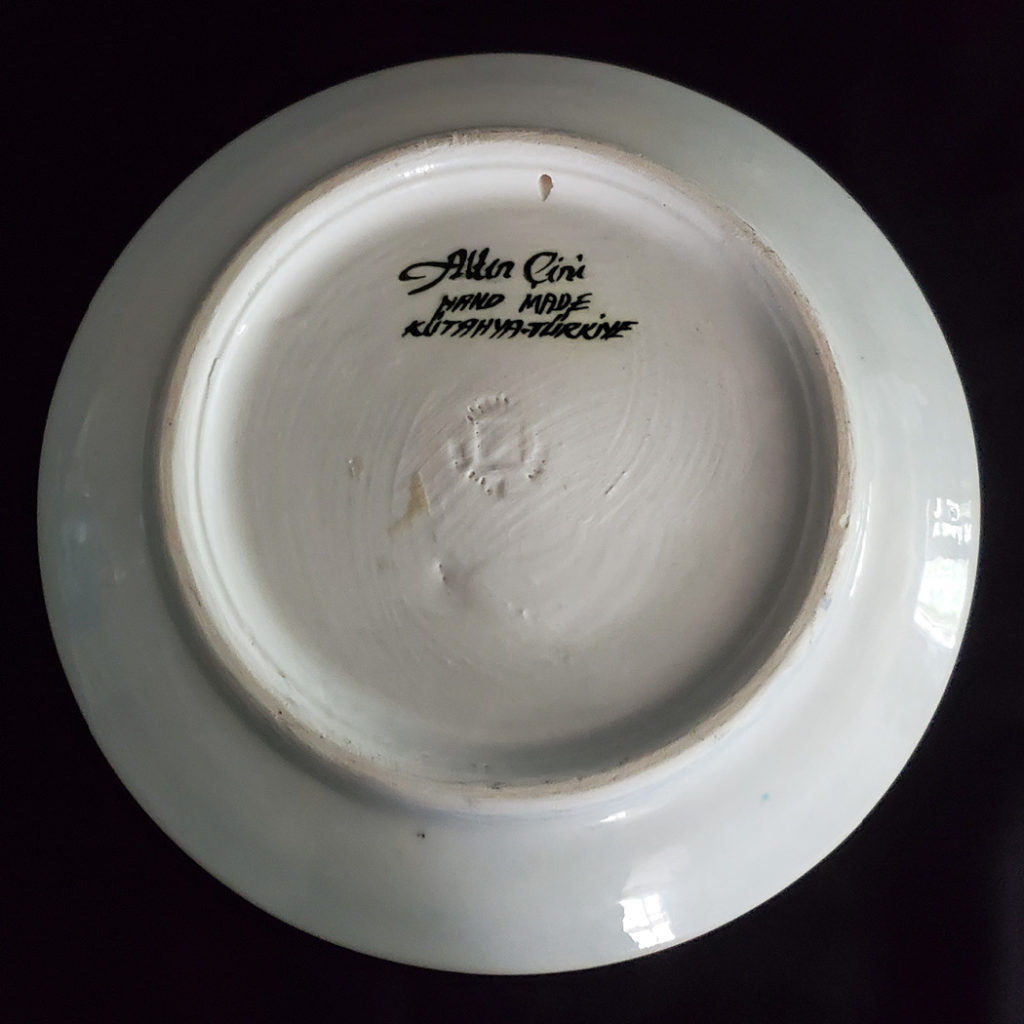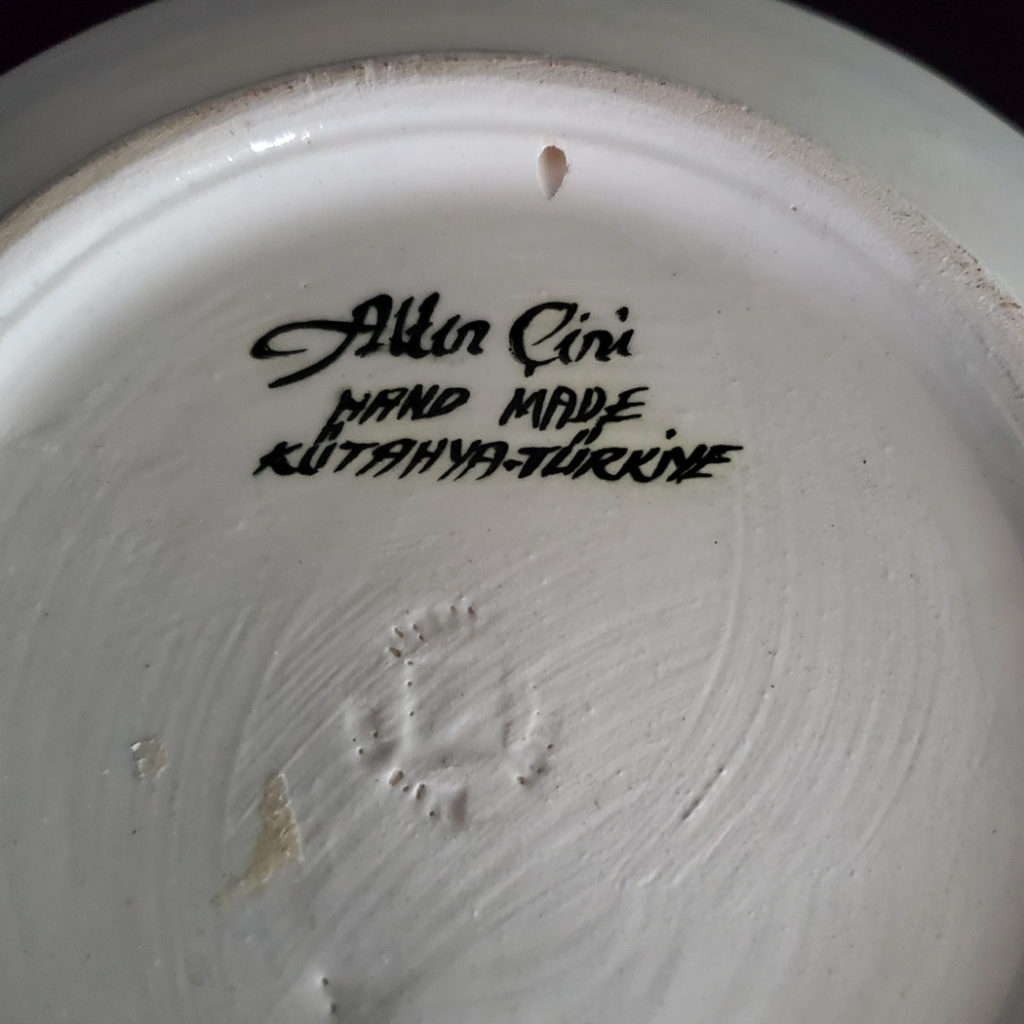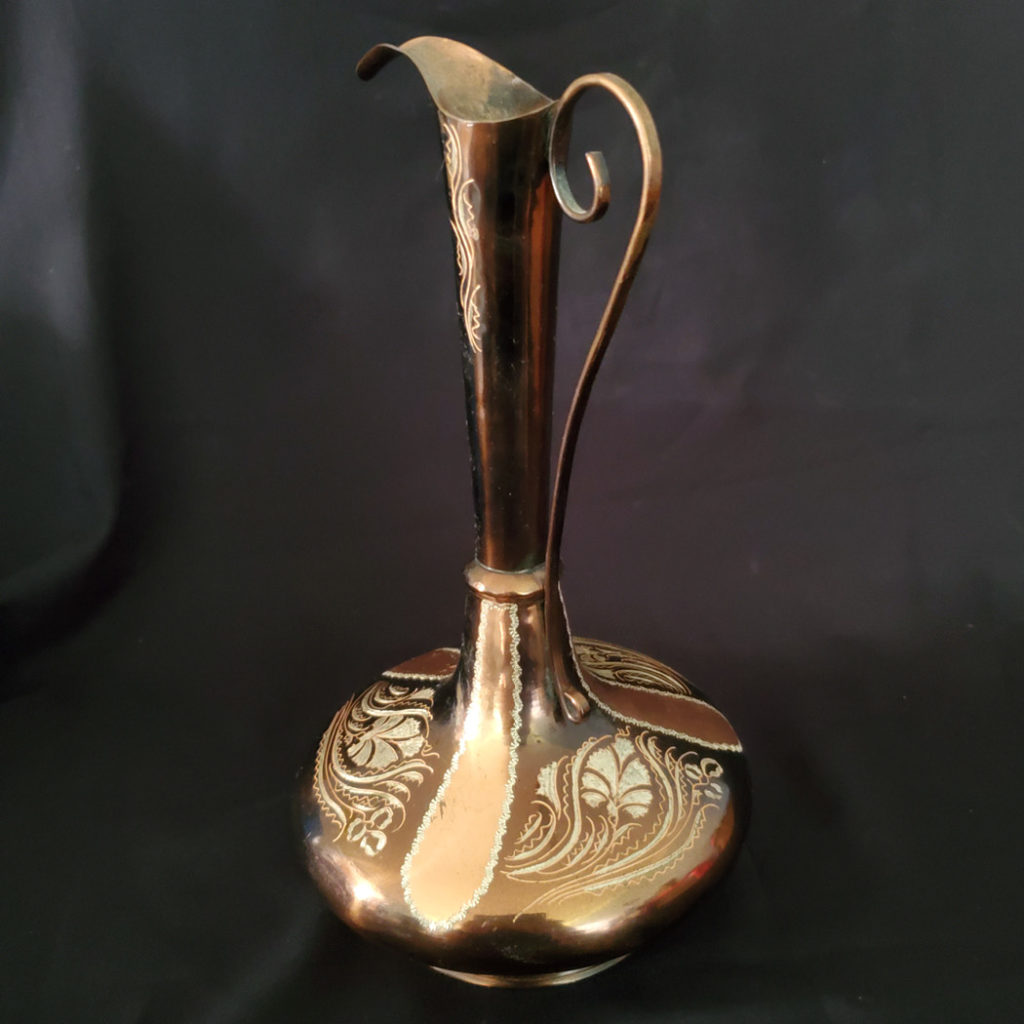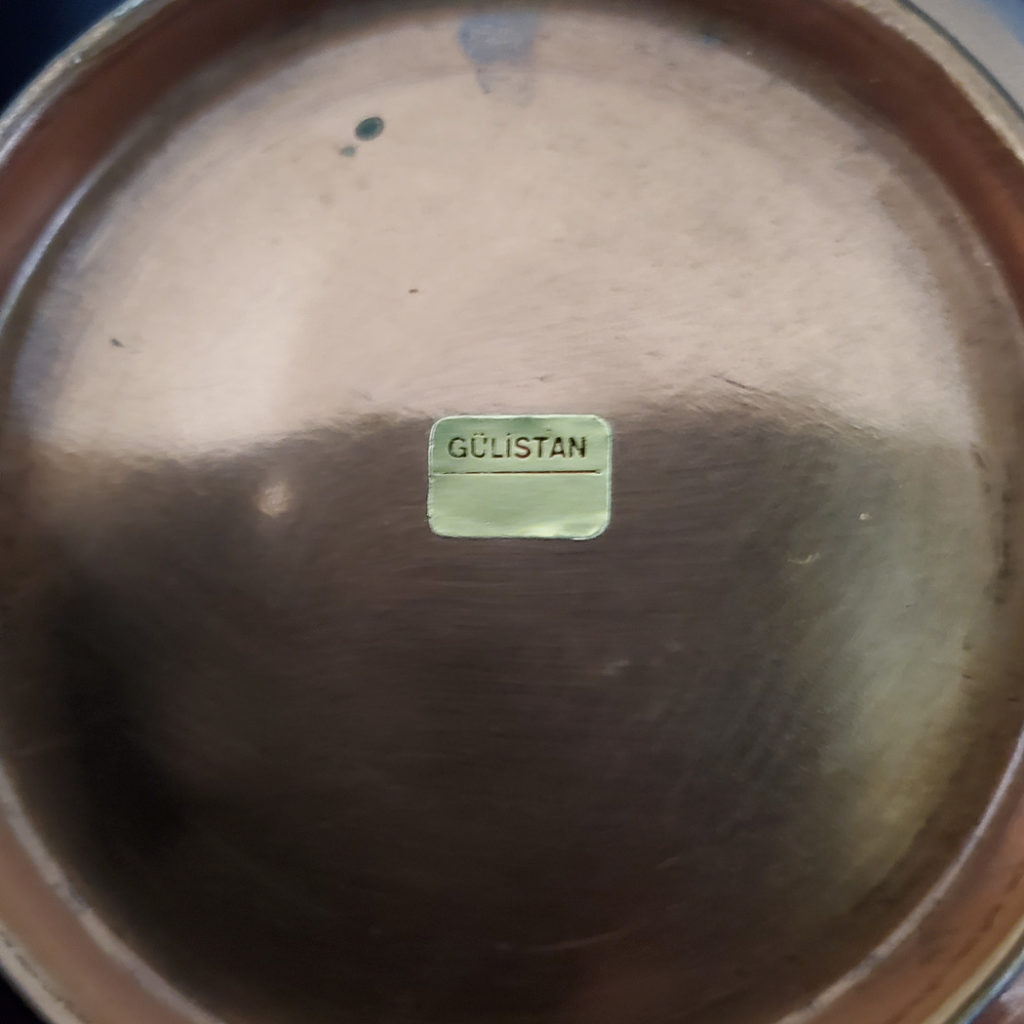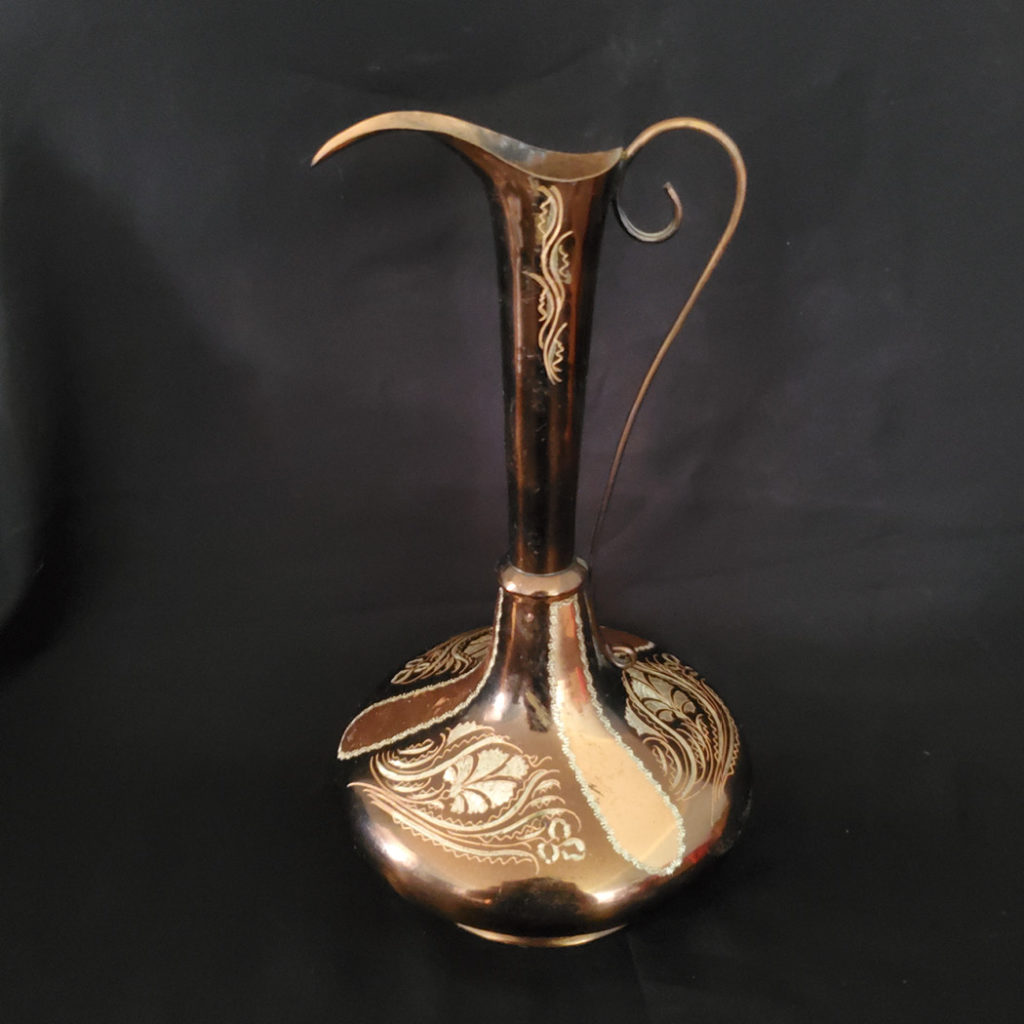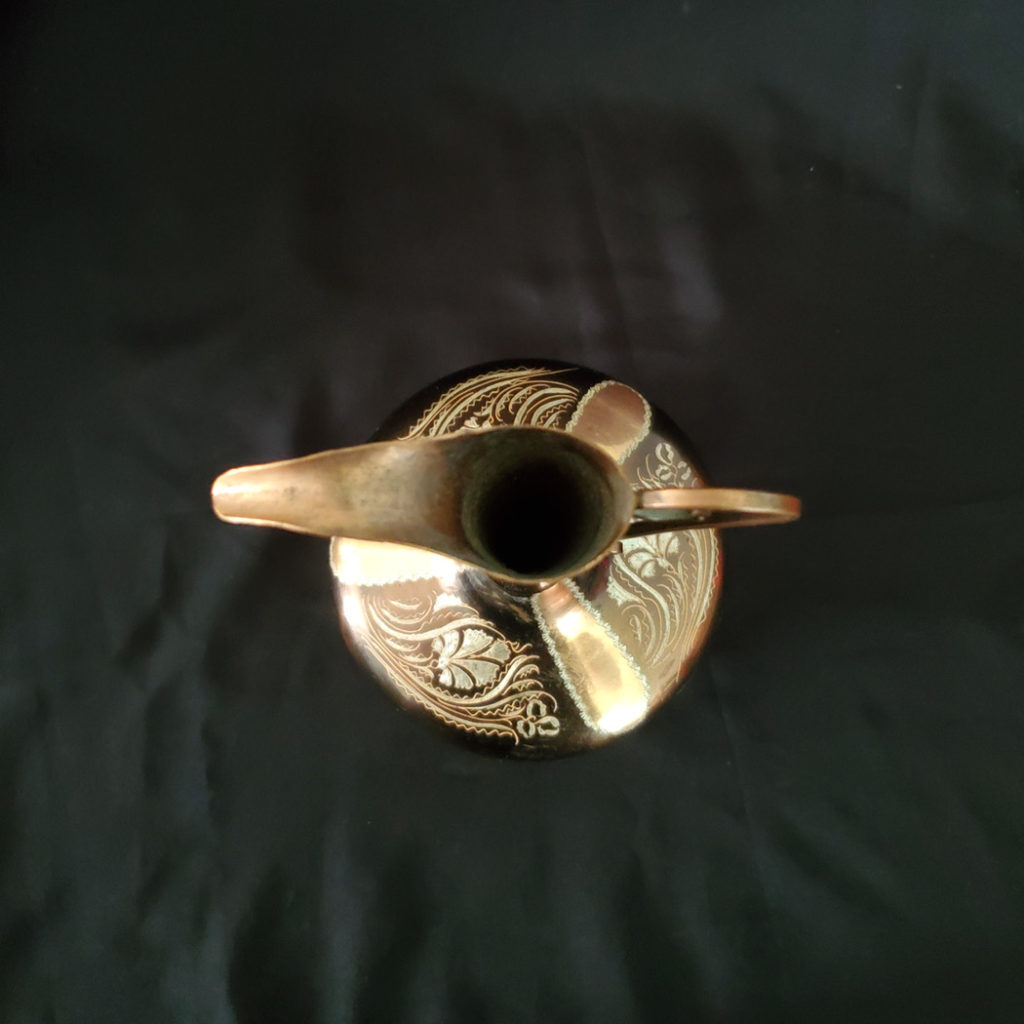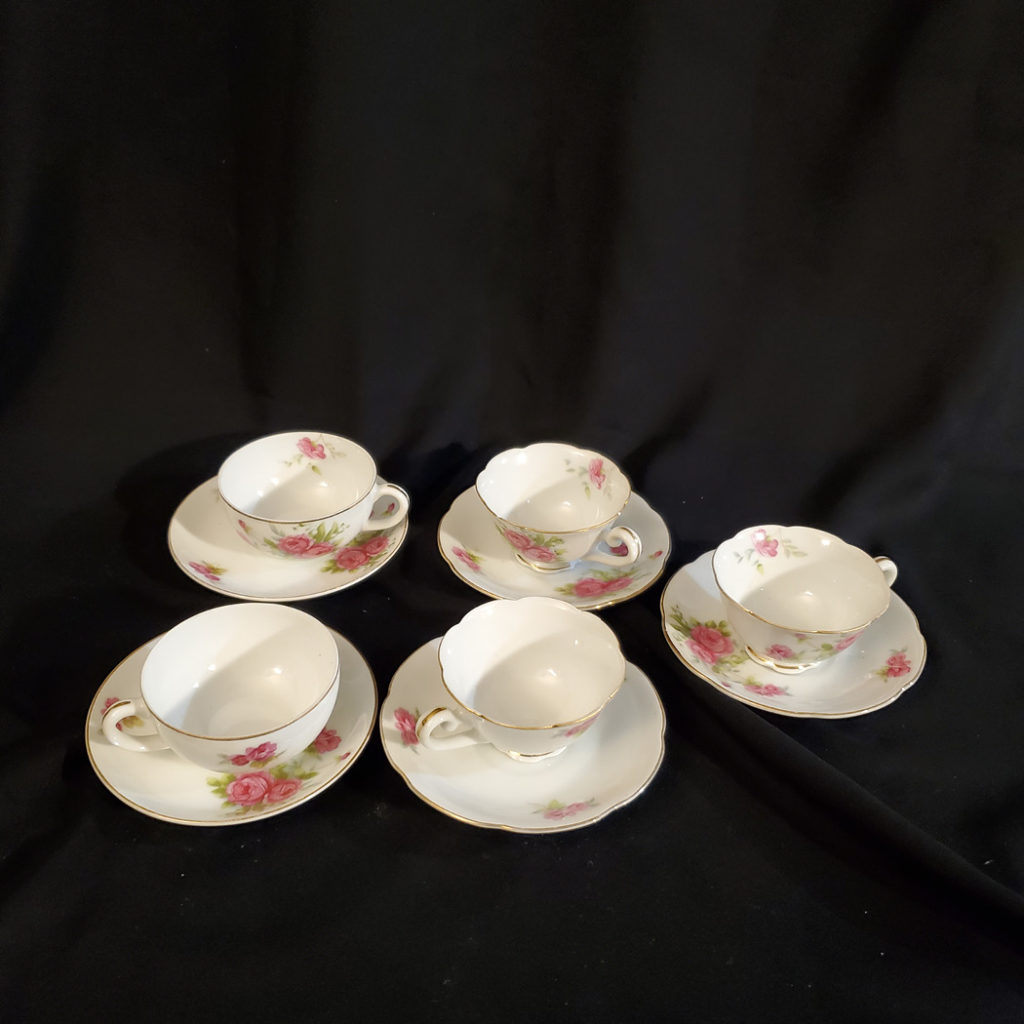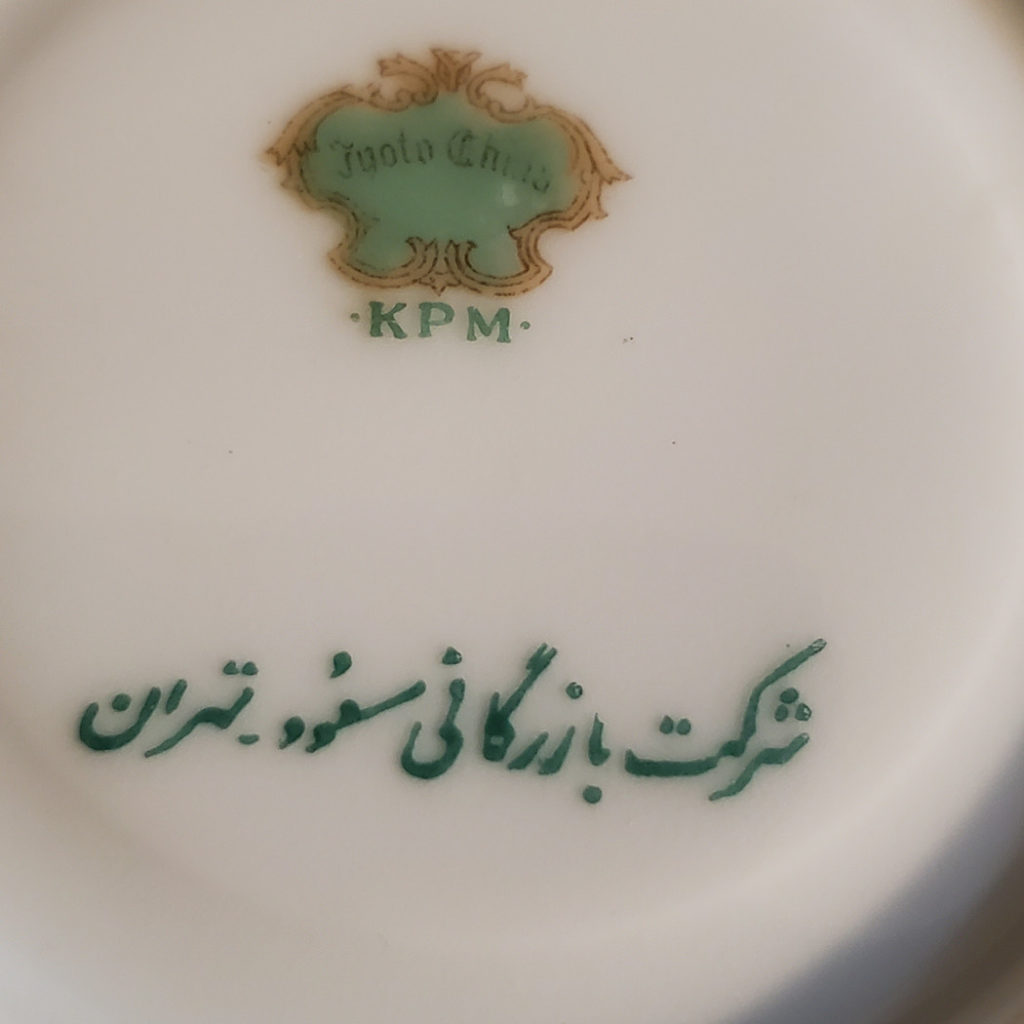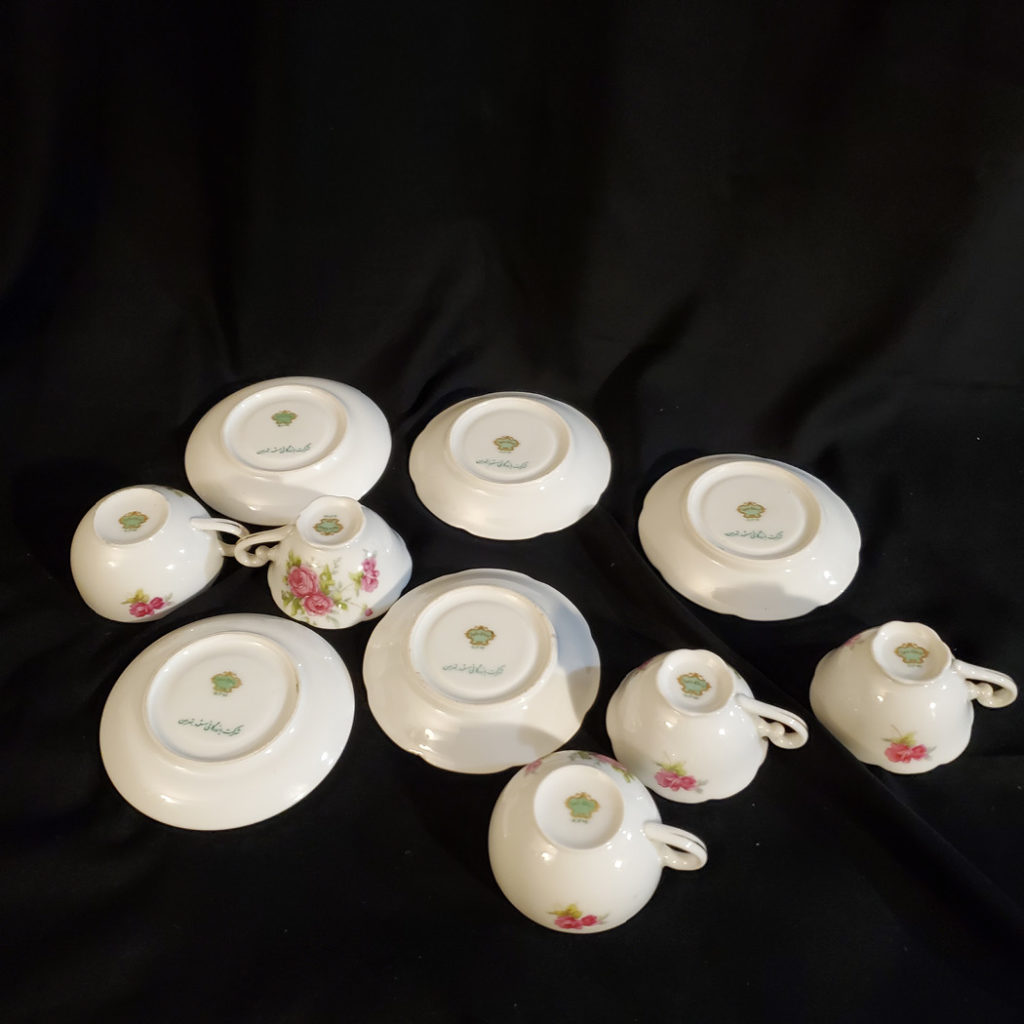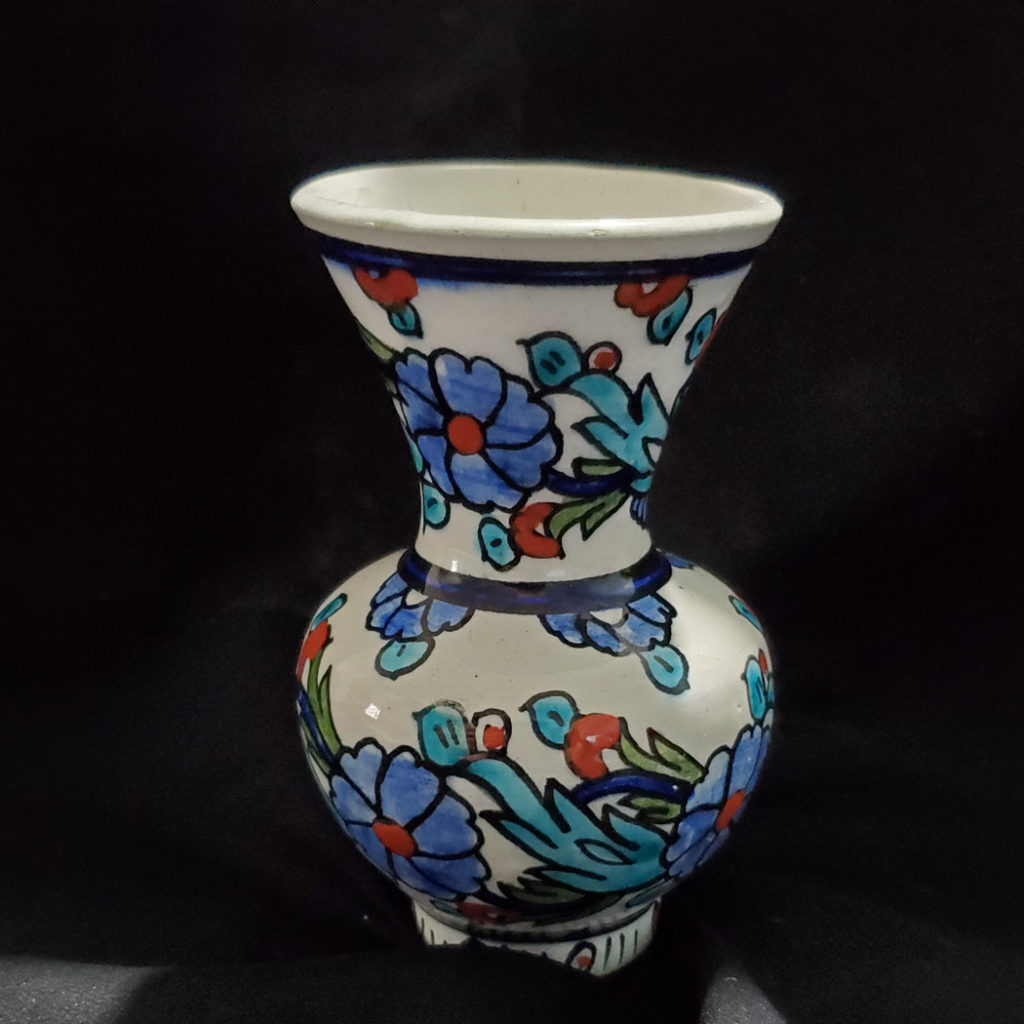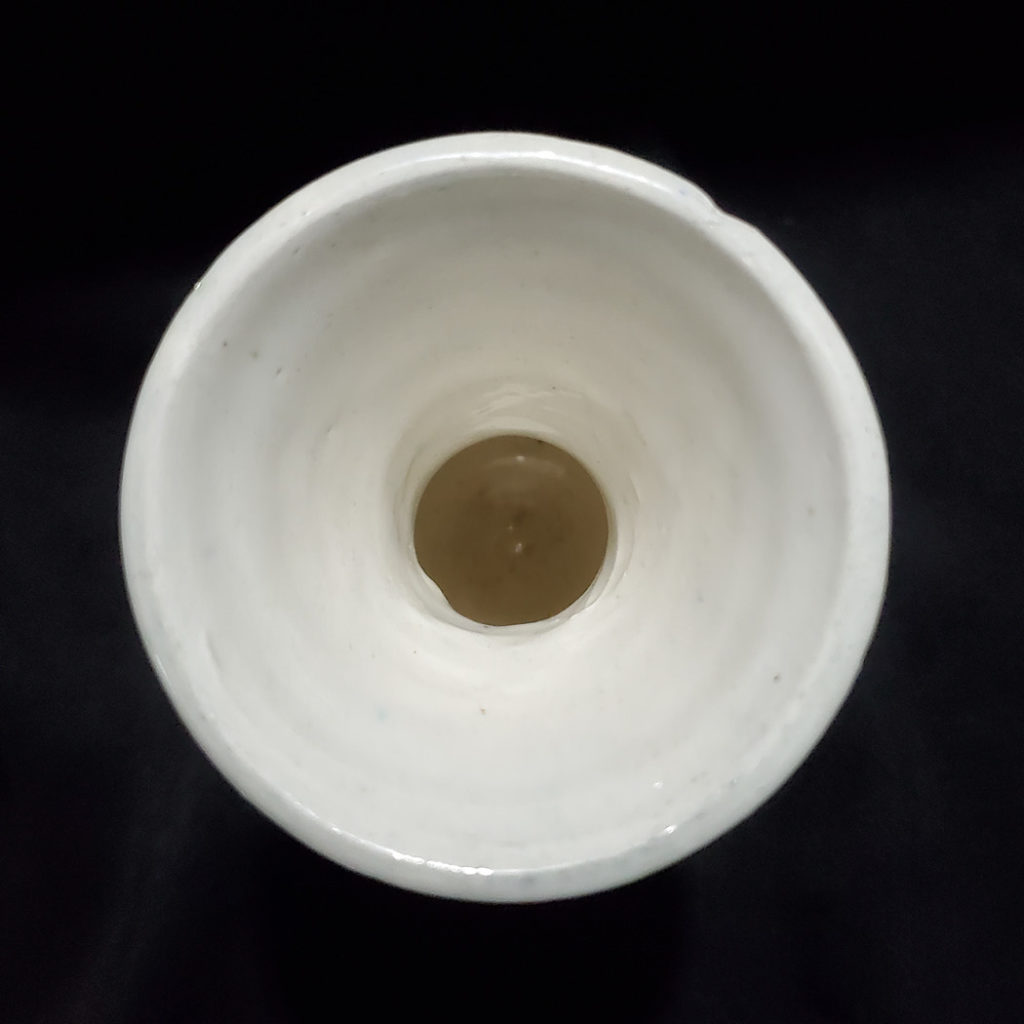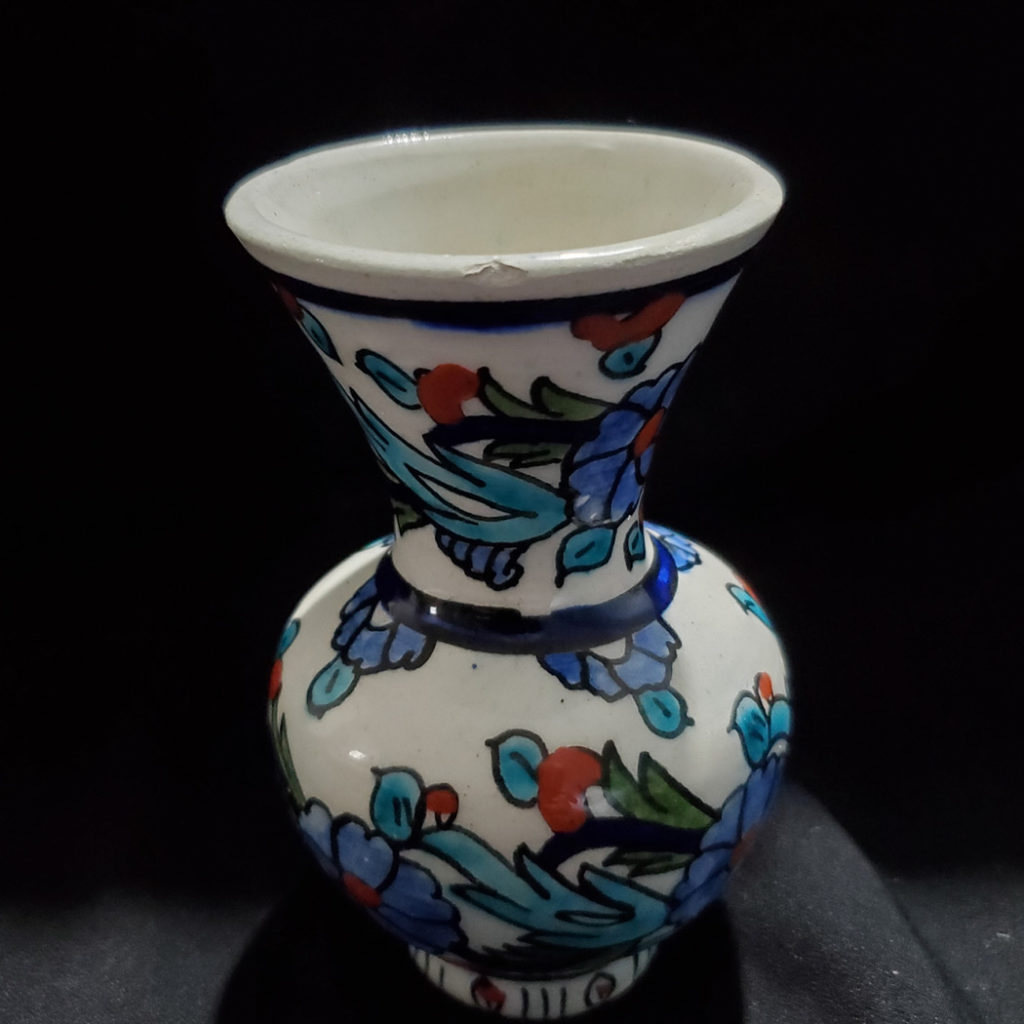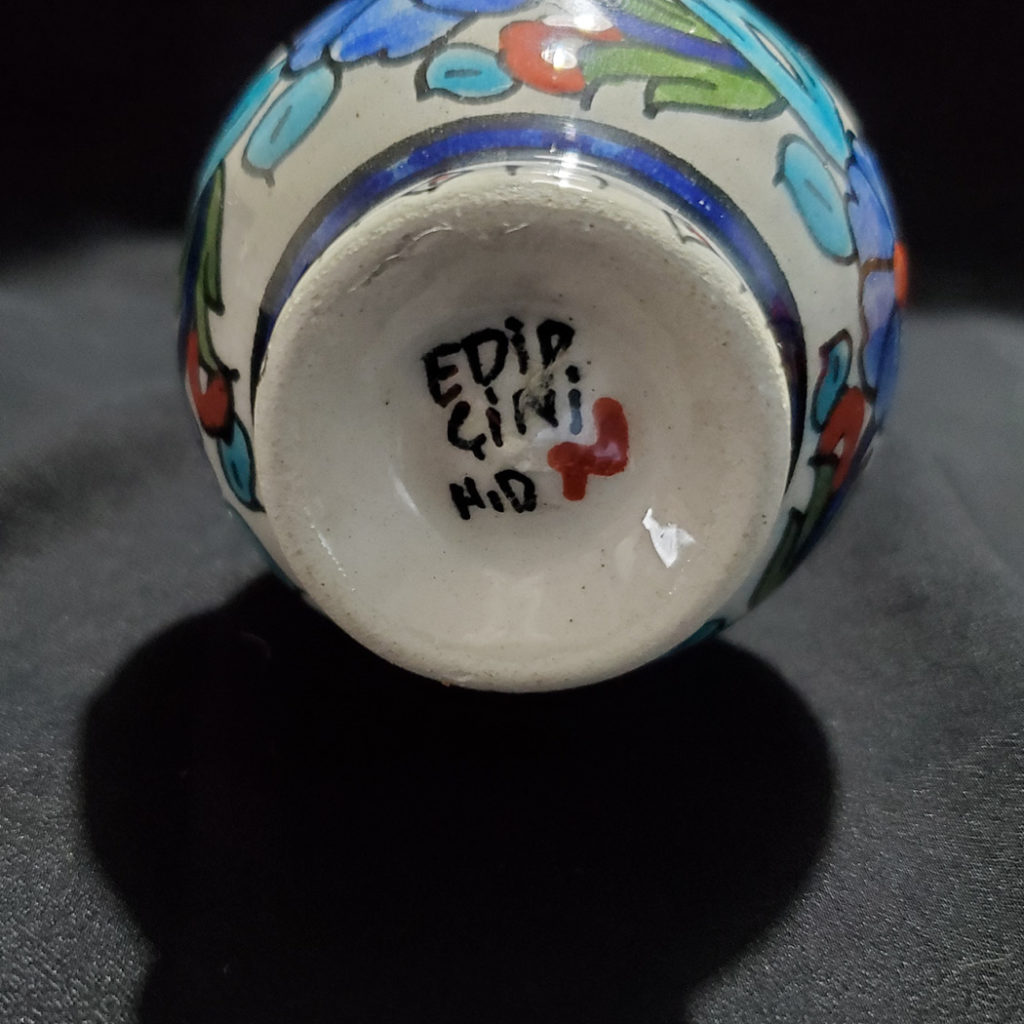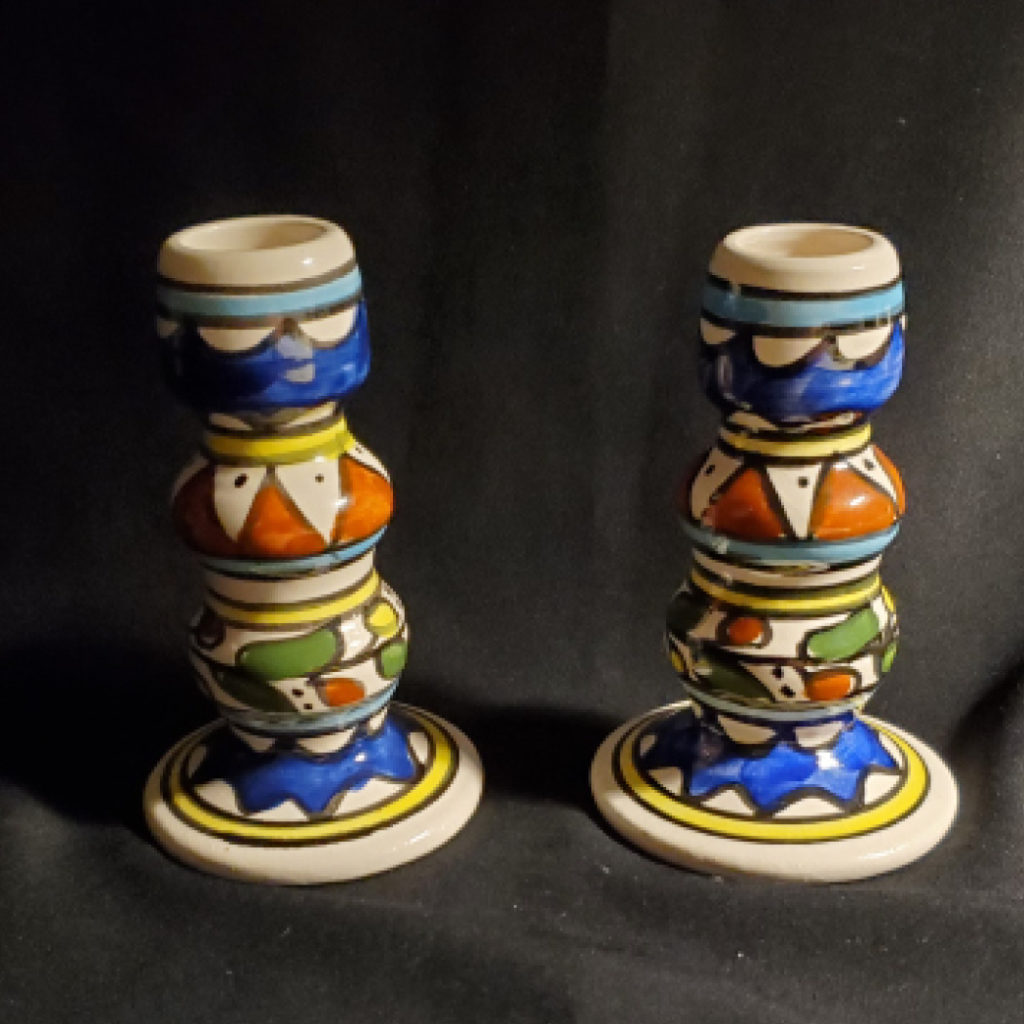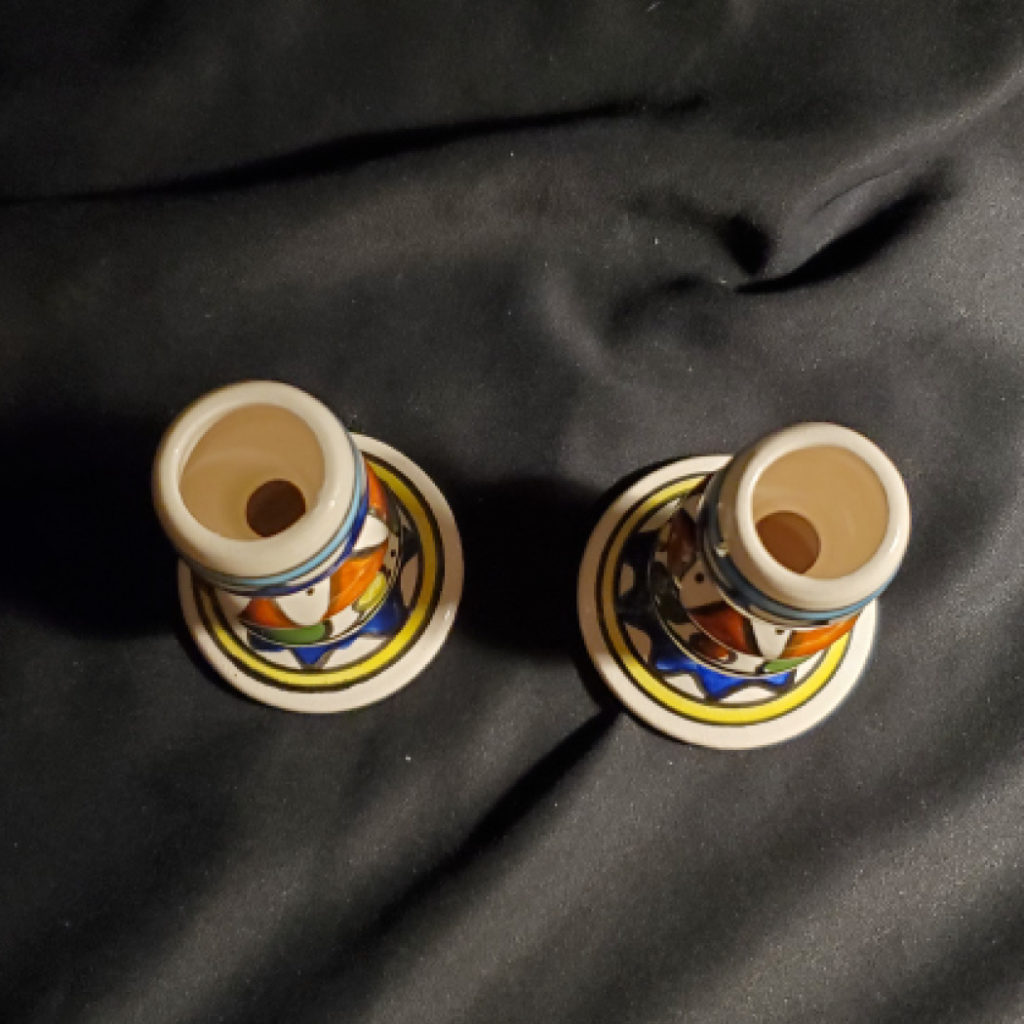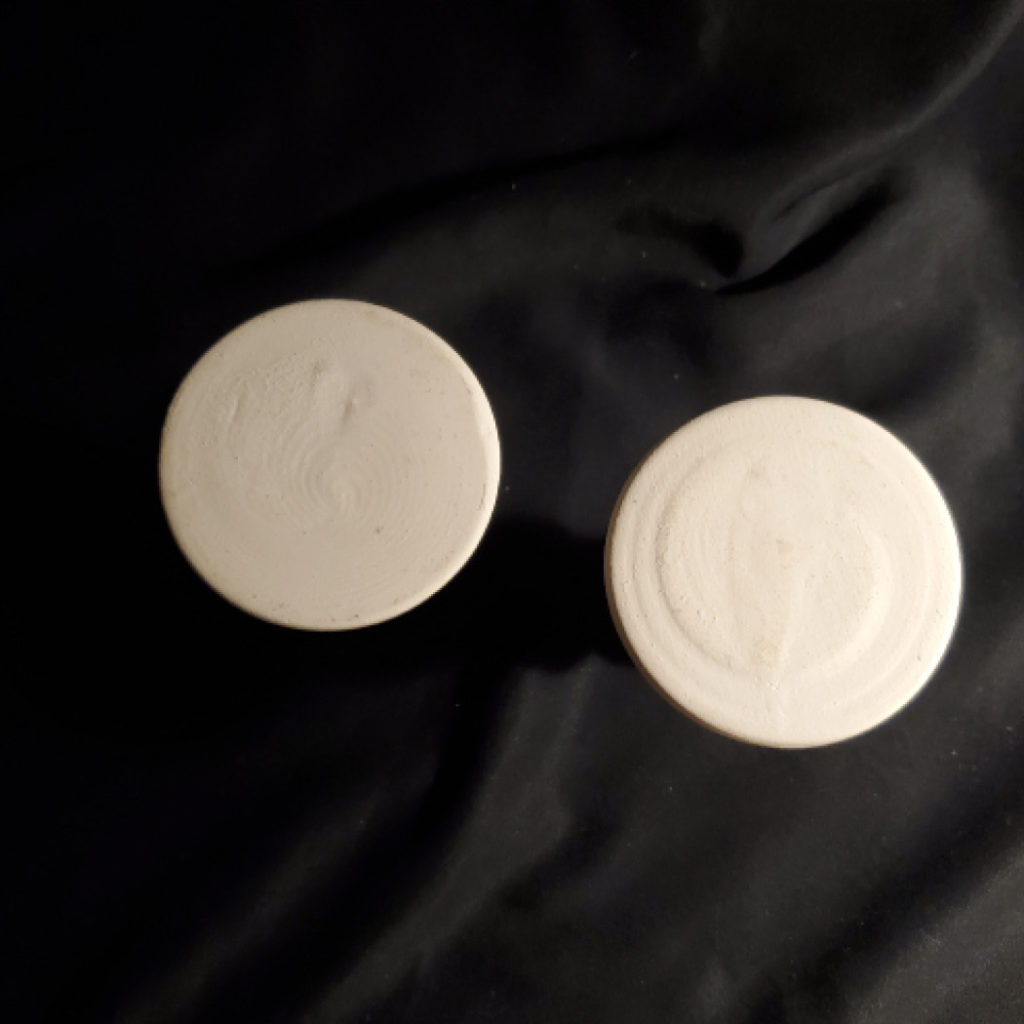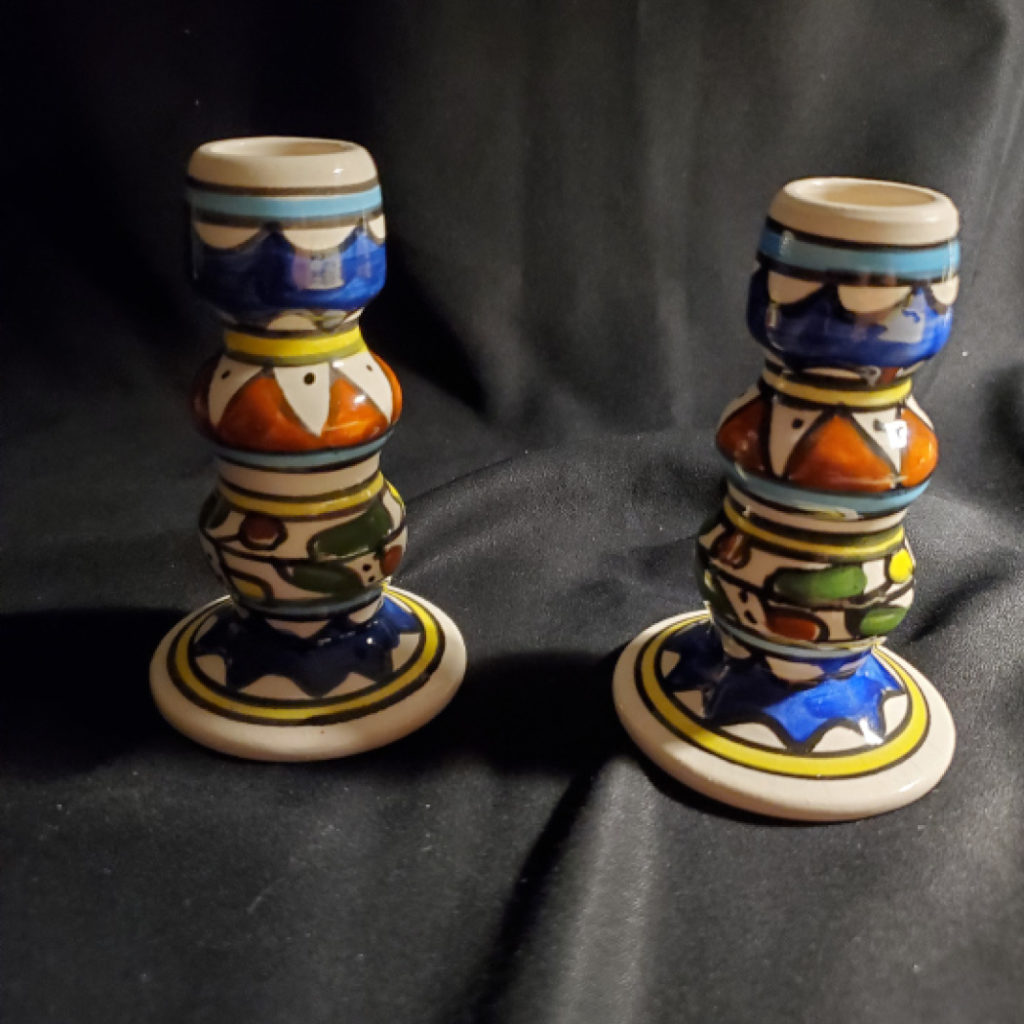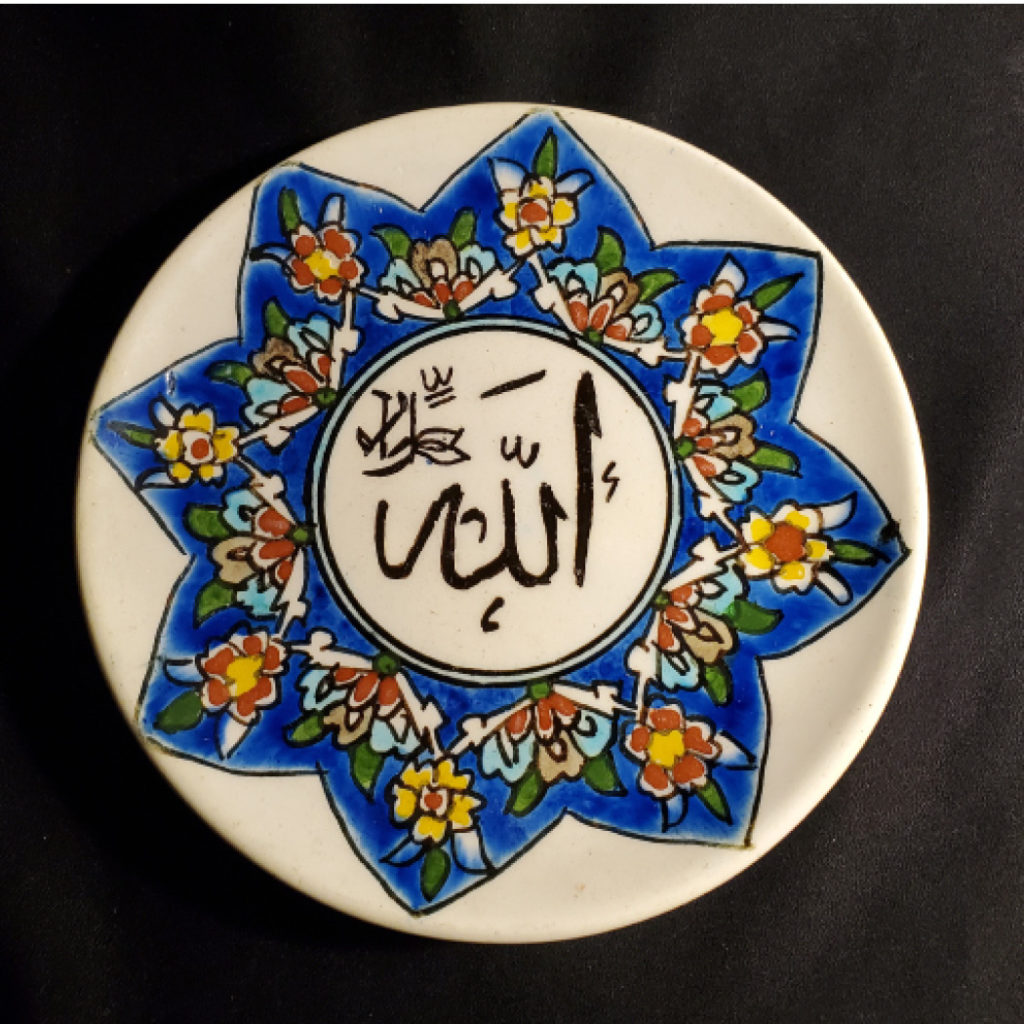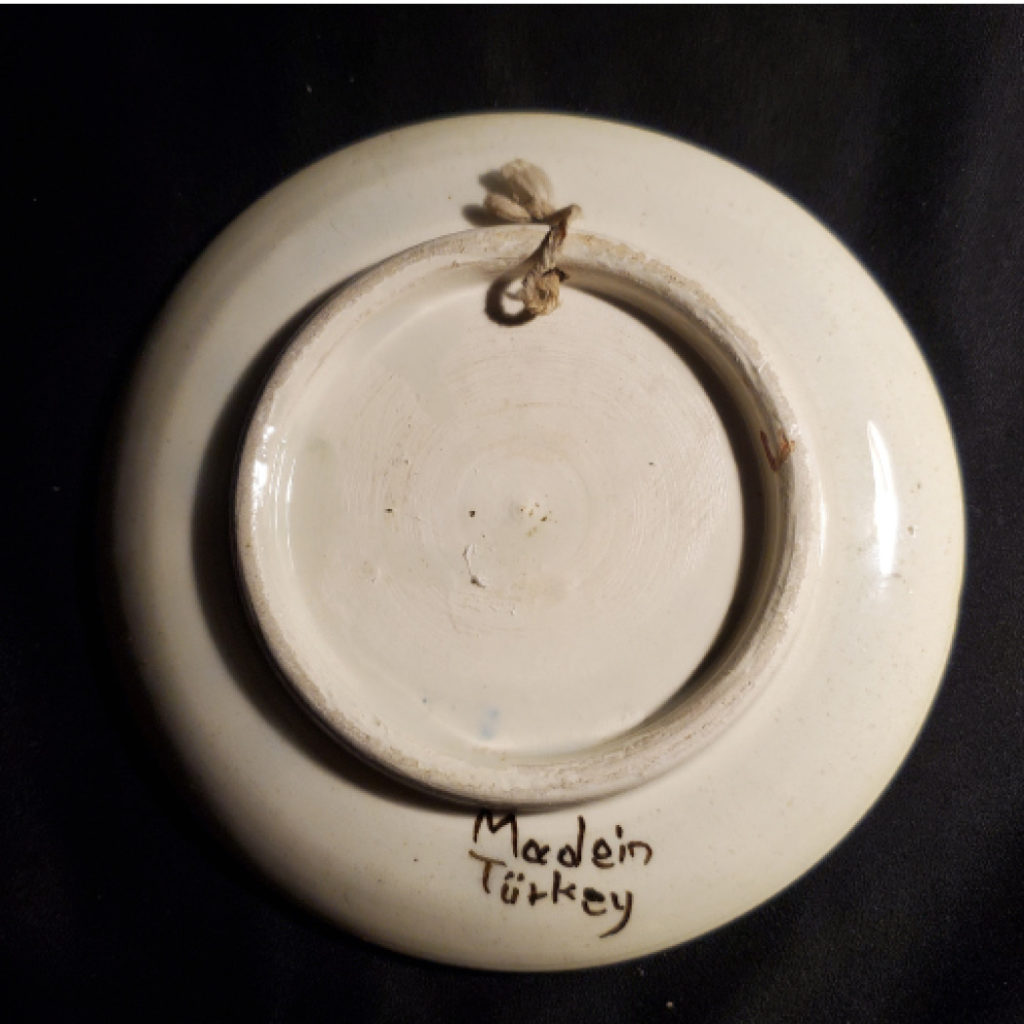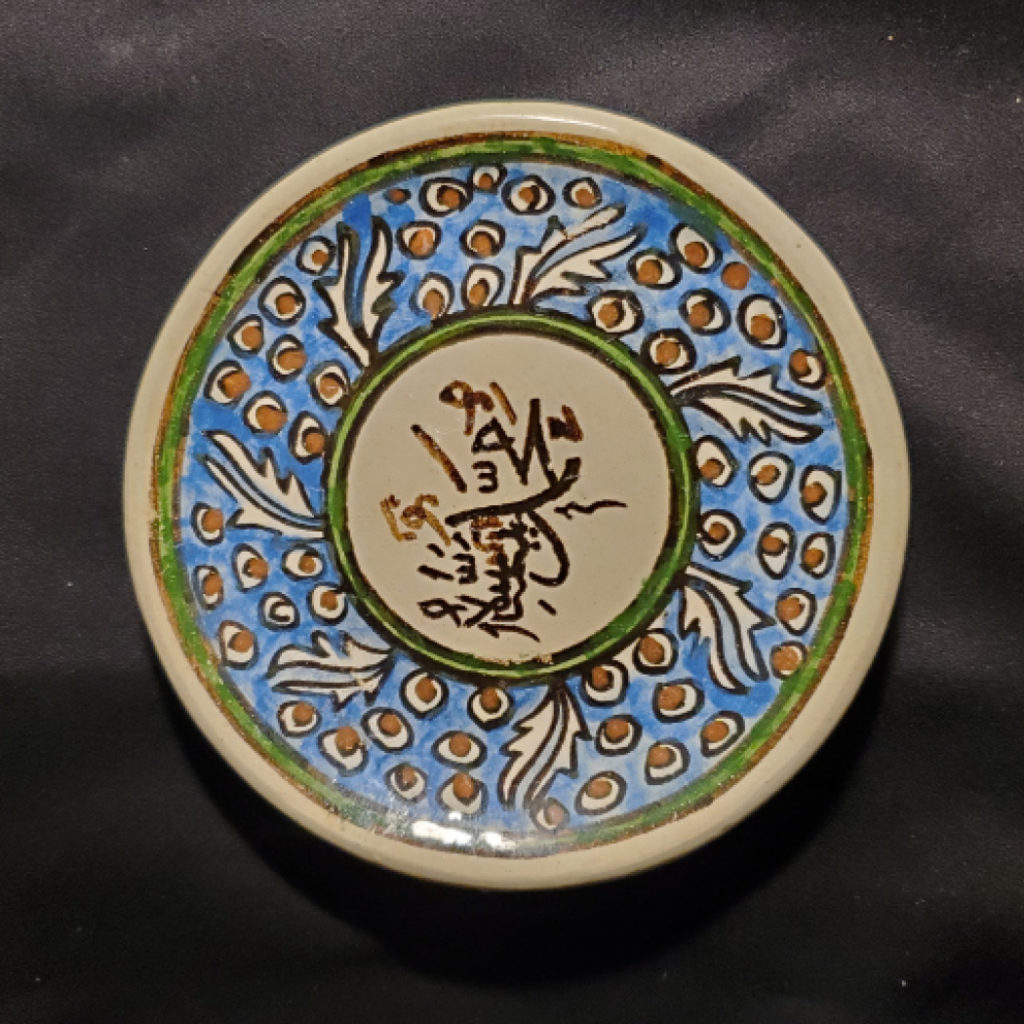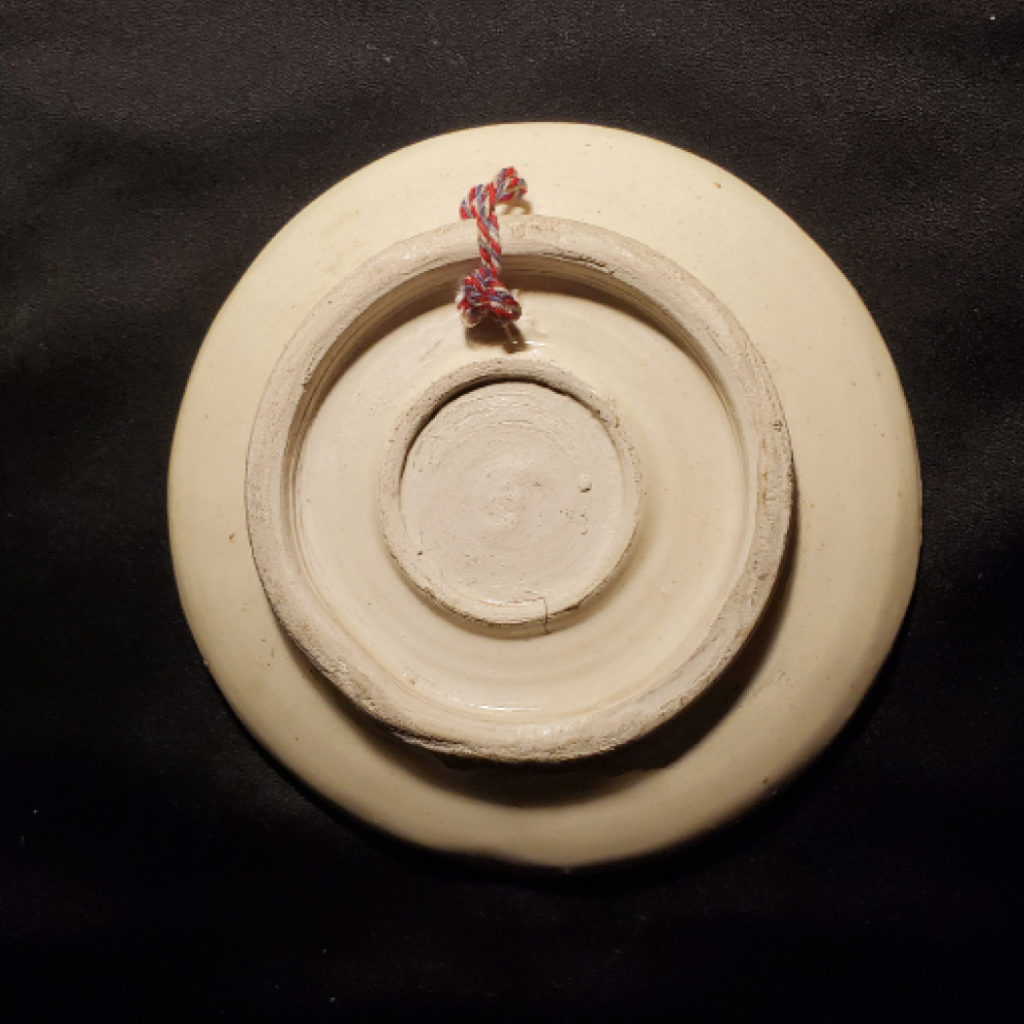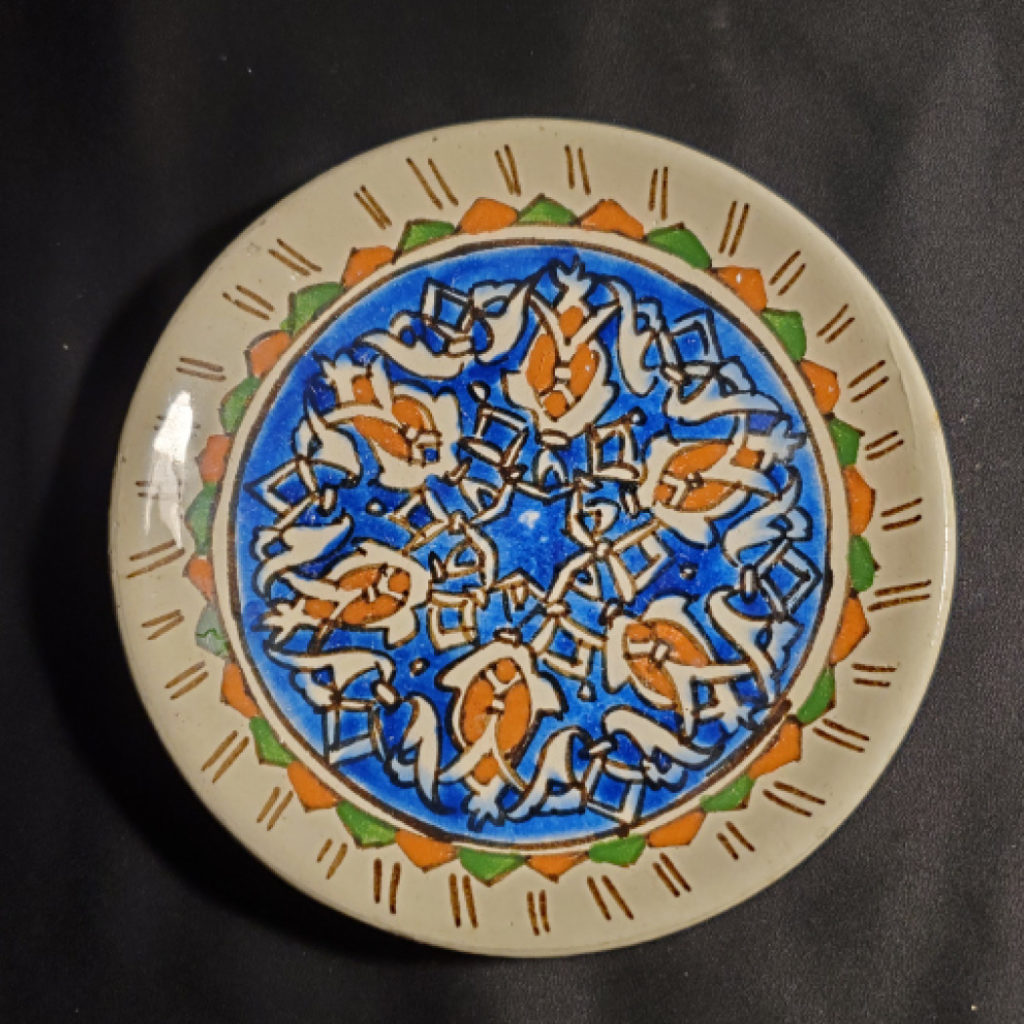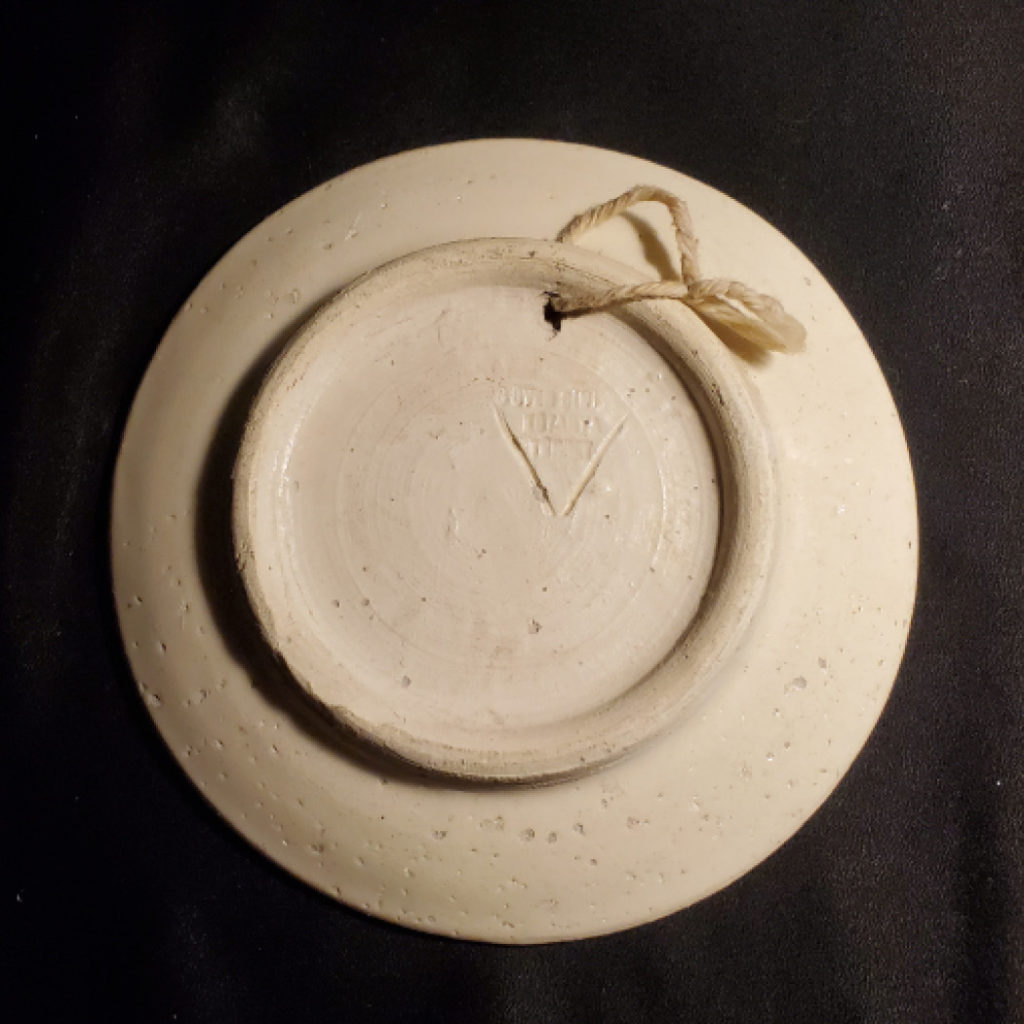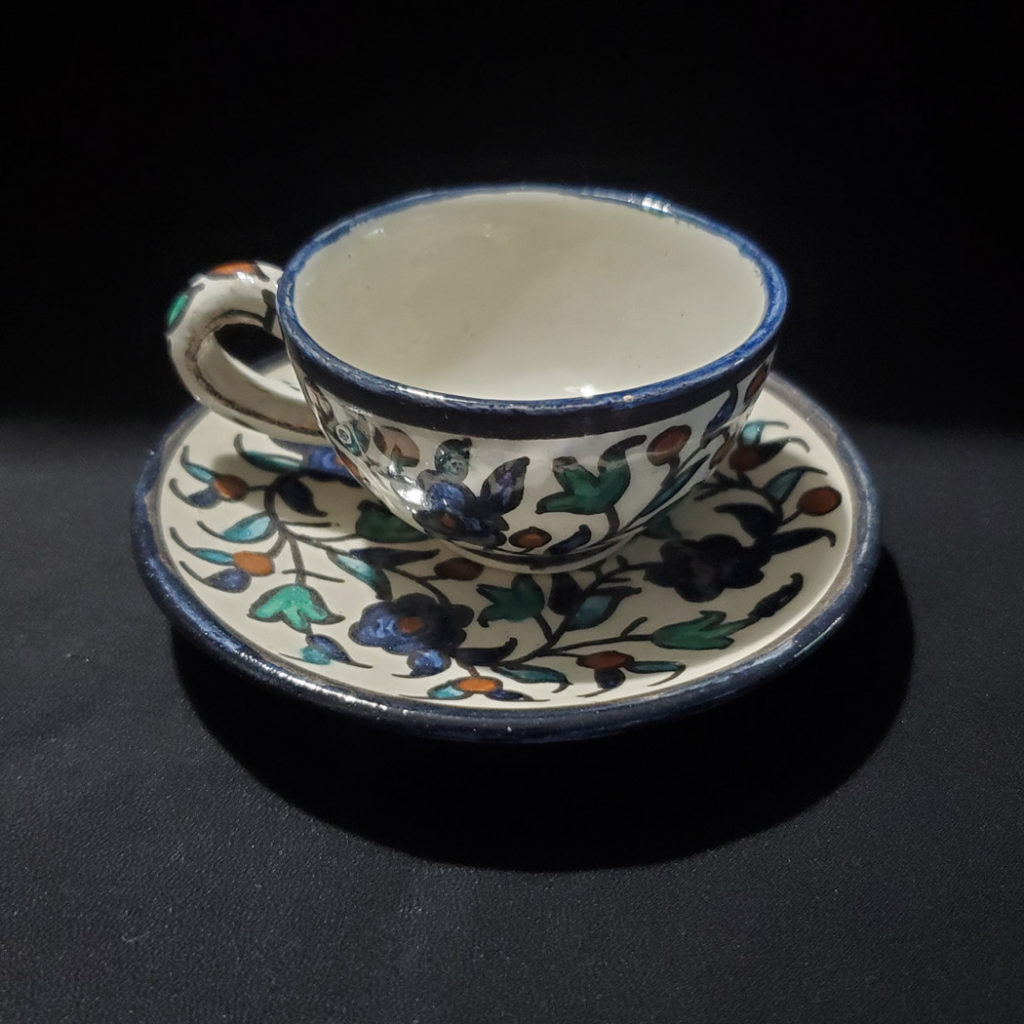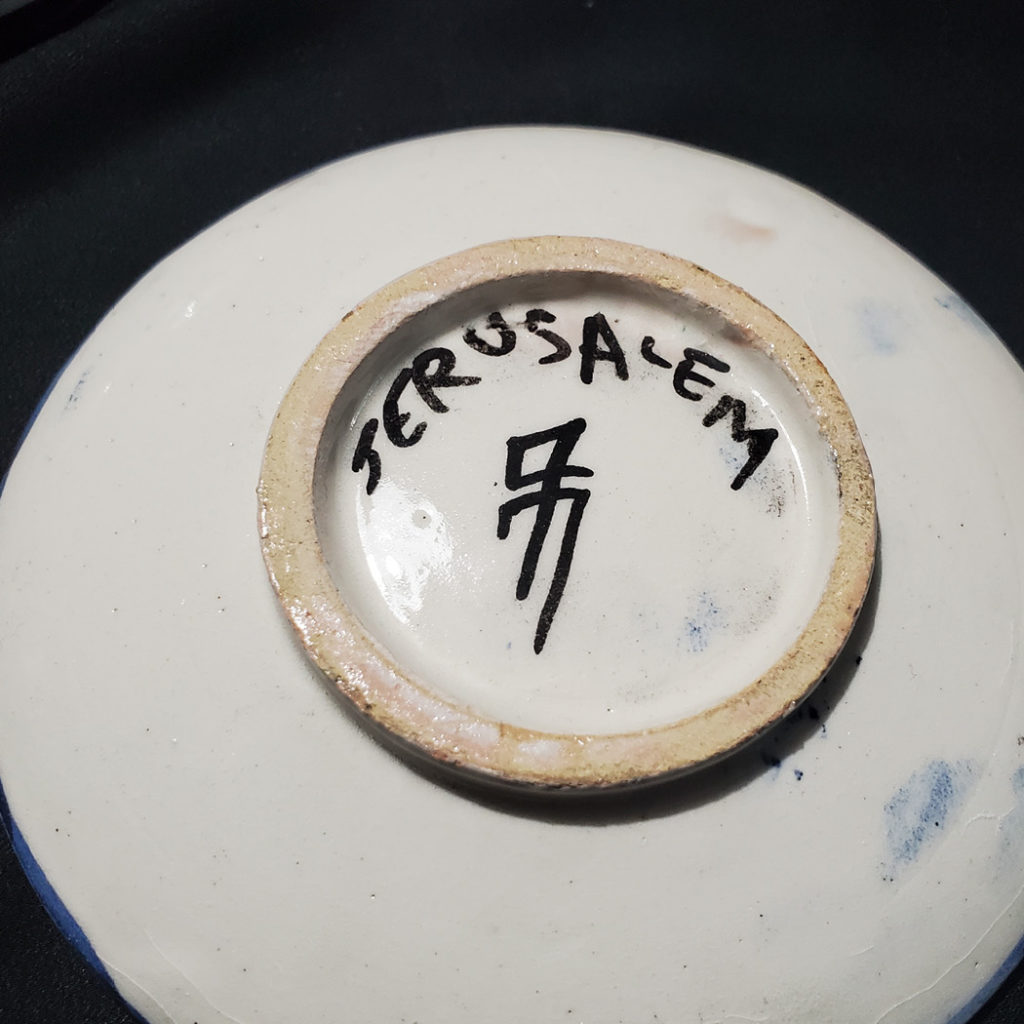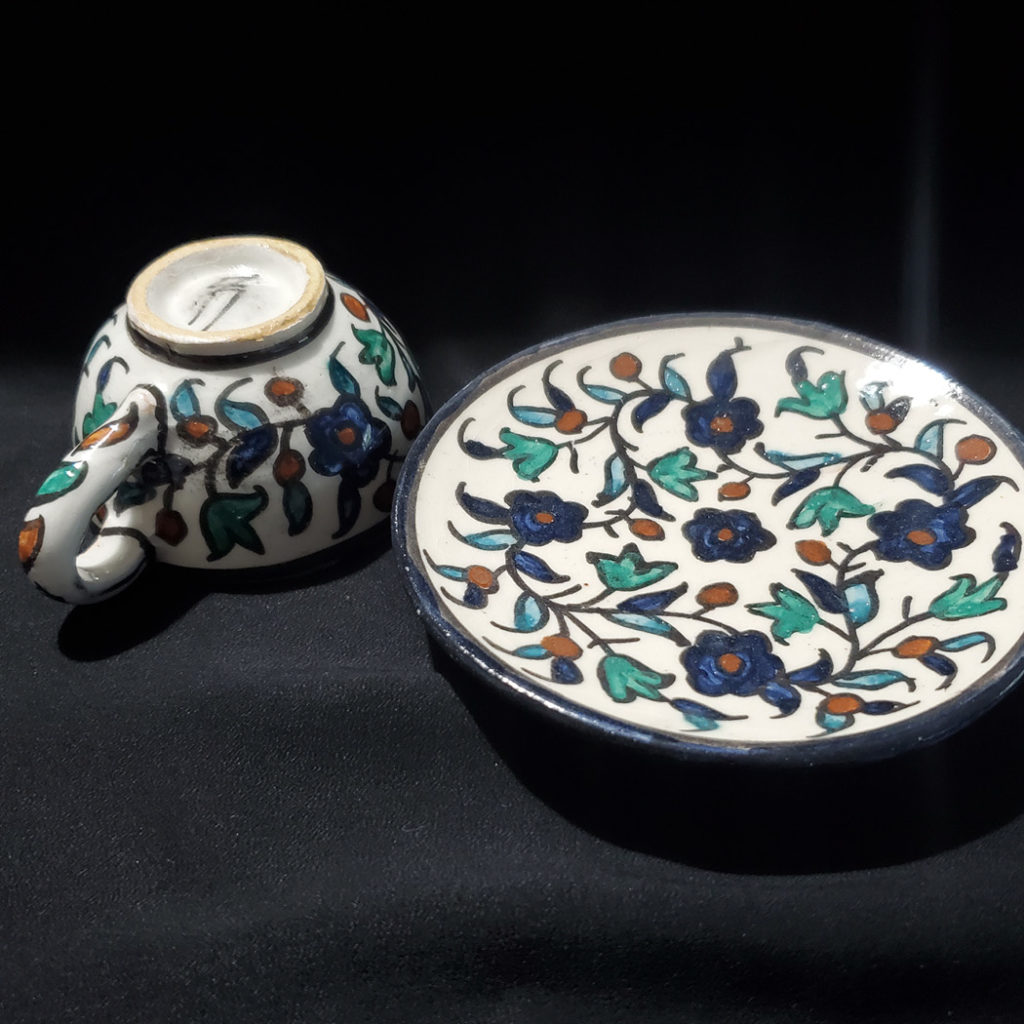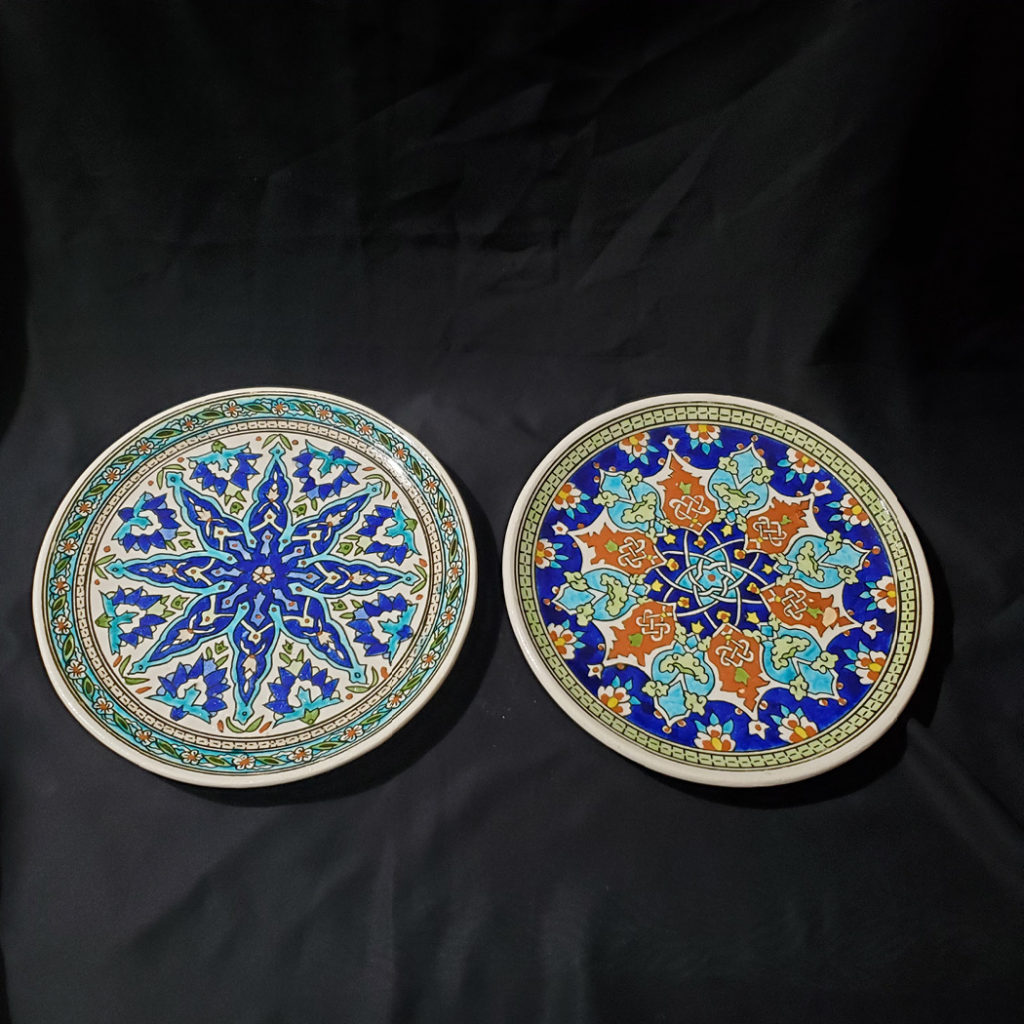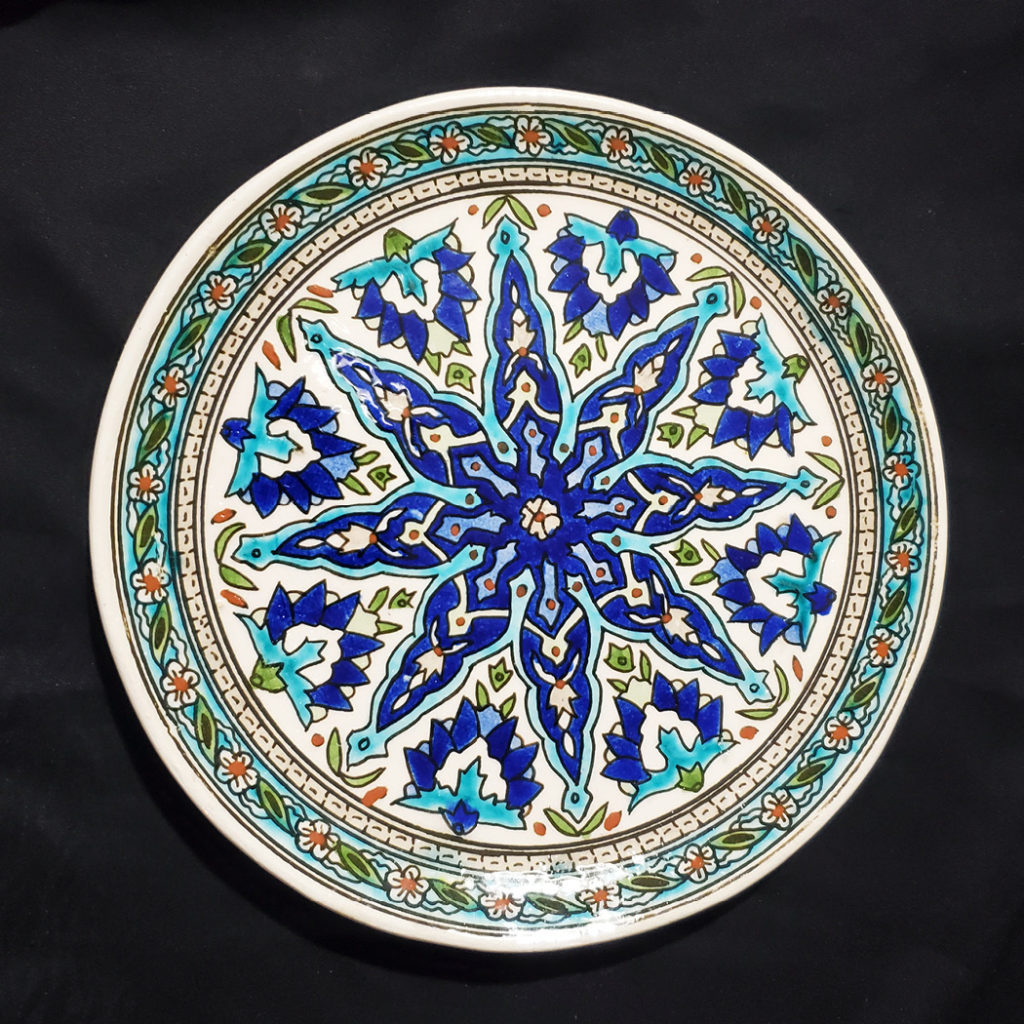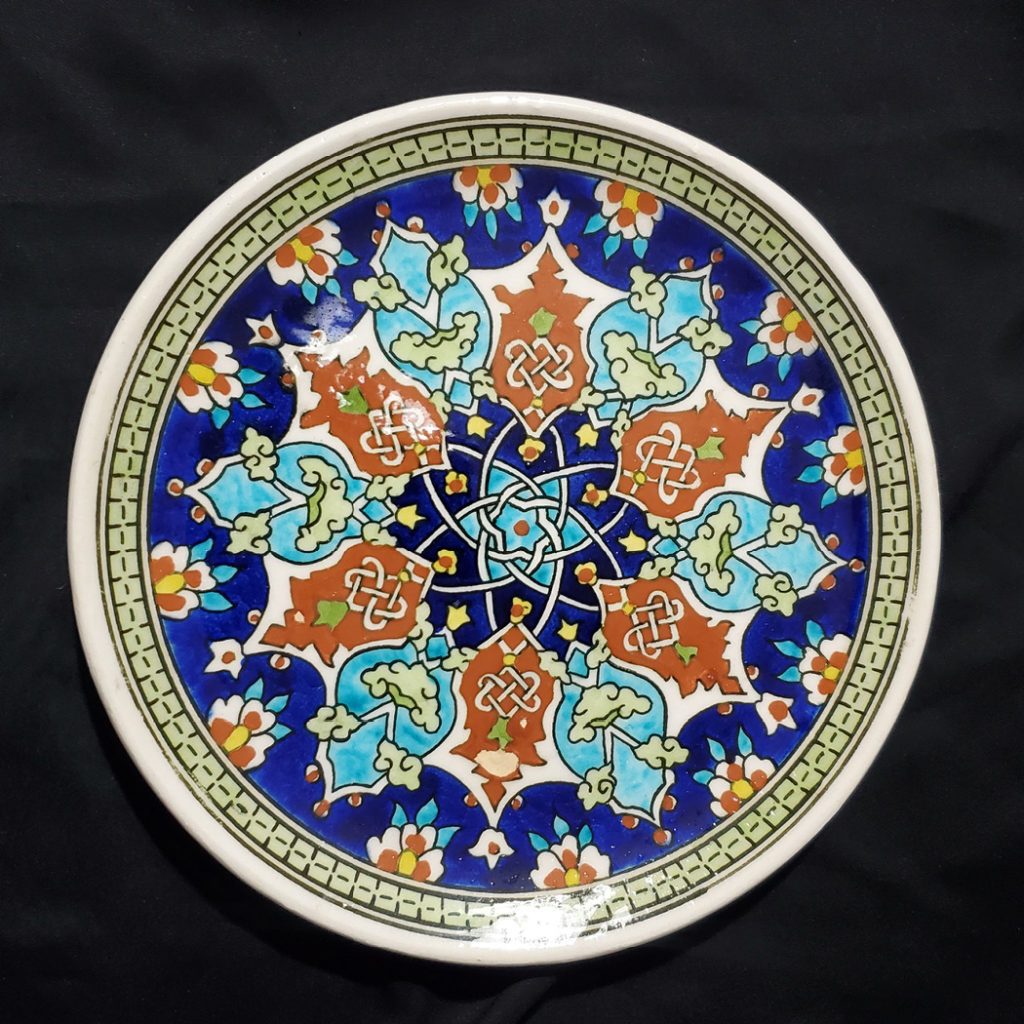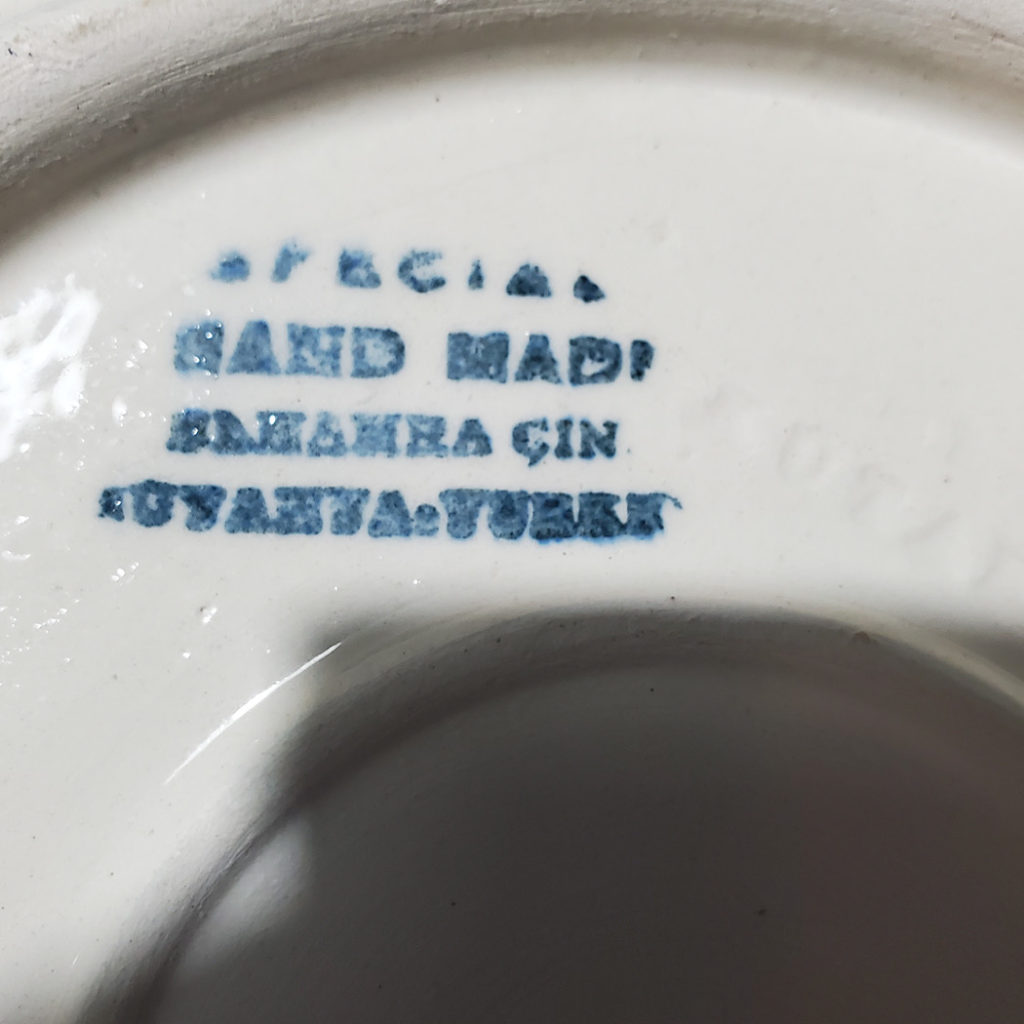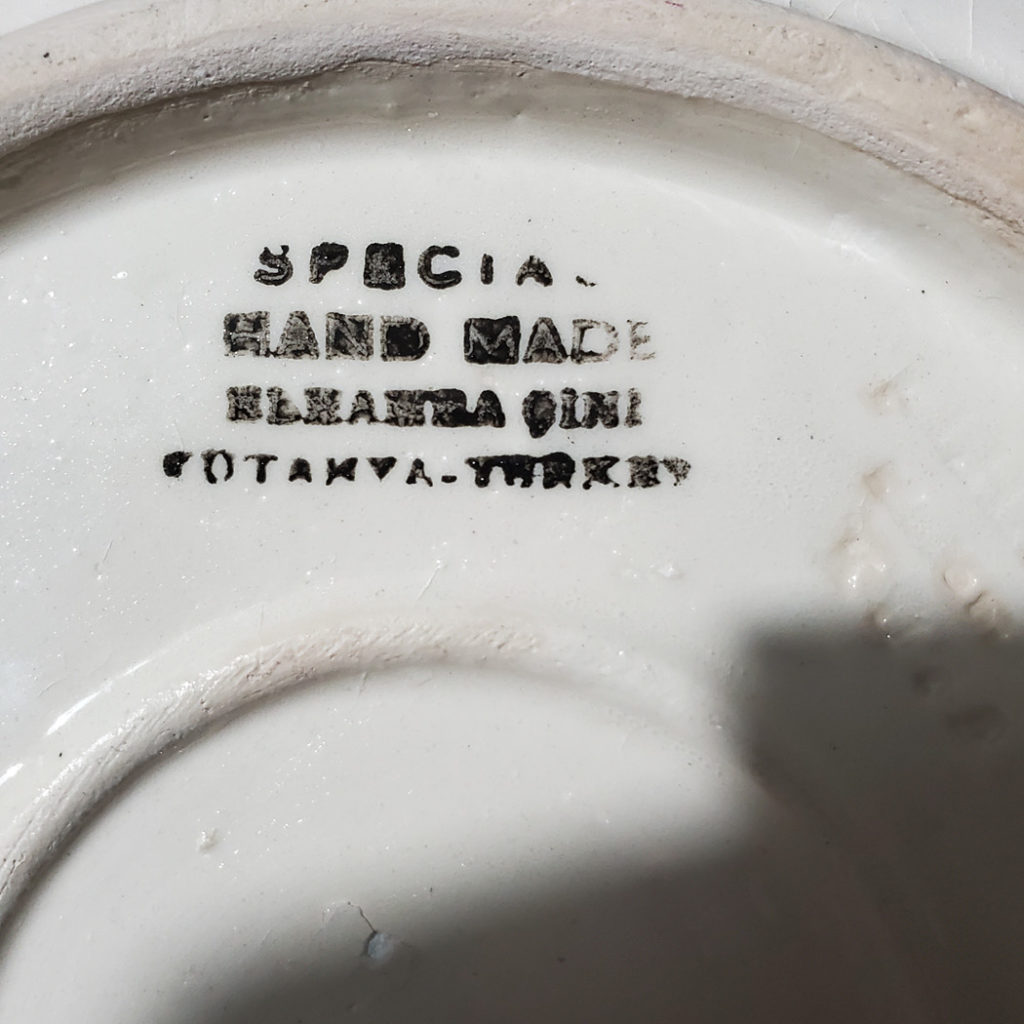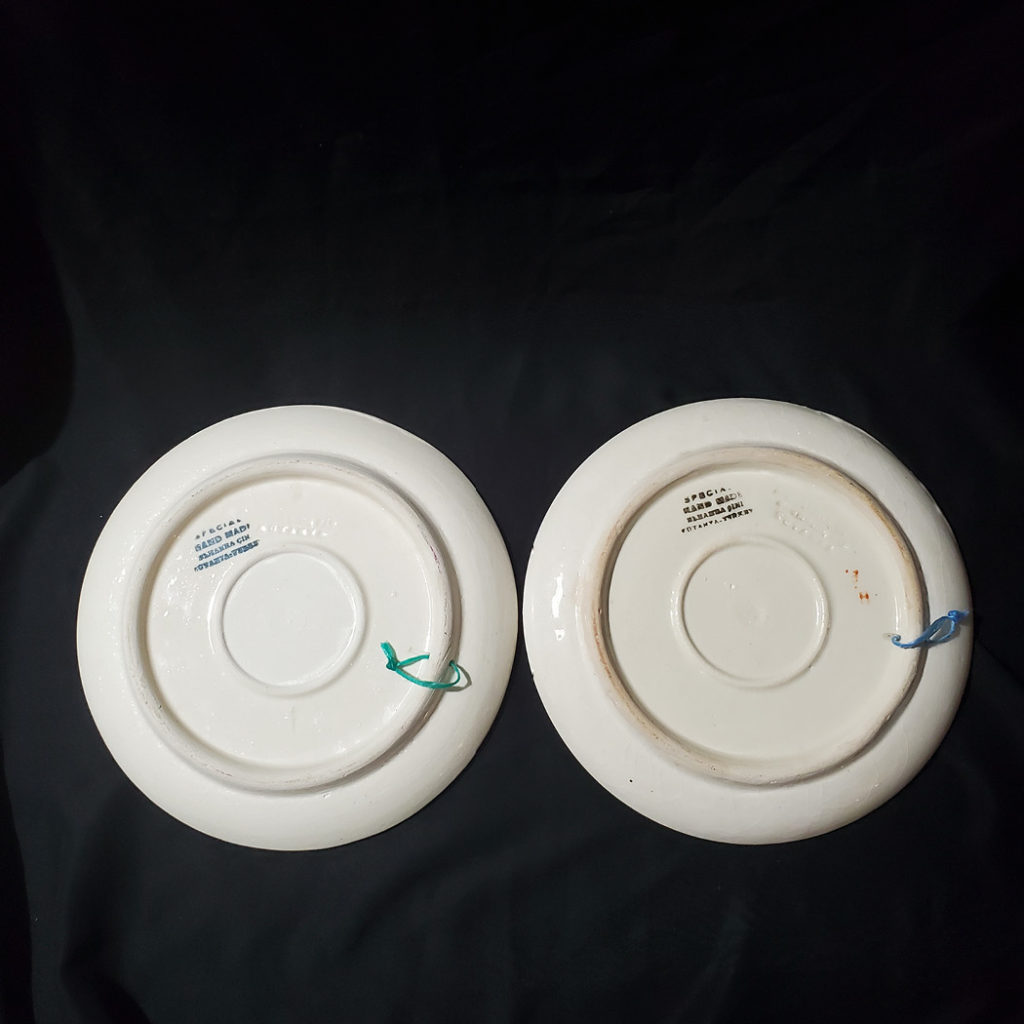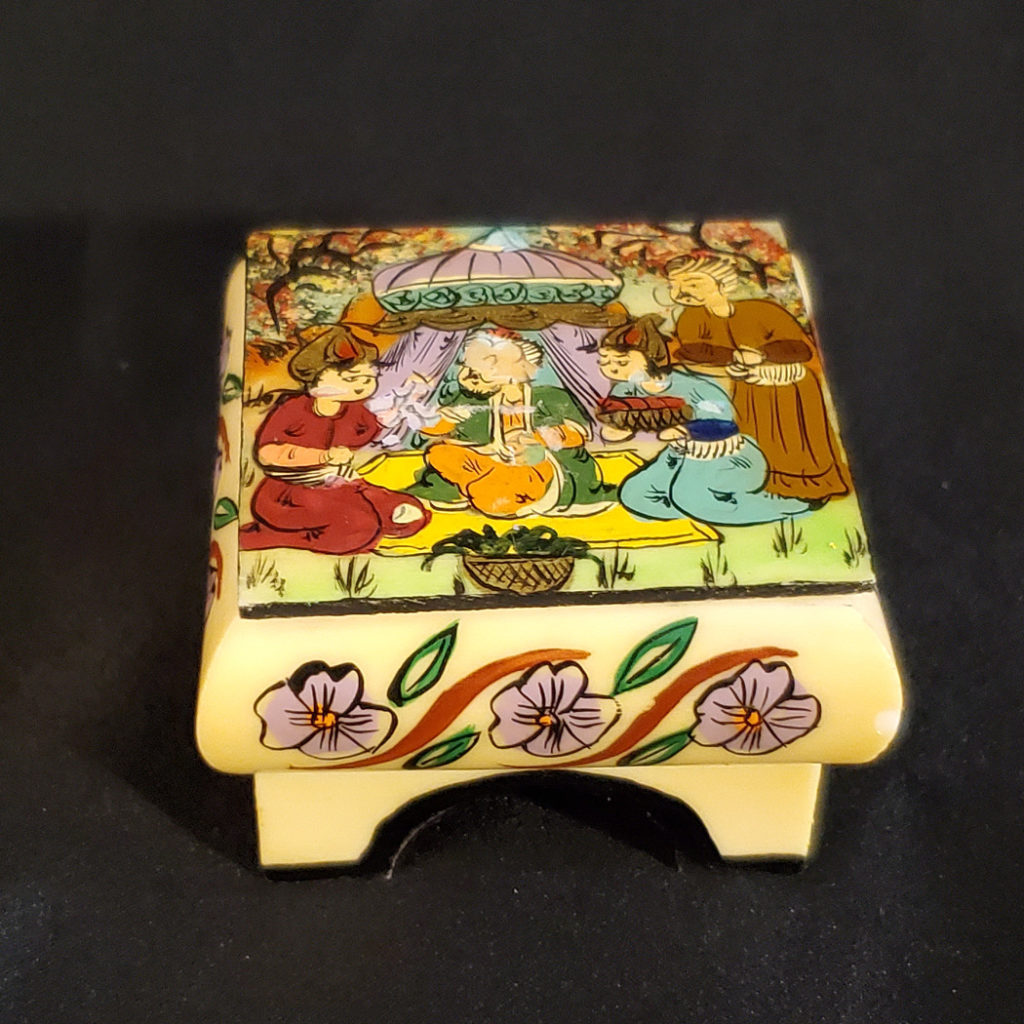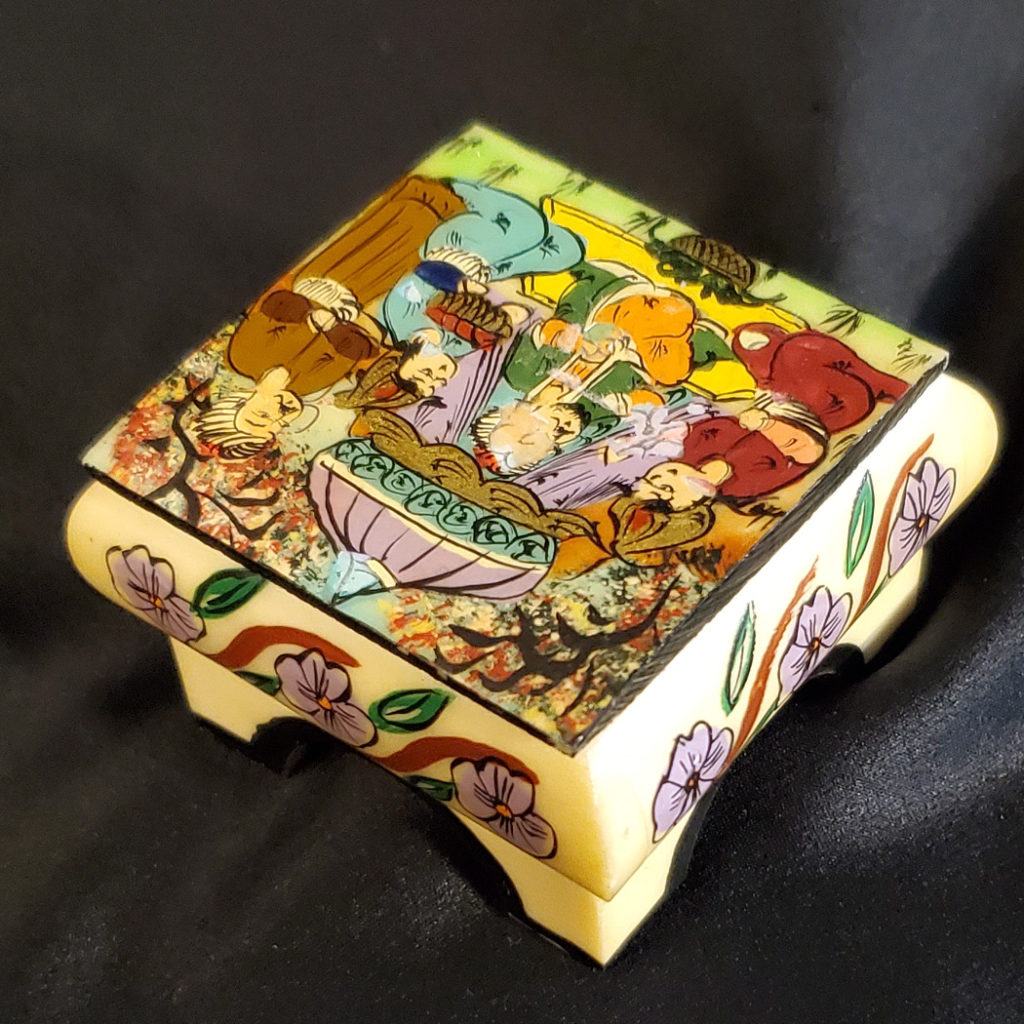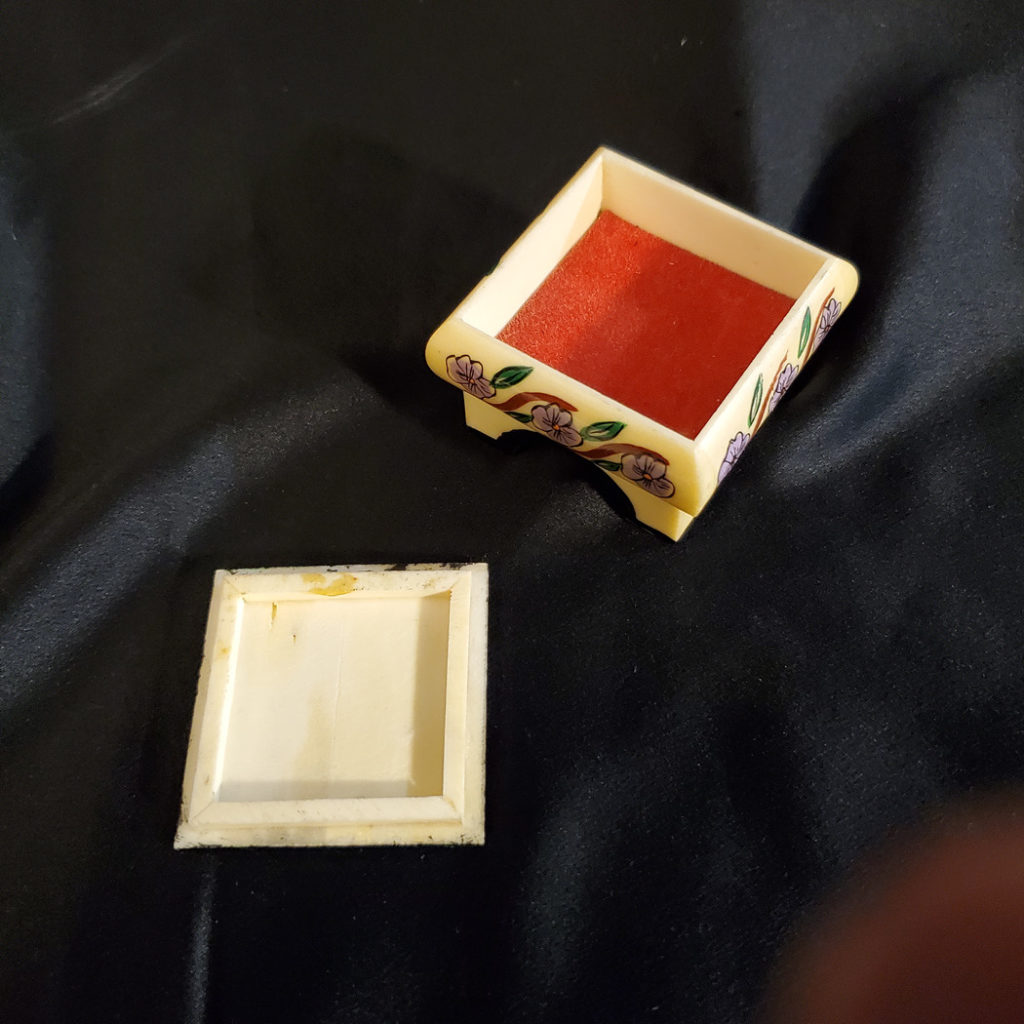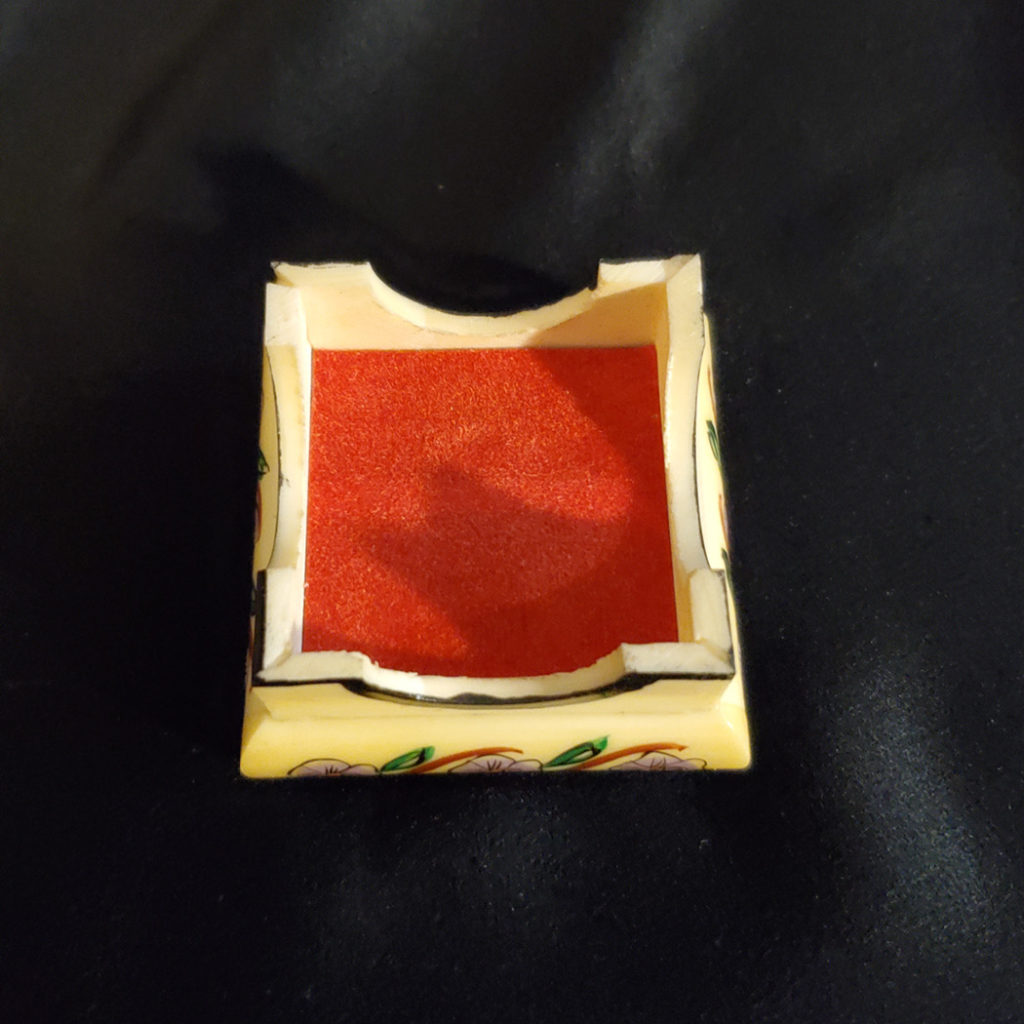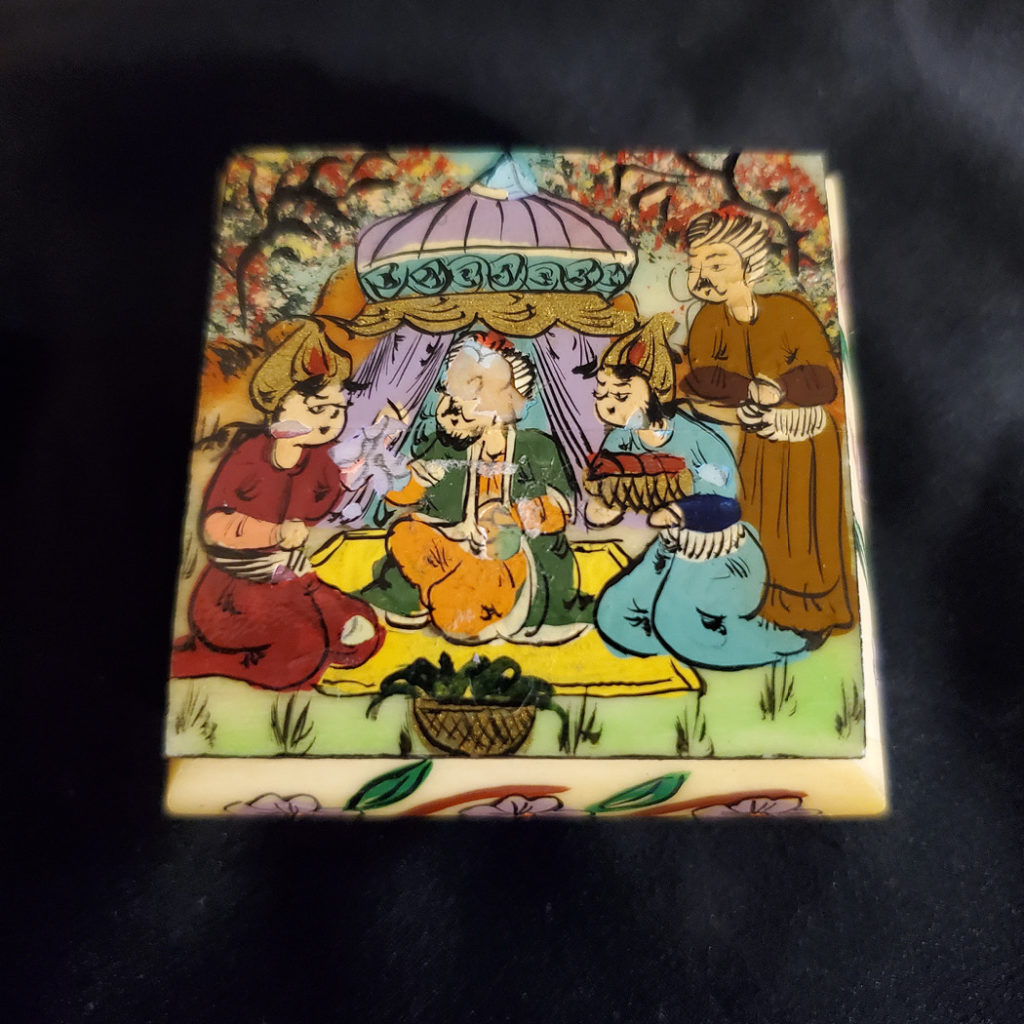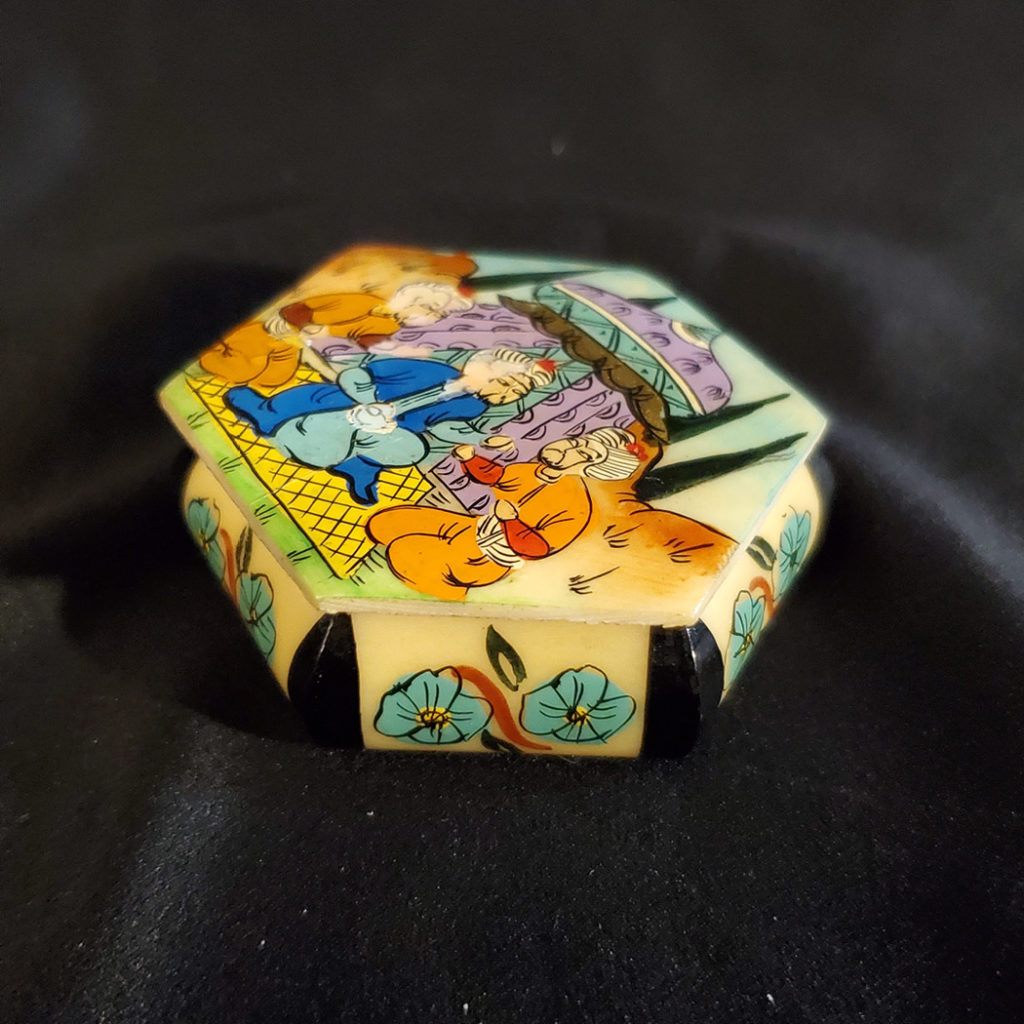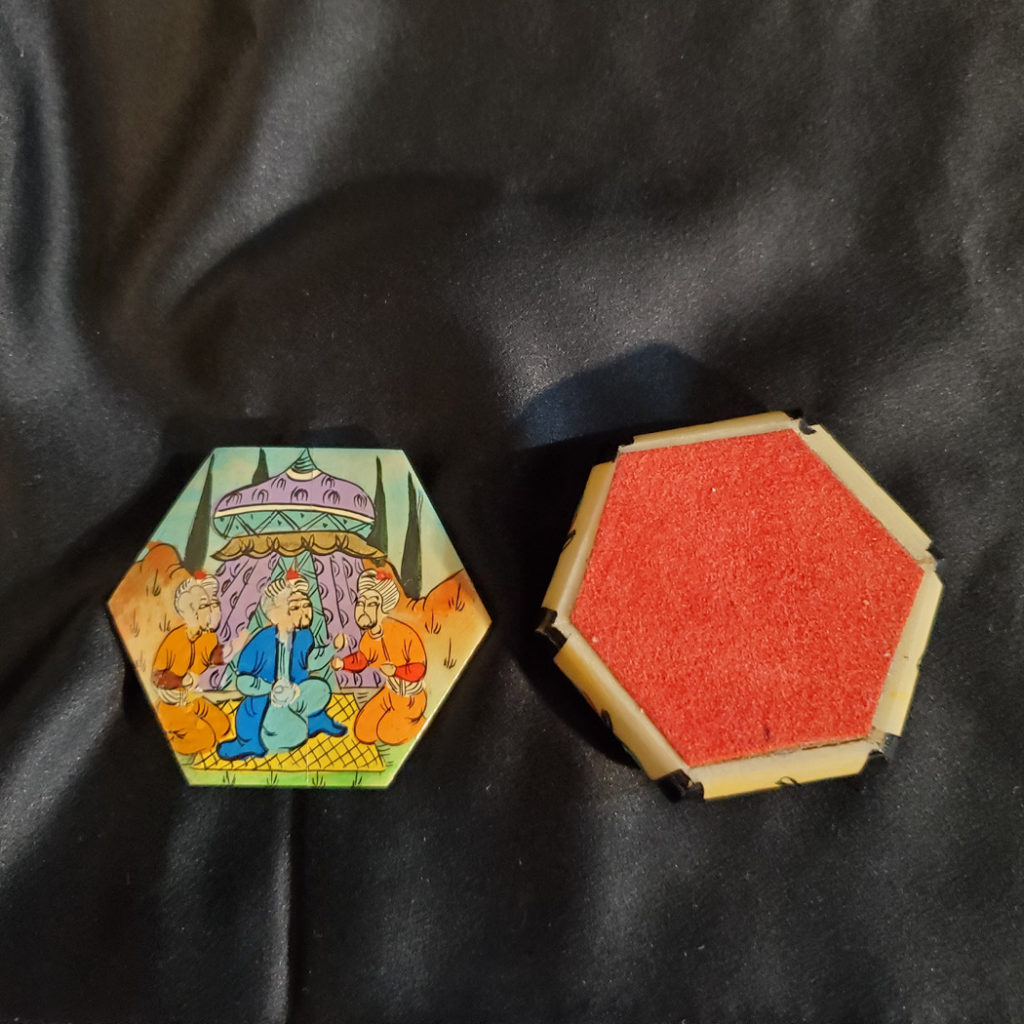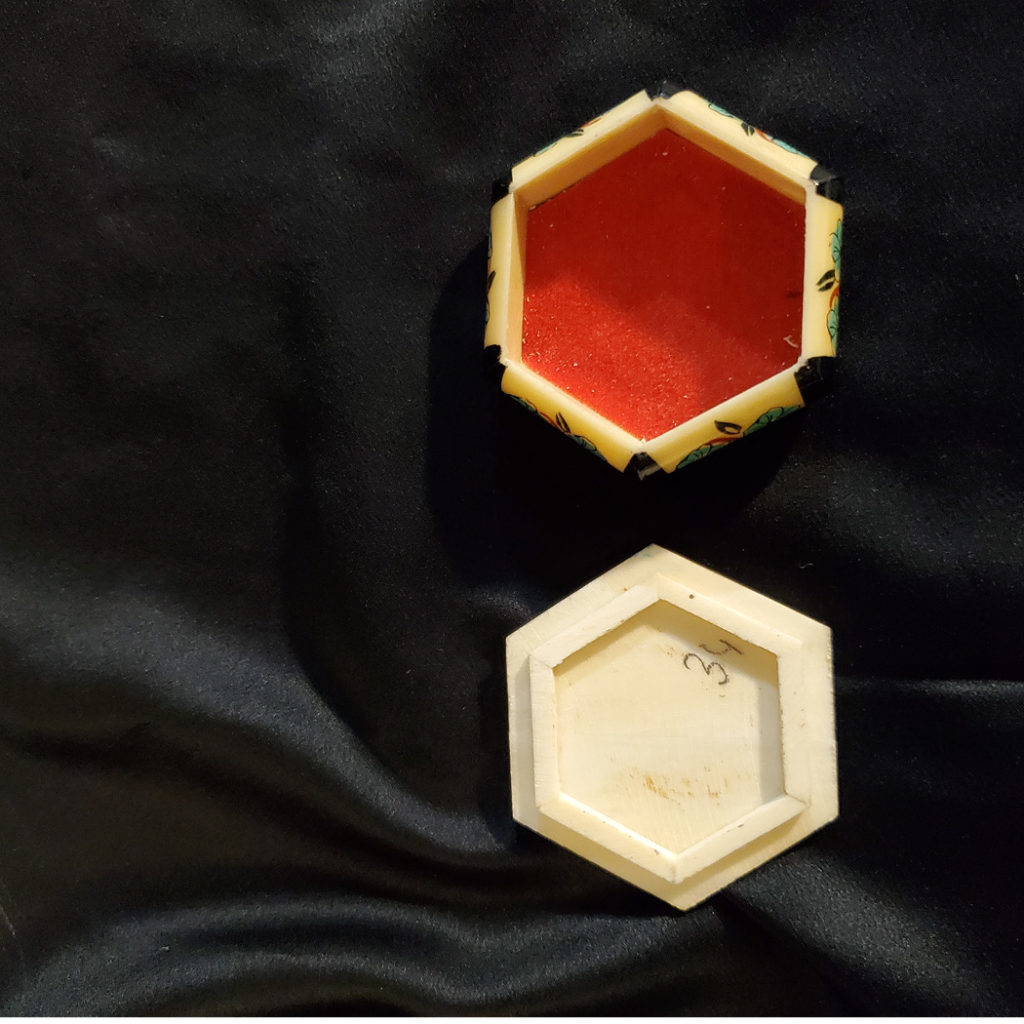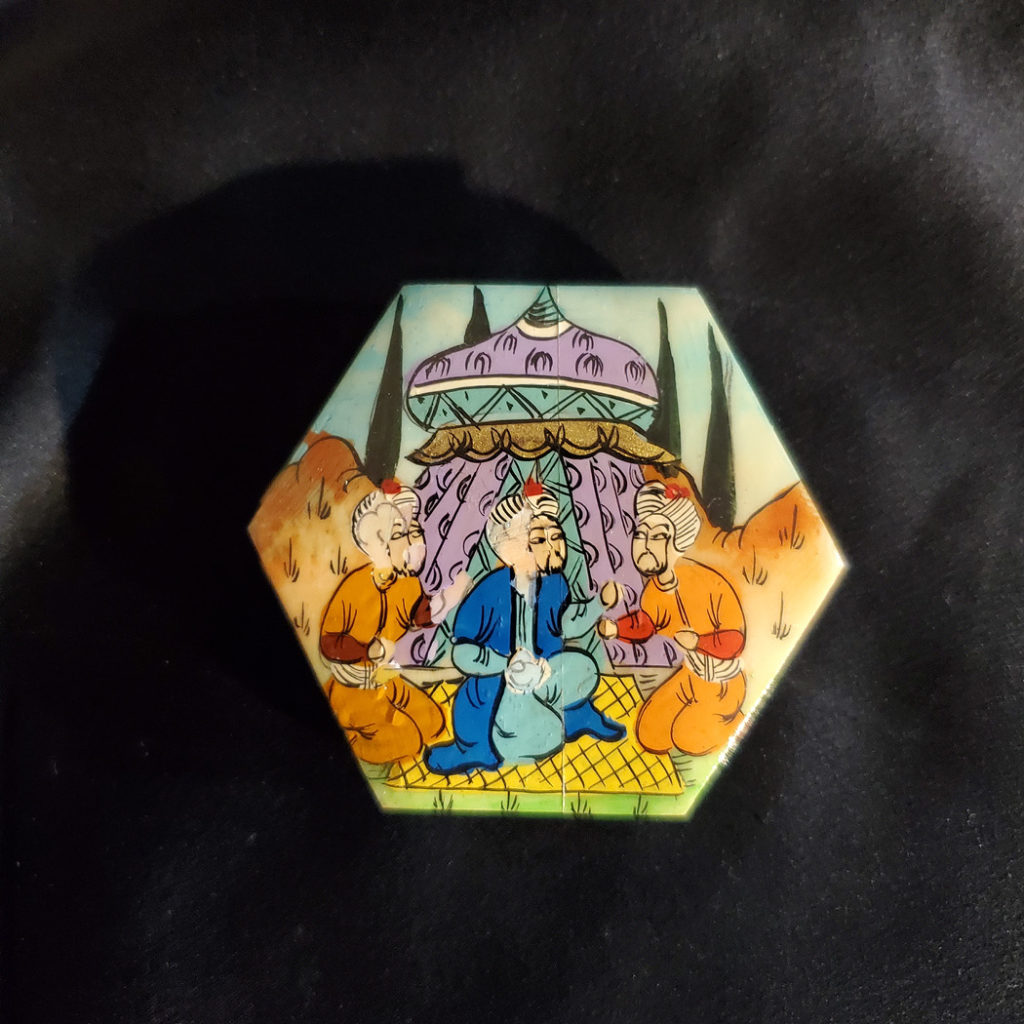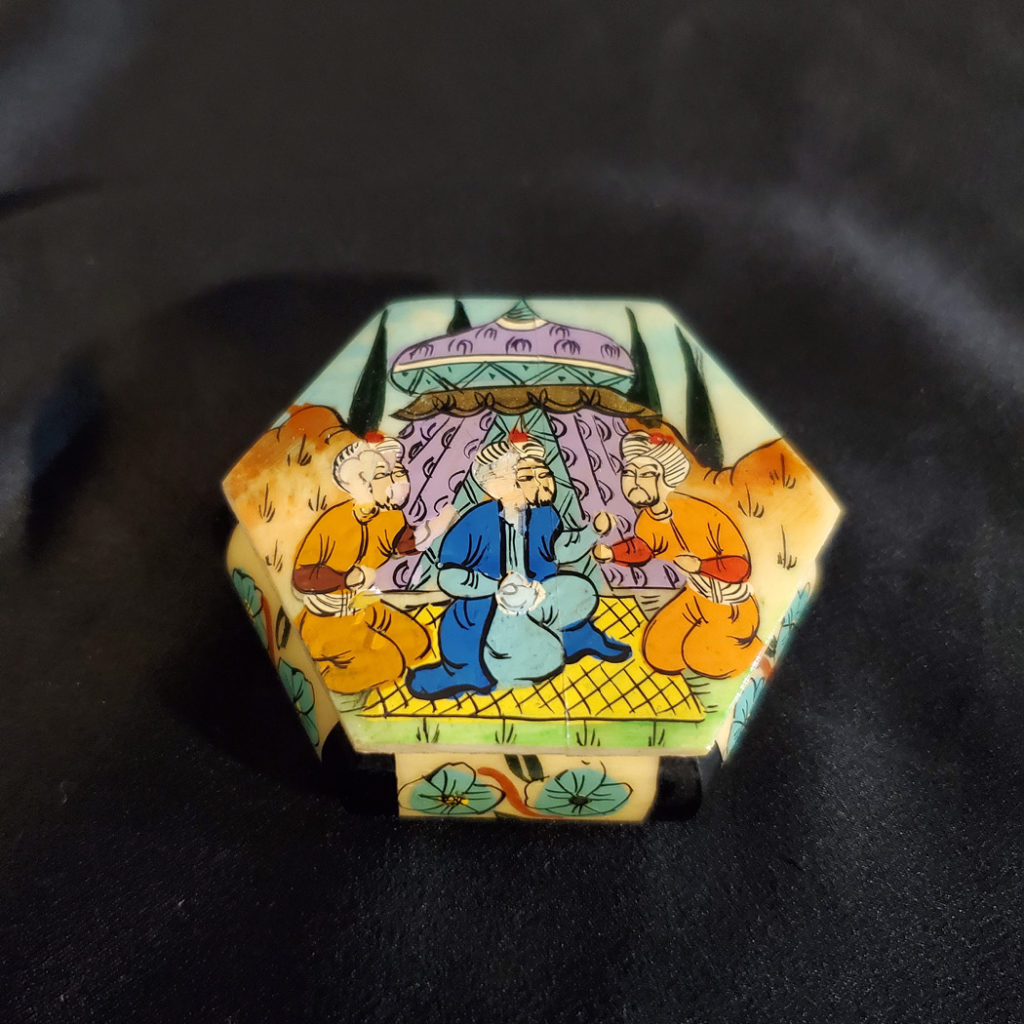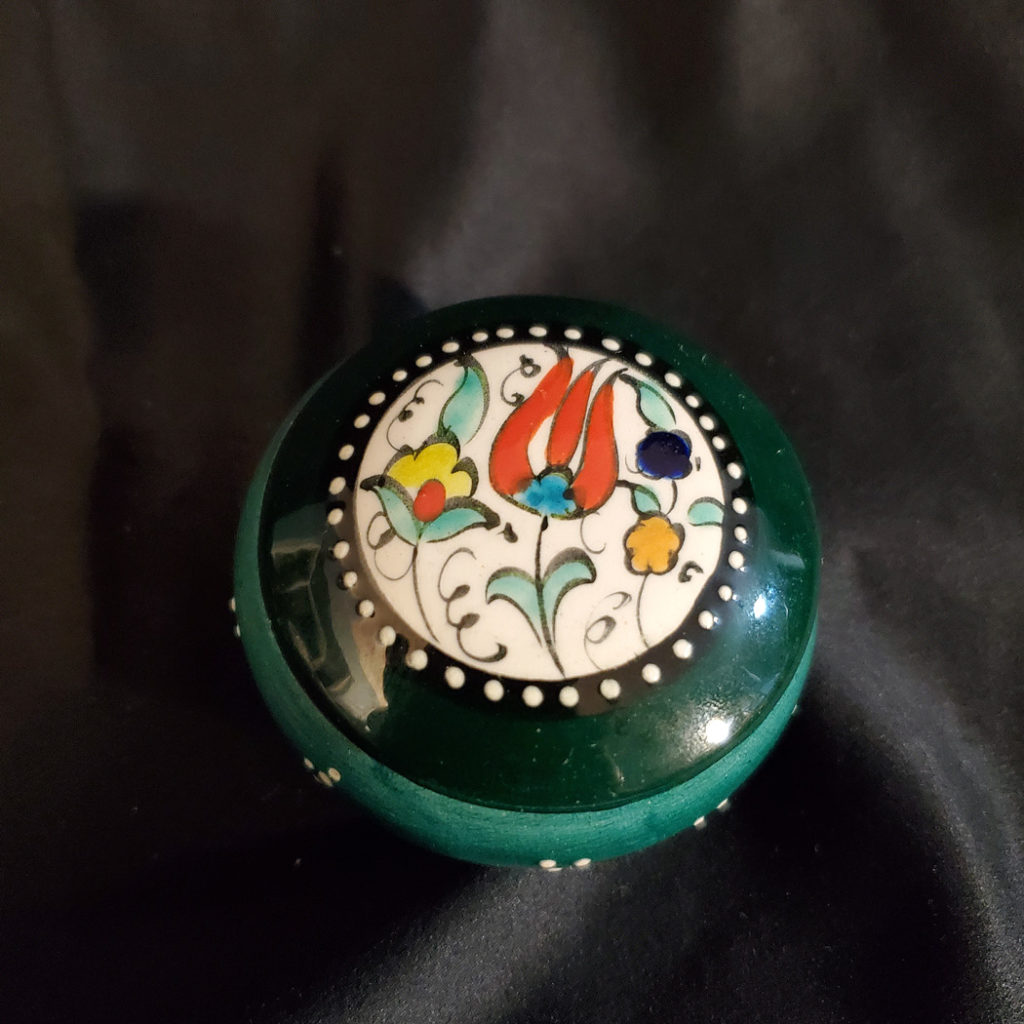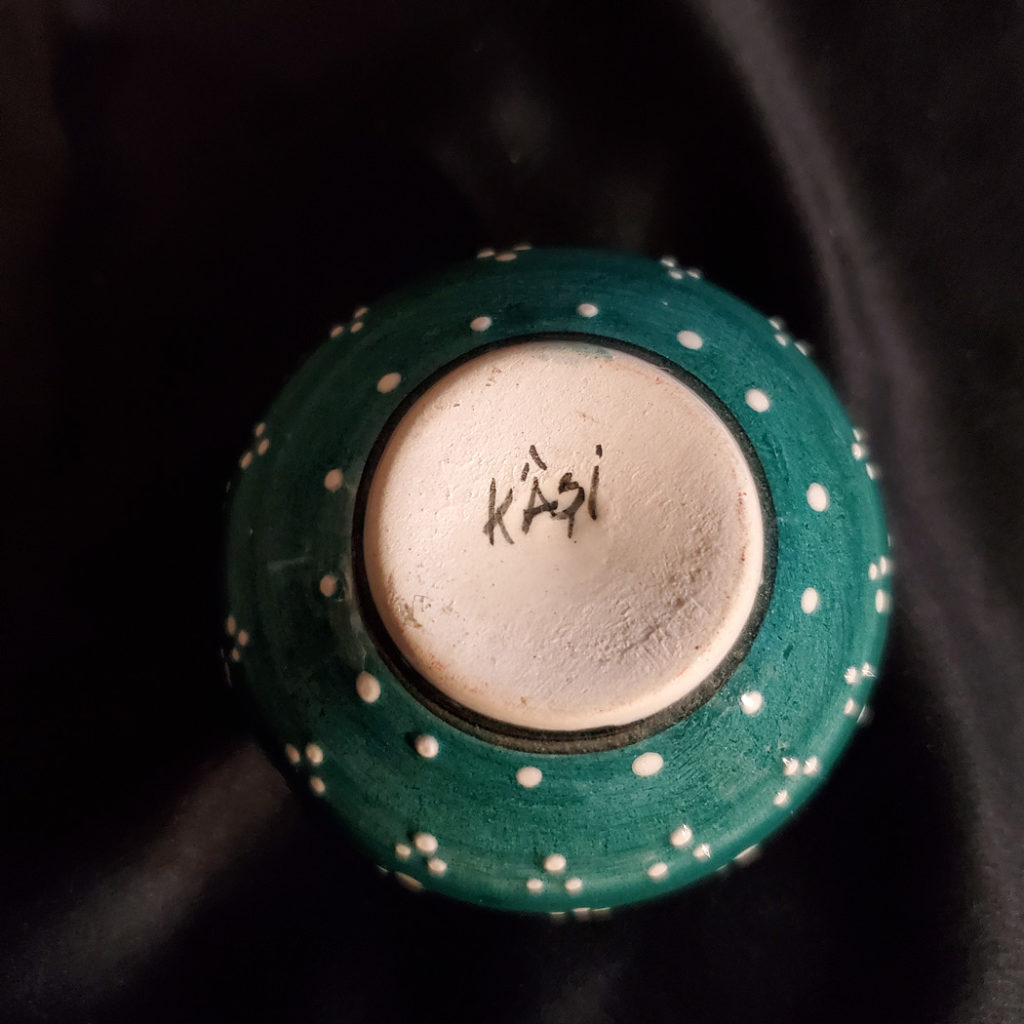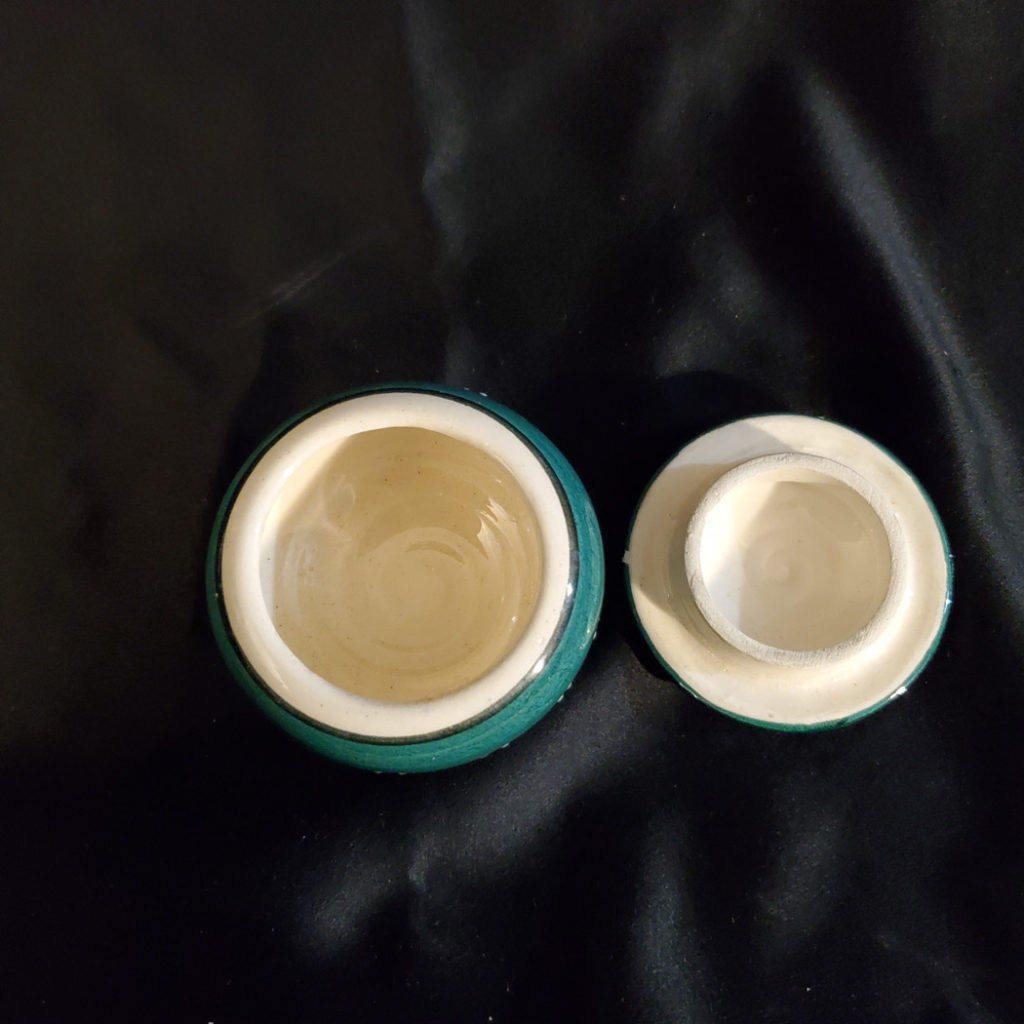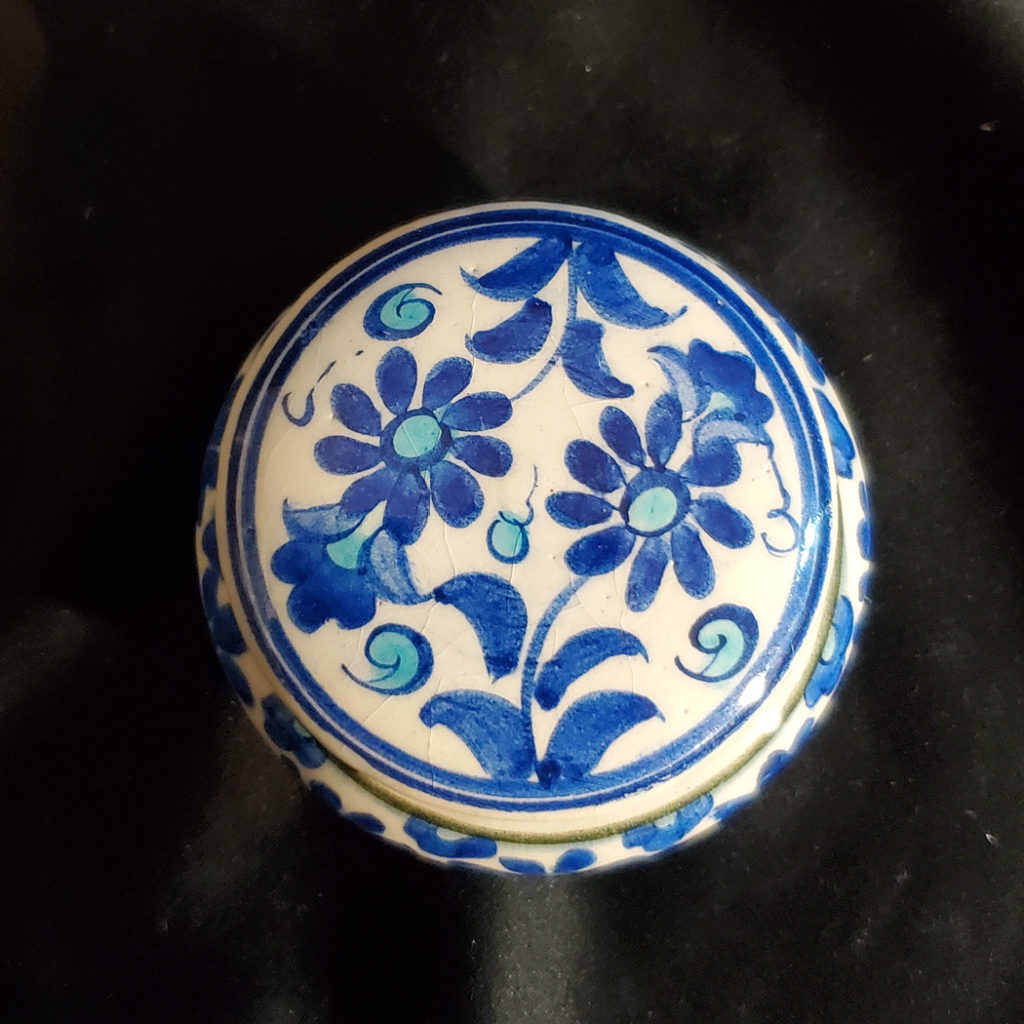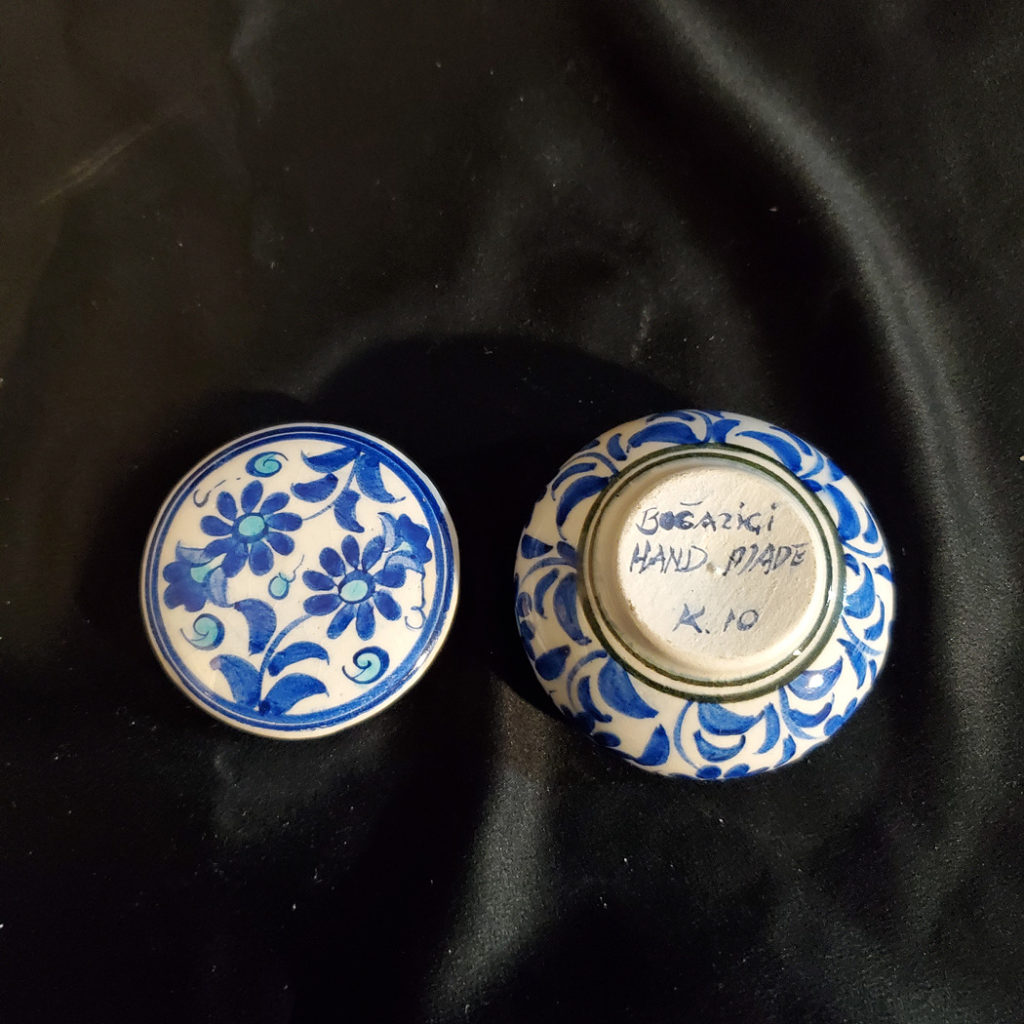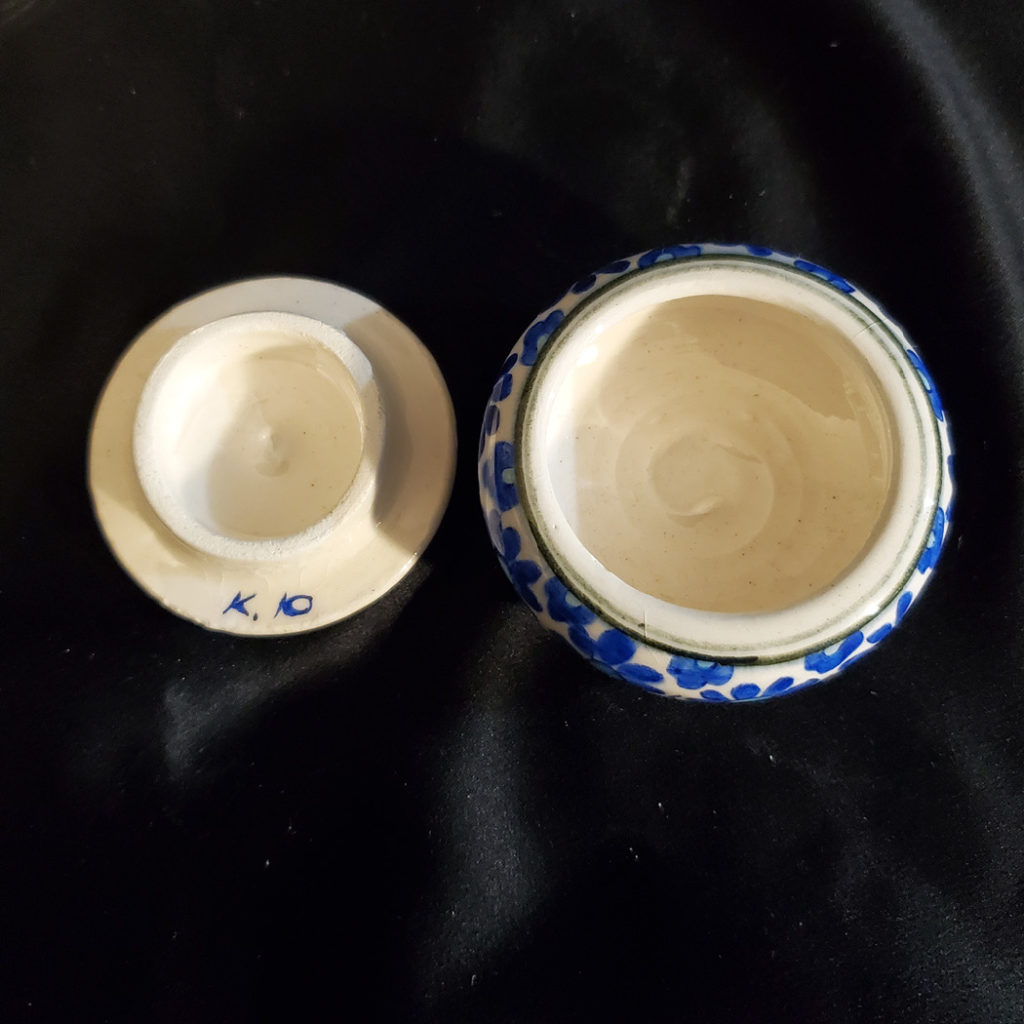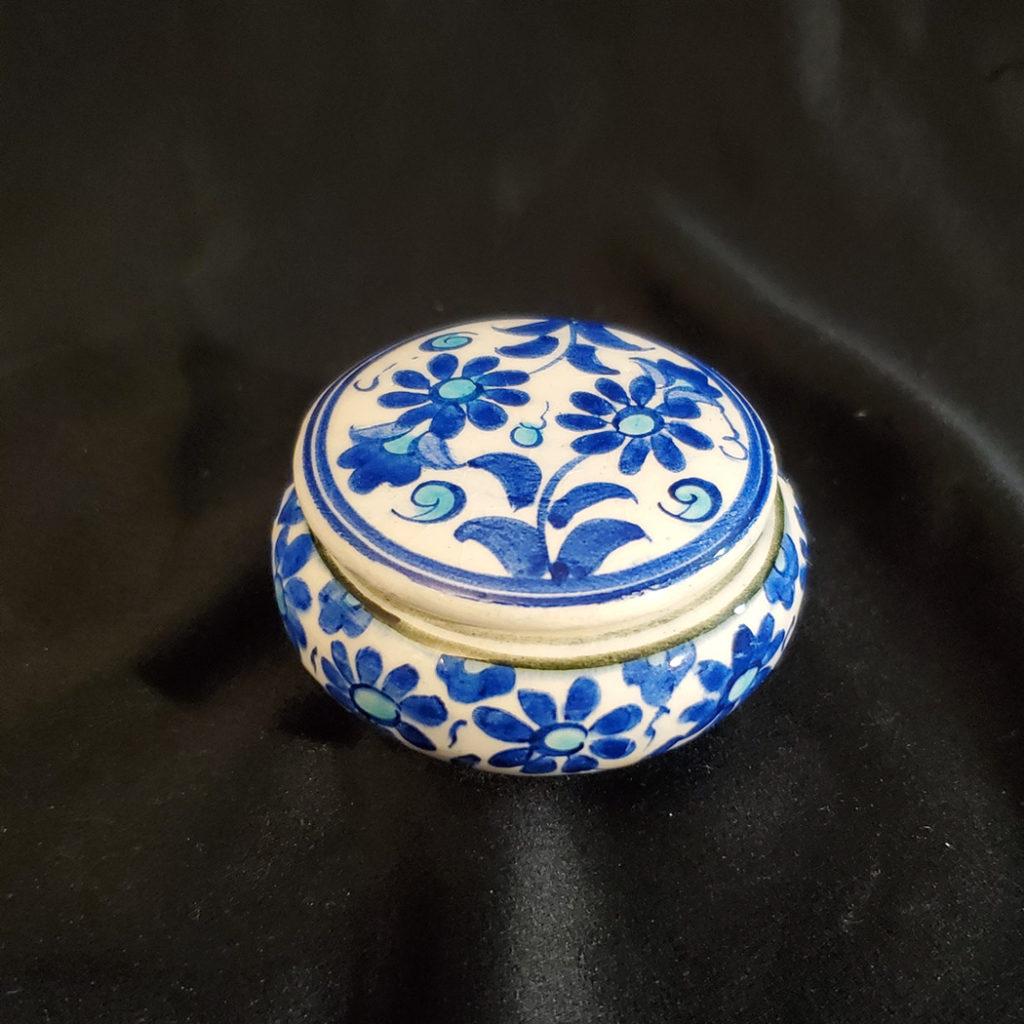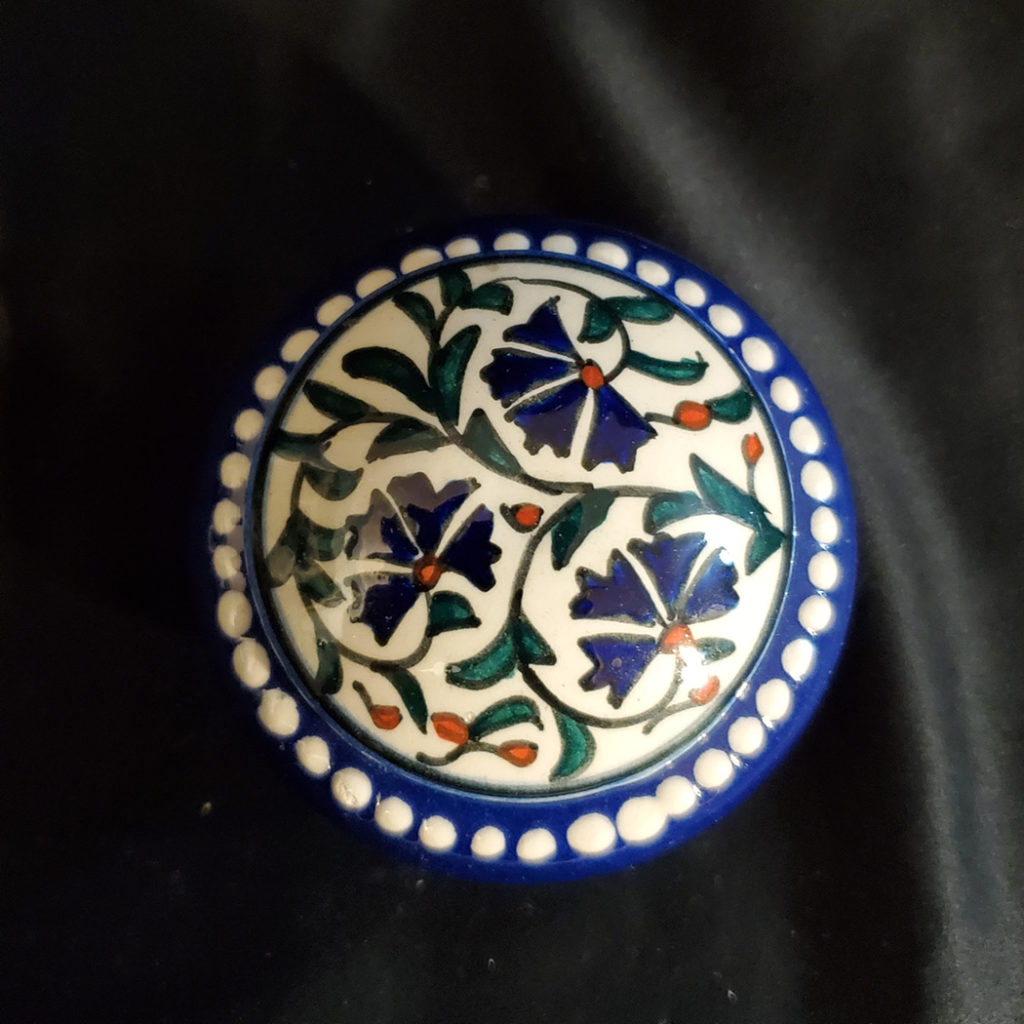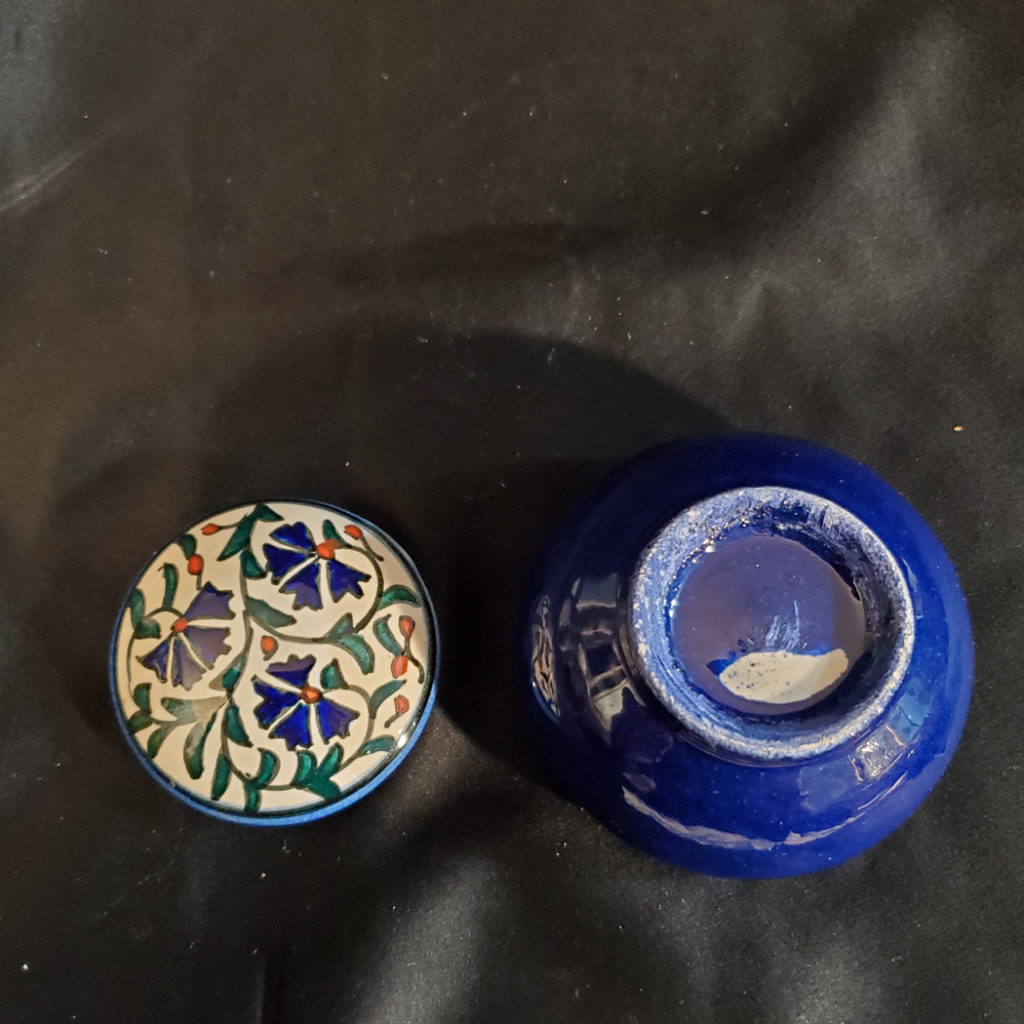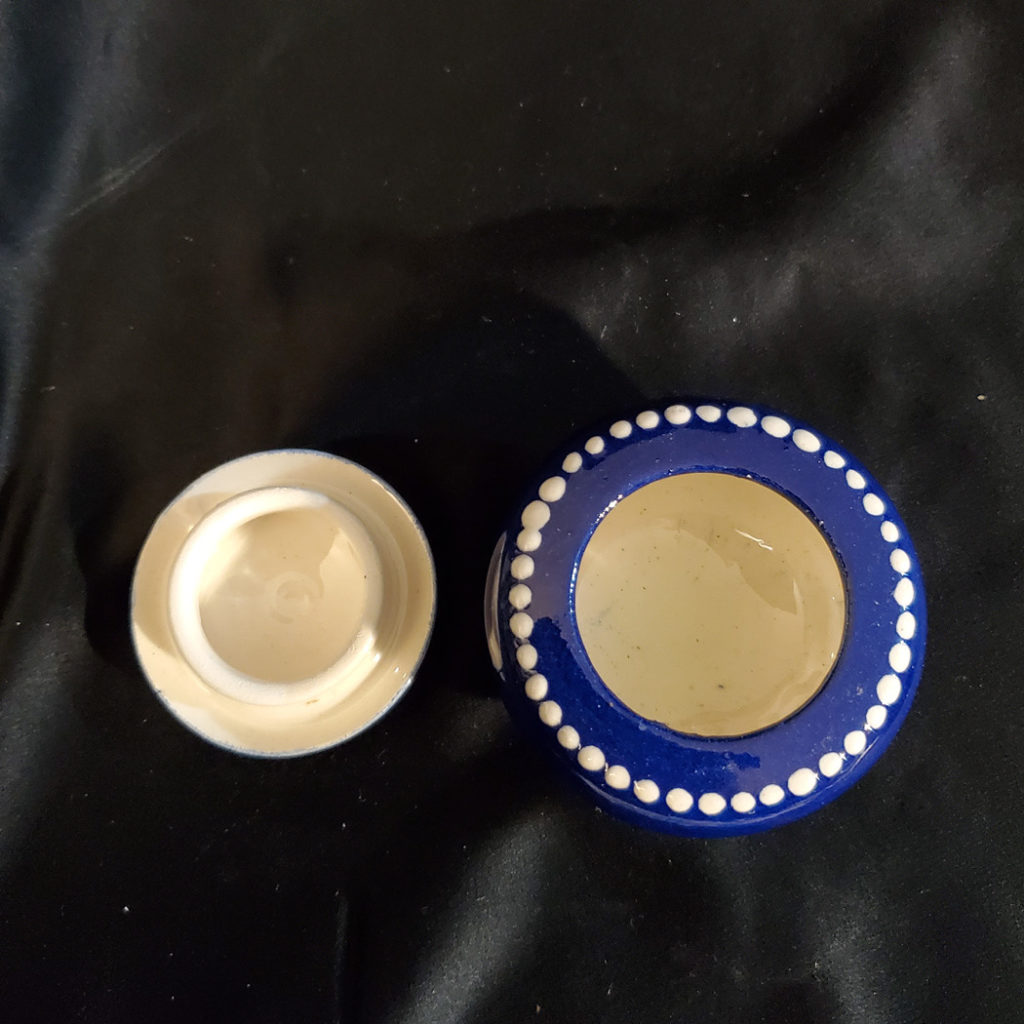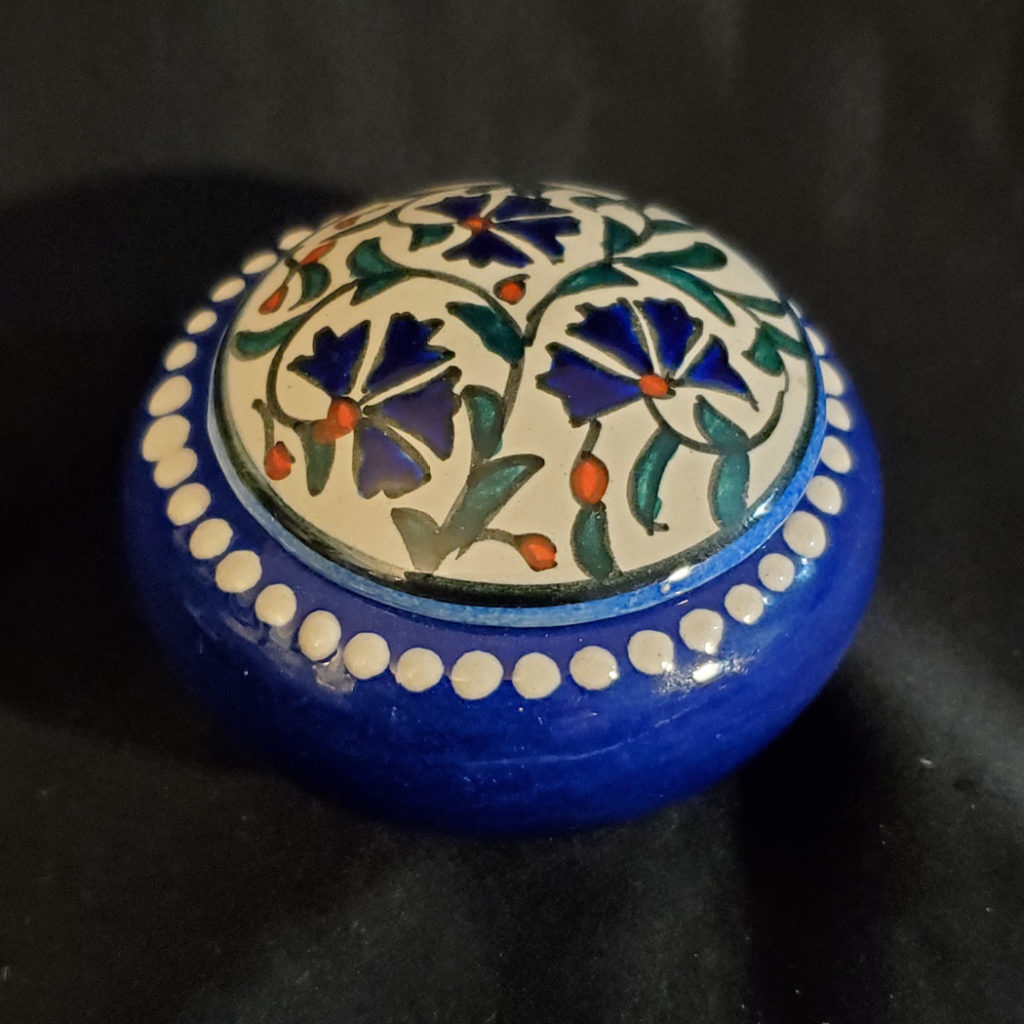The term “Middle Eastern” used here
The term Middle Eastern is used loosely. I will be placing things here from Western Central Asia, through to and including North Africa right to Morocco. There will be a variety of Islamic arts posted. Please return to view more recent items.
#1259 Persian khatam began in the 17th century during the Safavid era and is likely a Persian response to Chinese inlay arts. However, the Persian art quickly became something entirely different and much more elaborate. More colours and materials were used such as gold, silver, brass and aluminium and bone. Persian Khatamkari and Marquetry is unique and instantly recognizable. Inlay work in architecture including both wood and tile is a key characteristic of Islamic architecture. It can be seen in cities such as Mashad, Qom, Shiraz, Rey and all other major centres of Iran. Marquetry is particularly famous coming from Isfahan, Shiraz and Kerman which is where Khatam is mainly practiced.
To learn more about Islamic arts I strongly suggest a visit to the wonderful Agha Khan museum in Toronto where you will find many artifacts including ancient stunning pieces. In many cases they have ancient items found in few places of the world. The museum is the largest of its kind in North America. If you cannot go in person, please visit their web site.
This particular box has Persian painting on the lid. Painting of miniatures goes back to the 13th century. By the 14th century the famous Shahnameh of Ferdowsi had been produced, a work that which has both portrayed and then influenced Persian history and art ever since. there is a well prepared Wiki that gives a good survey of the art form here. The box measures 13.5 x 10 x 6.5 cm.
#1306 Ghalamzani is an Iran ancient metal art. It is repousse / engraving using chisels and hammers on different metals such as gold, silver, copper, brass, and some alloys. Its origin dates back to 5-7 thousand years ago; though its documented history goes back to Sassanid era, about 700 A.D. Isfahan is the main centre for this art. The most common is to work in copper and then “tin it” with a coating of silver allowing the copper to show through.
This tray has a traditional motif of peacocks or pheasants and flowers. It is 33 cm or about 13 inches. I cannot determine age but believe it to be about 90-100 years old.
#1373 Meenakari wall plate of unusual design and colouring. Most are blue shades without this much white. The scene is Naqsh-e Jahan square looking towards the Sheikh Lotfollah Mosque. The Mosque looks different today. The entrance is all amazing blue tile not mostly white as pictured here. I found a picture taken in the 1950s that had it looking more like this. Perhaps the tiles had been damaged and were being restored as the 19th century pictures show it as it looks today.
Researching this art form, you find that the style is not only rare but this example is a fine one depicting a period where things looked different than they do today. It is hard to date this definitively but I would say between the 1920s and 1950s.
#1551 Meenakari dish of unusual design and colouring. Most are blue shades without this much white. It has a floral centre. I would say this is likely from the 1950s or earlier. It measures 24 x 15 cm.
#1437 Handmade and hand painted Moroccan Fes ceramic jewelry box. this jewelry box presents a Moroccan know-how unique in the world it is a marriage of ceramic and metal. The metal used is nickel silver, an alloy, of copper, zinc, and silver. This alloy is very flexible and it helps to work and to weld and it never darkens. This little work of art is used as a luxury jewelry box, in the bedroom on the bedside and in the bathroom. It measures 8.5 x 7 cm.
#1436 Handmade and hand painted Moroccan Fes ceramic jewelry box. this jewelry box presents a Moroccan know-how unique in the world it is a marriage of ceramic and metal. The metal used is nickel silver, an alloy, of copper, zinc, and silver. This alloy is very flexible and it helps to work and to weld and it never darkens. This little work of art is used as a luxury jewelry box, in the bedroom on the bedside and in the bathroom. It measures 7 x 7 cm.
#1040 This plate, signed by Altin is an example of Iznik pottery designs from Kütahya. It measures 19 cm.
The word “çini” or “cini” is somewhat synonymous with ceramic in modern Turkish, but it strictly means Iznik pottery in some contexts. However historically there was a difference in usage. While the Turks called the pottery used as household ware as “evani”, they named the Turkish tiles as “kaşi”. The word “cini” can be translated roughly as “something from/related to China” and has gained its meaning in a relatively late period.
#1257 Ornate artistic metal work in Turkey dates back more than 2000 years. In recent times, Turkey has been famous for the export of etched copper such as this vintage ewer. Learn more here. The size is 23 x 13 cm.
#1543 These teacups were made in Japan by Yamaguchi Toki in the 1950s branded as “Jyoto China.” They were imported into the Middle East by various companies who marked the sets. My research show that they were imported into Arab countries by the Al-Masaa Trading Company marked SBM and Arabic writing.
These ones were imported into Iran and marked KPM with Persian script. I have not been able to find the trading company that brought them to Iran, but am told that they were quite popular many years ago and are familiar to many Iranians.
#1214 Attractive small Iznik vase. It measures 10.5 x 6 cm. There is a small fleabite on the rim and it is priced accordingly.
#1439 These are traditionally decorated Iznik candle holders. They are very likely Turkish. They measure 5.75 x 9.75 cm.
#1441 This decorative plate has an 8-point star with flowers. The star is known as the khatim or khatim-sulayman, meaning “seal of the prophets.” It measures 14.75 cm.
#1440 This vintage Iznik plate from Turkey is decorated with an Islamic prayer. It measures 13 cm across.
#1442 Turkish Kütahya wall plate by Güven Çini company. The company was founded in 1940 by Kadir Adlım who was following in the footsteps of his father Hacı Halil Adlım who had been making this pottery since 1927. the plate measures 13.75 cm.
Please note: I have struggled with the terms Iznik and Kütahya as many sources tend to use them interchangeably. The Ottoman ceramics came to be known collectively as Iznik, the name is a reference to one region. Kütahya was developed primarily as a folk art and Iznik as Palace art. Following the decline of the Ottoman empire there was a reduction in this art until a revival in the mid century. Both used similar techniques, subjects, colours, styles, characteristics such that it is difficult or even impossible to distinguish between them. This plate is identified by the artist as Kütahya.
#1245 This teacup is marked Jerusalem in Roman lettering and also has an Armenian inscription. The story about this artform is an interesting one. The work IsIznik fritware in style. Three Armenian families, known for their pottery, were invited in 1919 to retile the Dome of the Rock. They stayed and have developed the Armenian Jerusalem pottery that is still produced today. In the 1960s one of those familes also was commissioned to work on the Arabic and English street signs of the old city. You can learn more about this story here. This cup has been dated to the 1960s.
The cup measures 9 x 7 x 4 cm and the saucer is 11.5 cm across.
#1381 These two plates can be sold separately or together. They are made by the same artist and do look very good together. They measure22 x 2.5 cm.
The word “çini” or “cini” is somewhat synonymous with ceramic in modern Turkish, but it strictly means Iznik pottery in some contexts. However historically there was a difference in usage. While the Turks called the pottery used as household ware as “evani”, they named the Turkish tiles as “kaşi”. The word “cini” can be translated roughly as “something from/related to China” and has gained its meaning in a relatively late period.
#1486 This is a small Persian camel bone box with original hand-done painting on it. I have marked it down as there is some damage to the miniature painting but it is still very interesting and attractive. Camel bone boxes are an art form together with miniature painting in Iran and go for quite high prices. This one measures 5 x 5 x 3 cm.
#1487 This is another Persian miniature box with hand painted image. These are tiny boxes so just imagine what is required to paint these intricate images on them. Camel bone boxes are an art form together with miniature painting in Iran and go for quite high prices. This one measures 5 x 5 x 2 cm.
#1501 The green box is signed Kasi it is Kutahya ceramic and is an example of Iznik design. It measures 4 x 6.5 cm.
#1502 The blue and white box is signed K. IO. and Boğaziçi hand made on the bottom. It is an example of Iznik design. It measures 4 x 6.5 cm.
#1503 This multicoloured covered porcelain box or jar is unmarked but of the style of the Iznik pottery of Turkey. It measures 6 x 7 cm.


